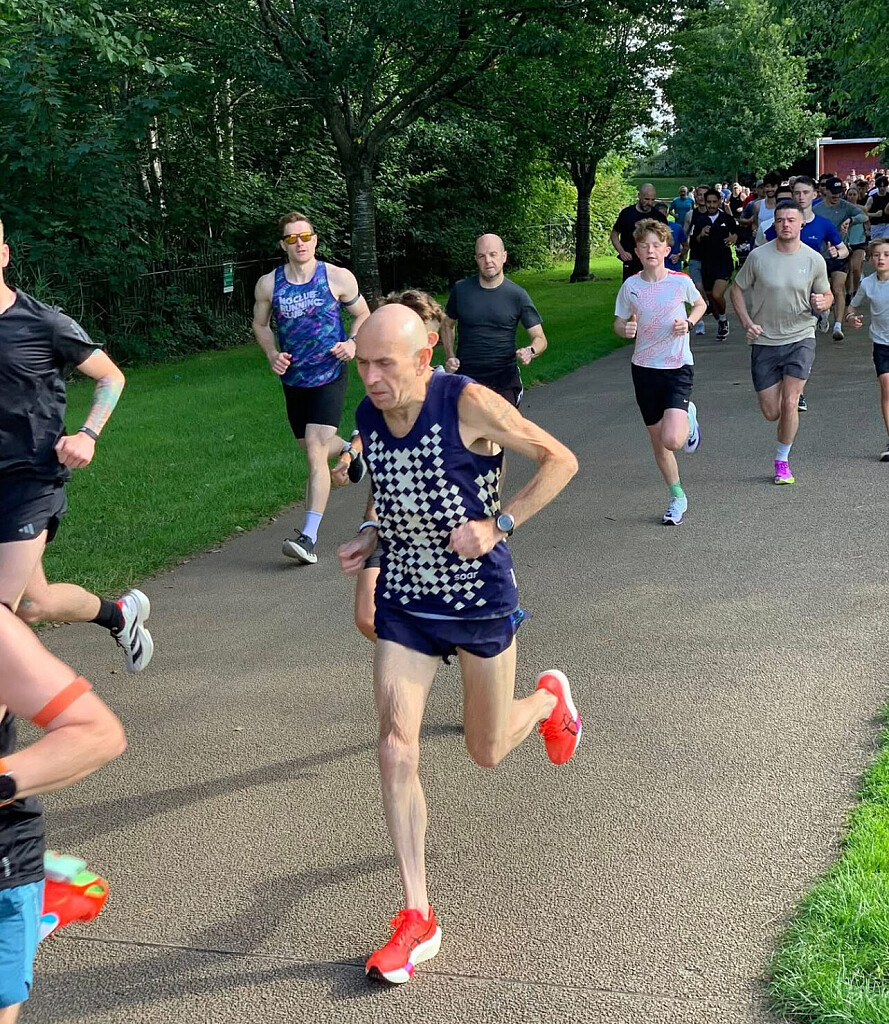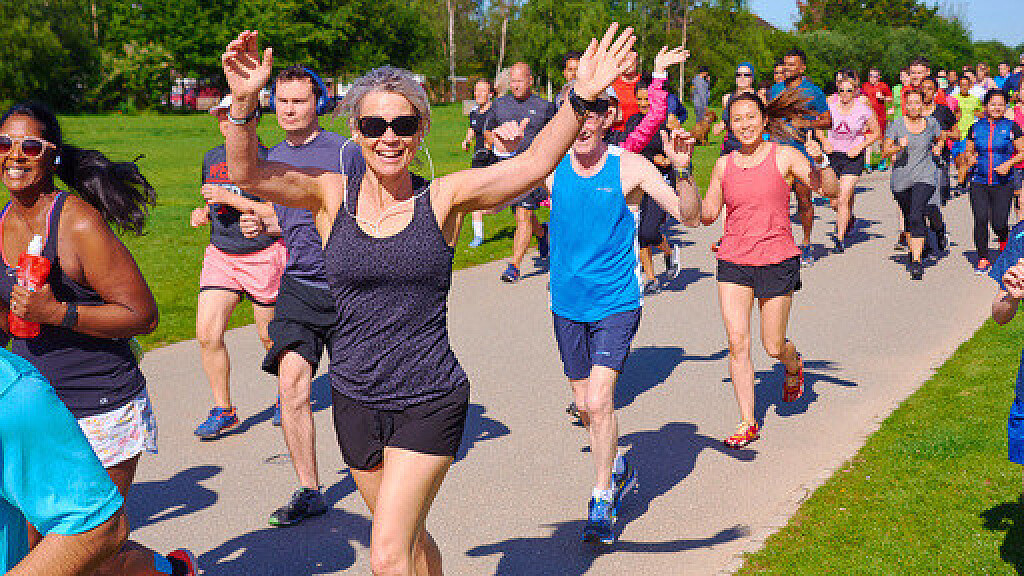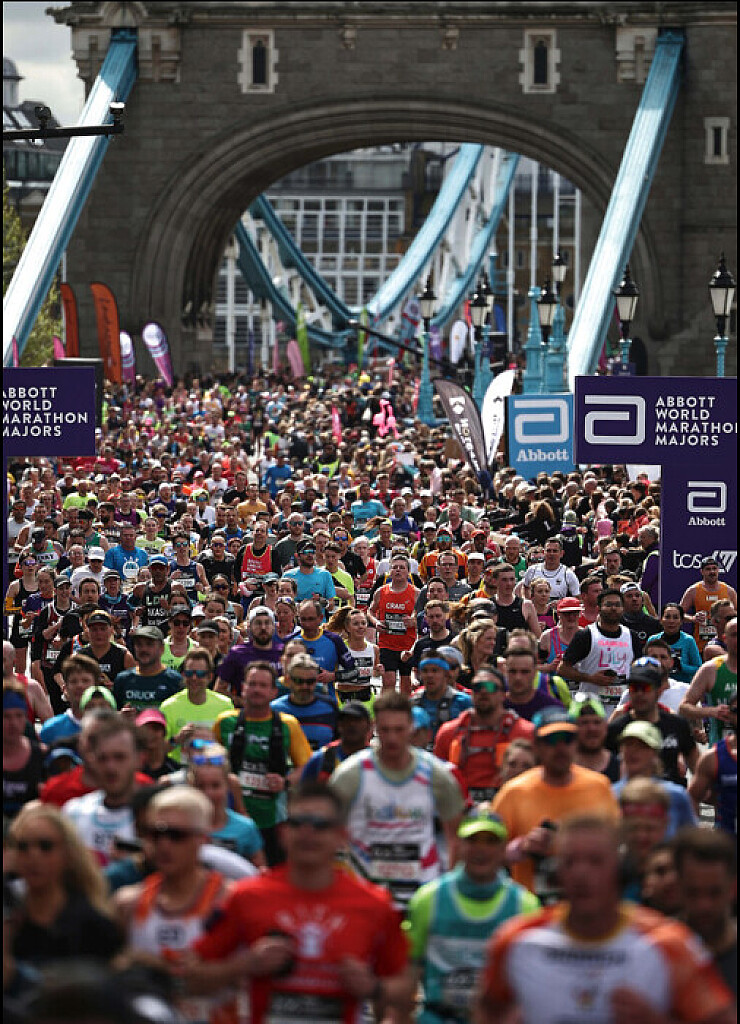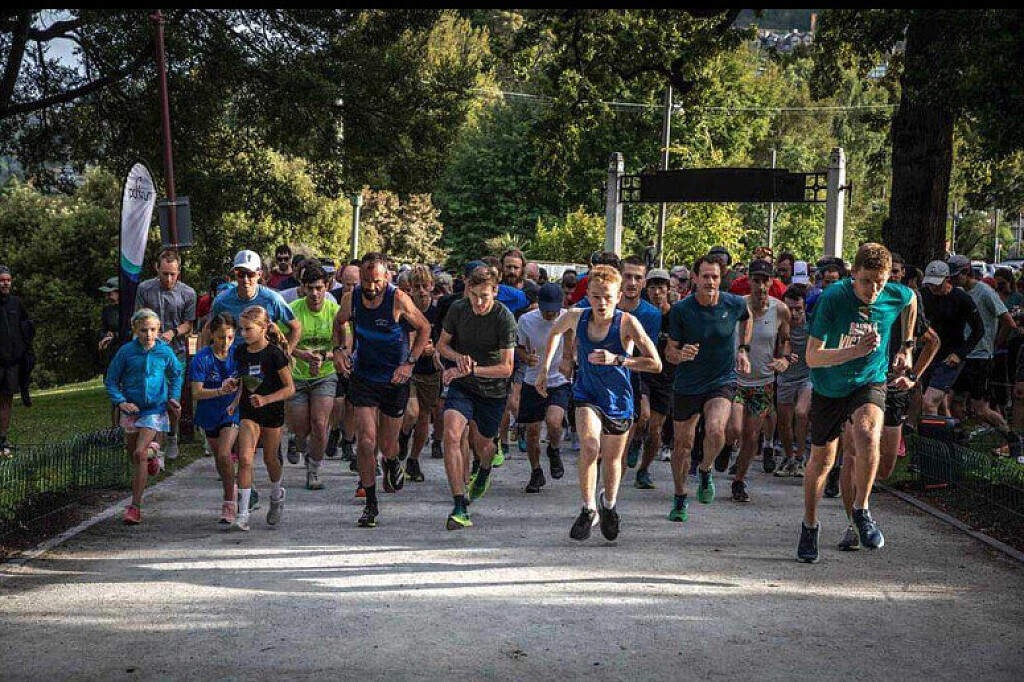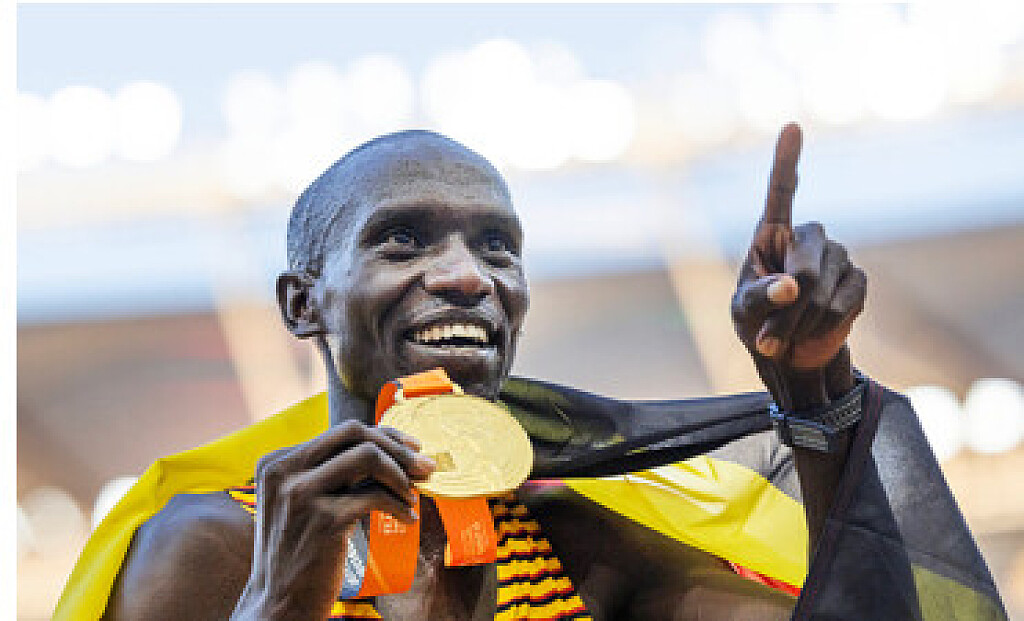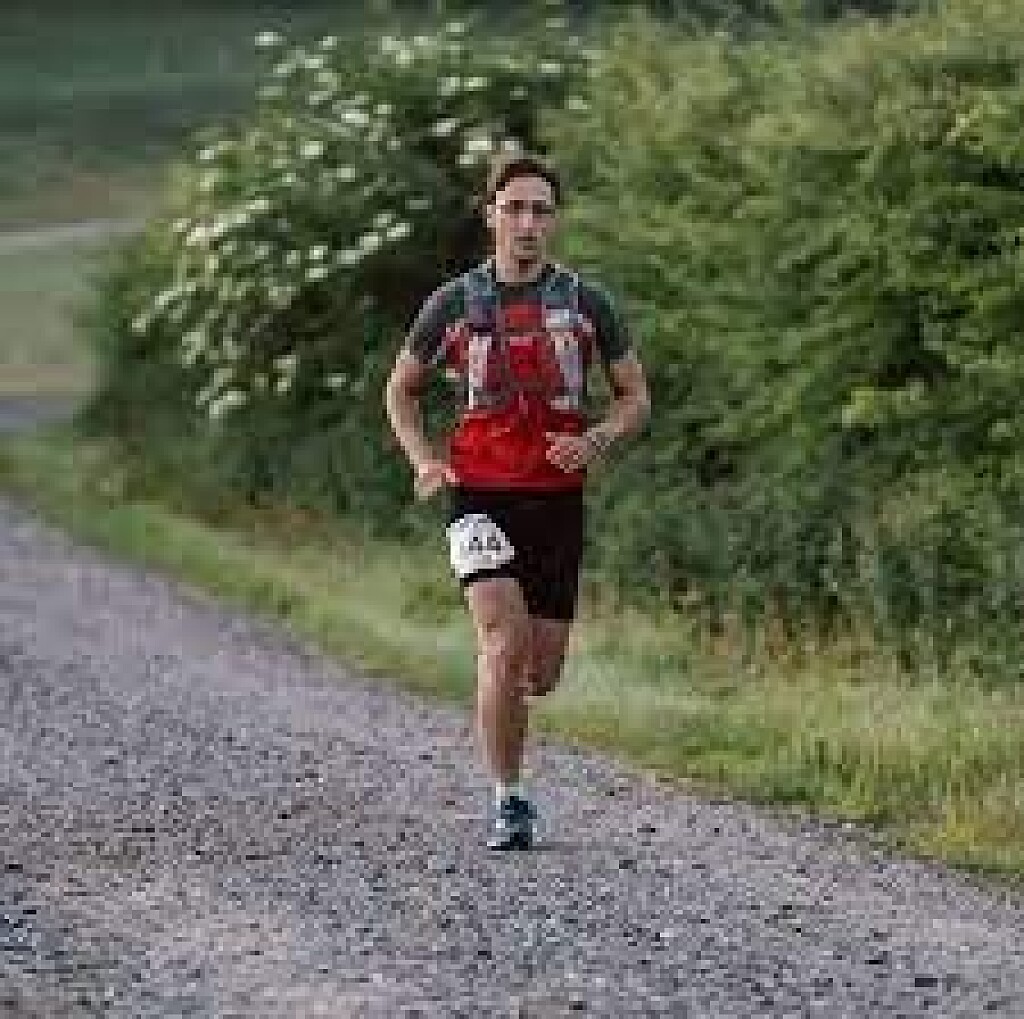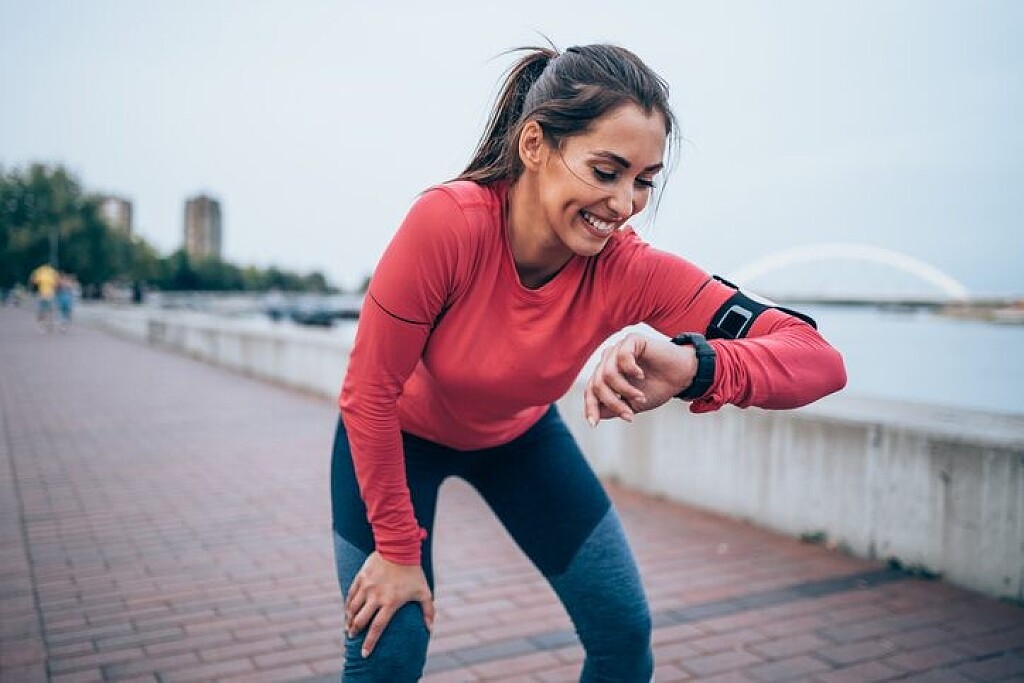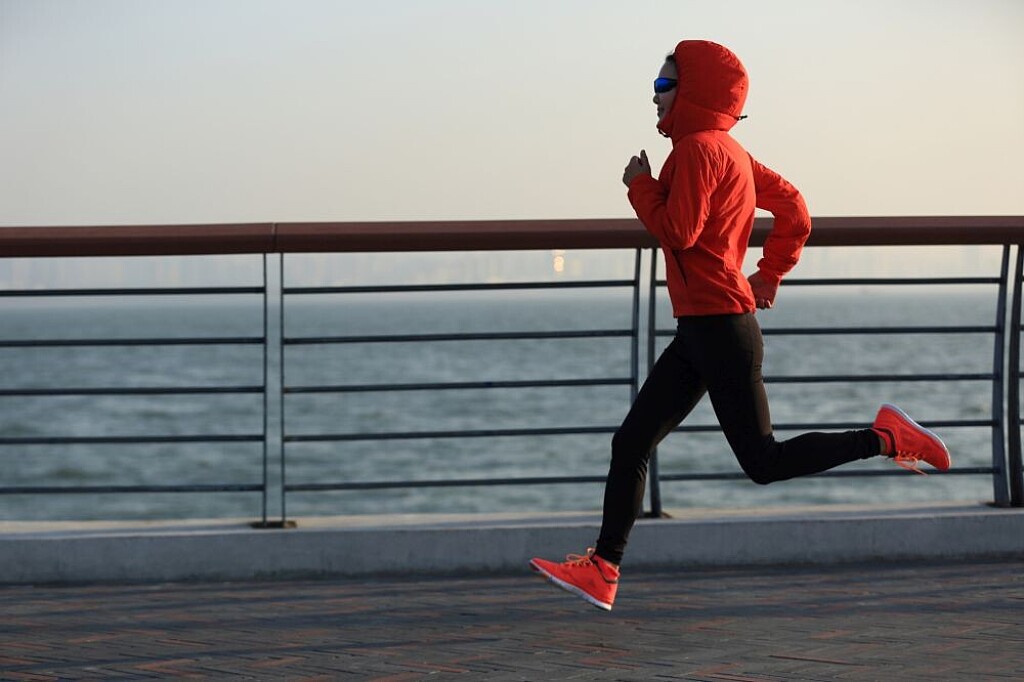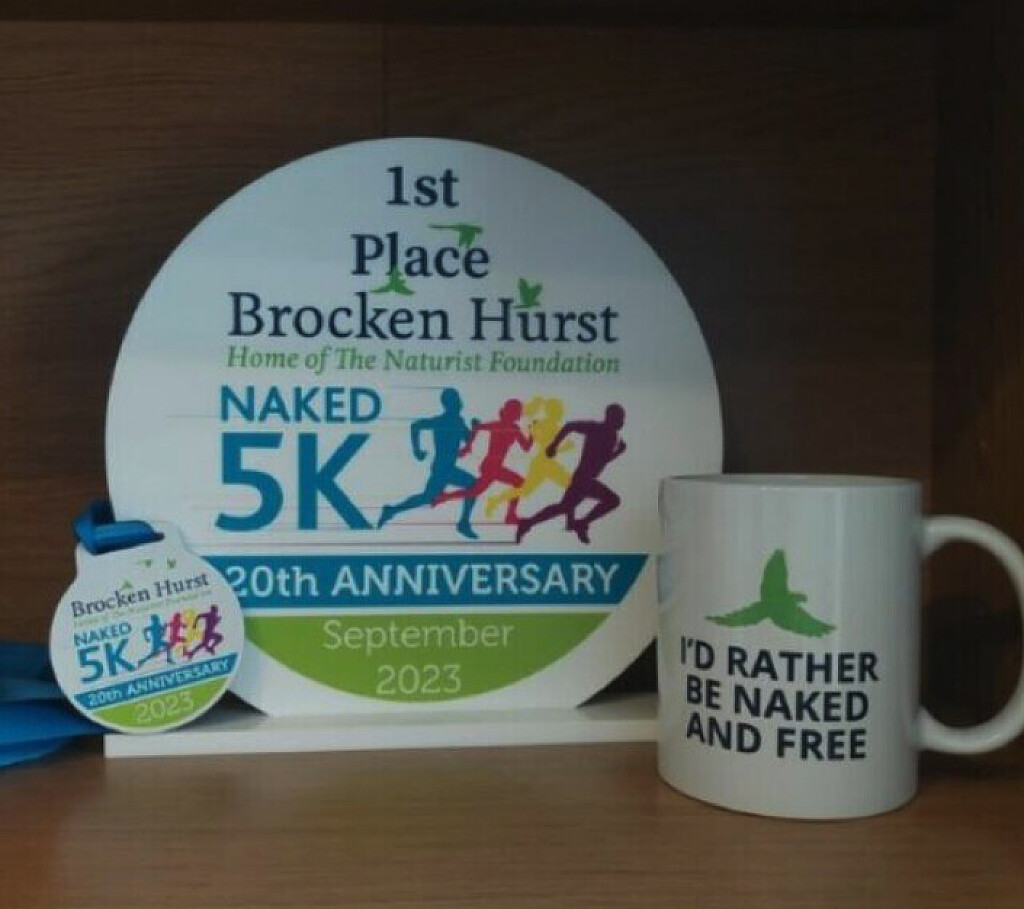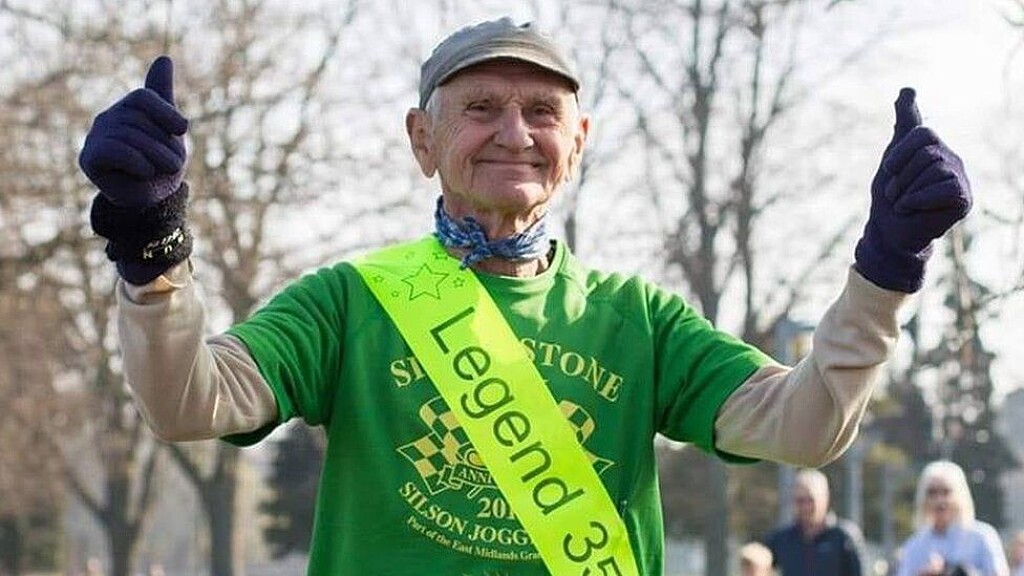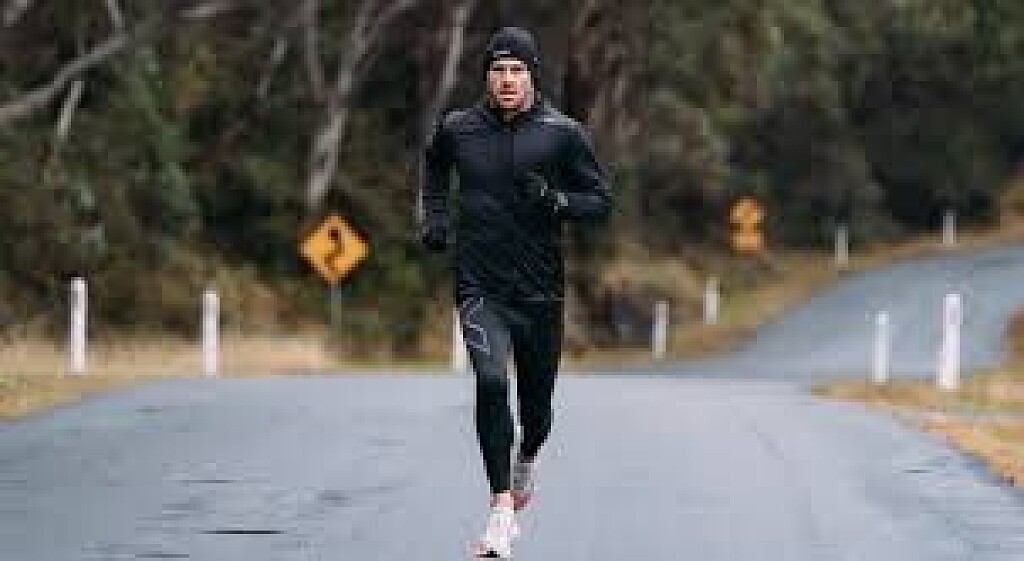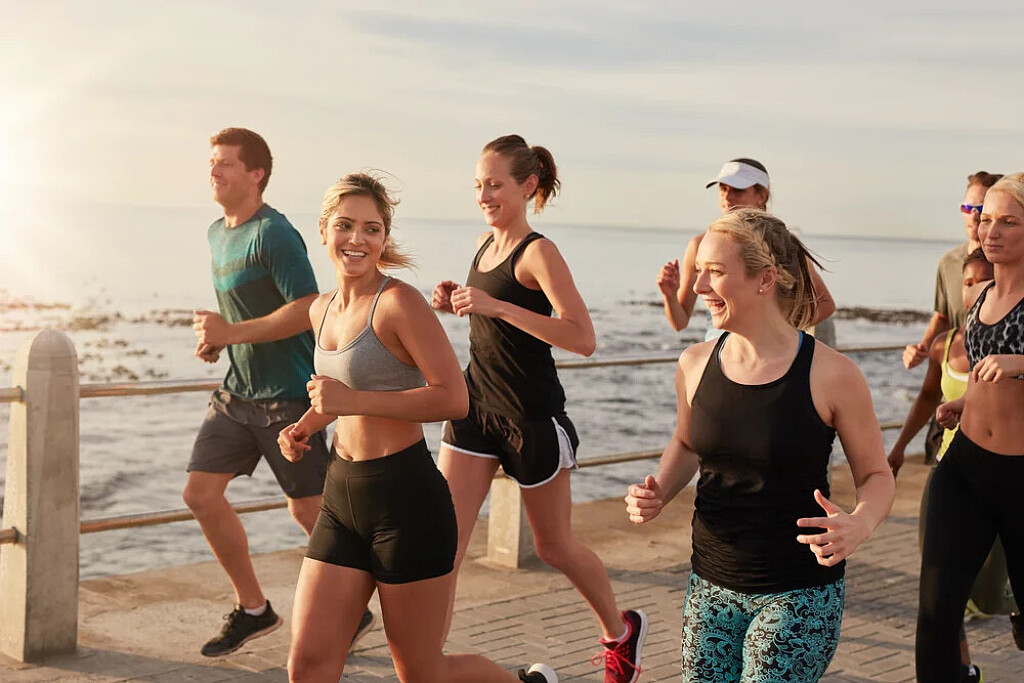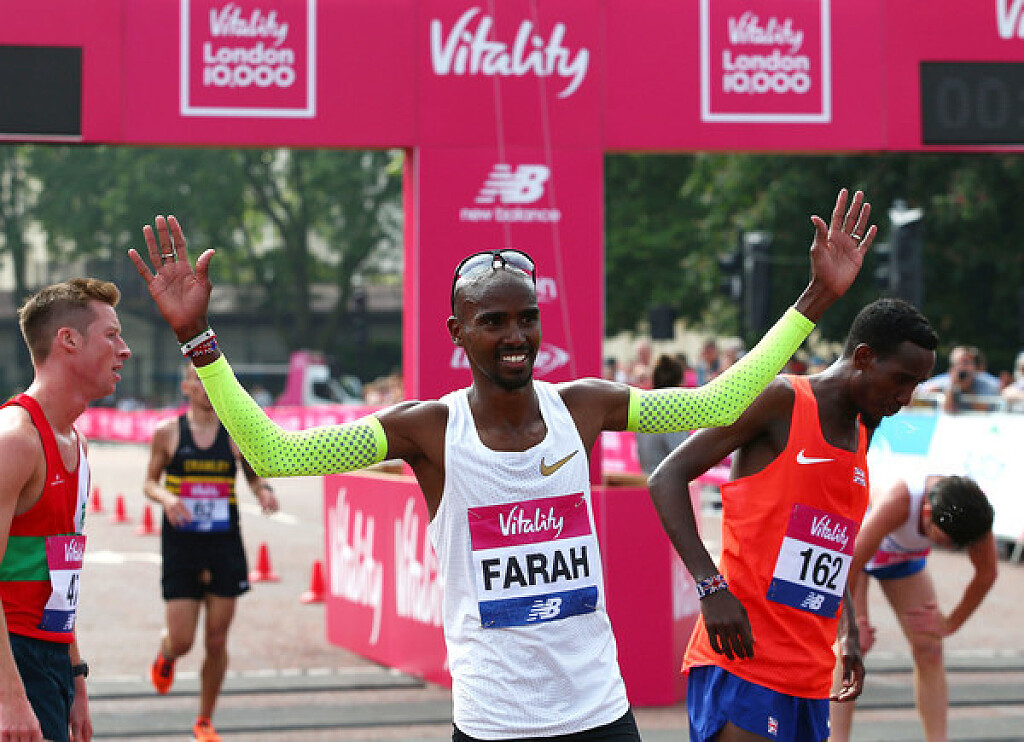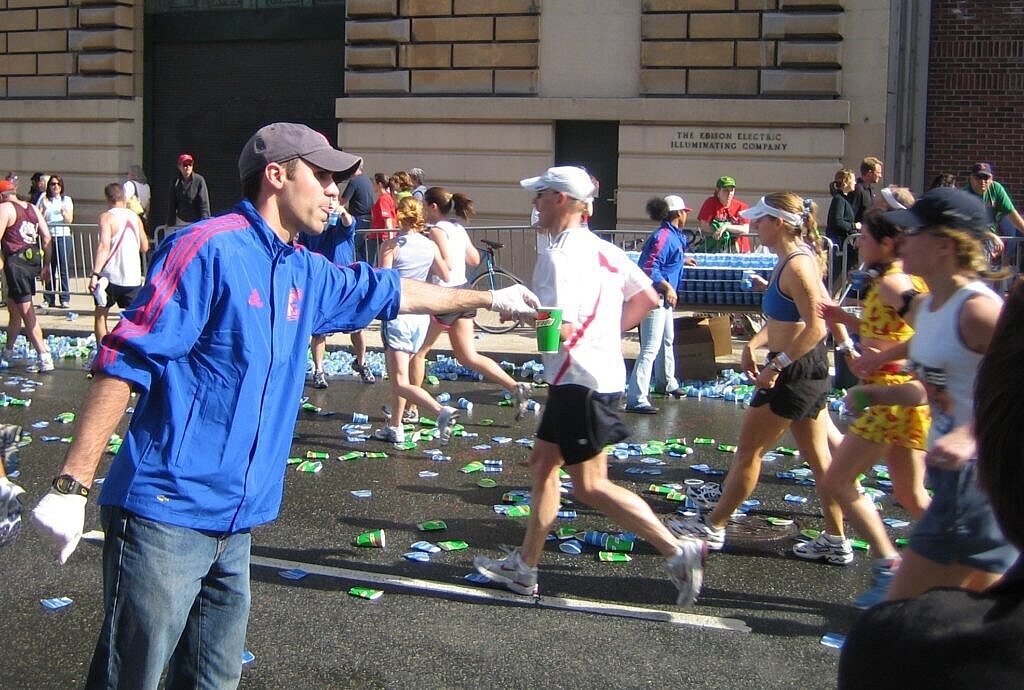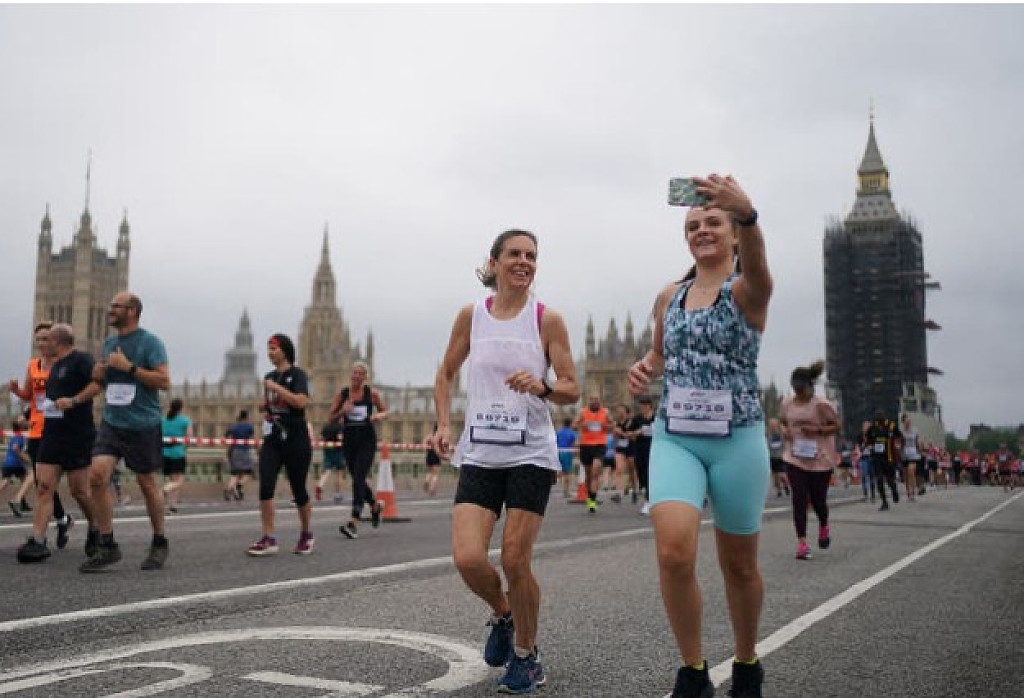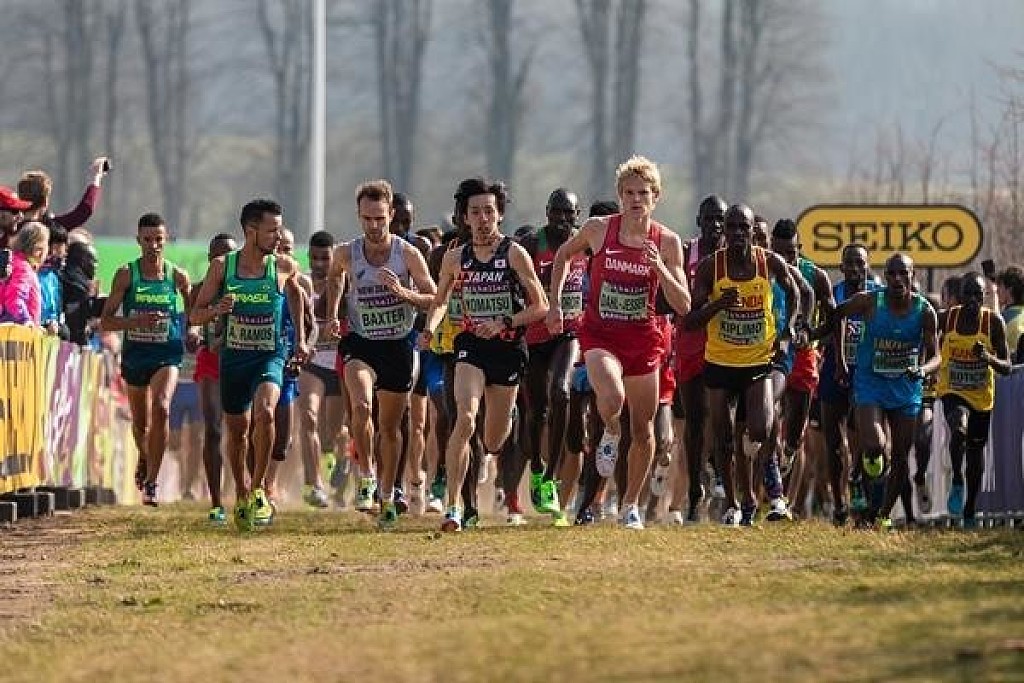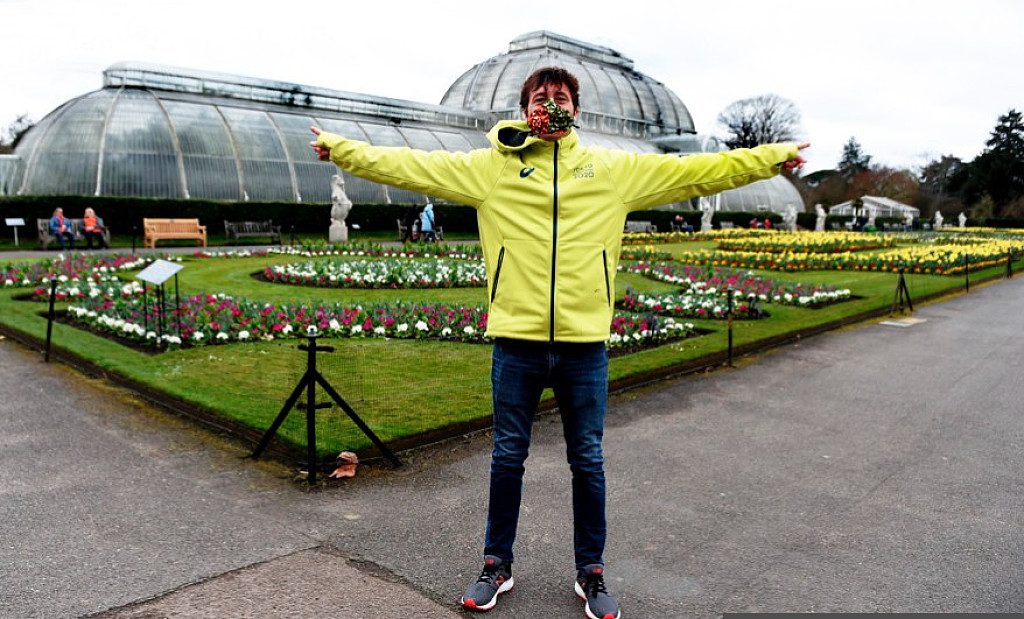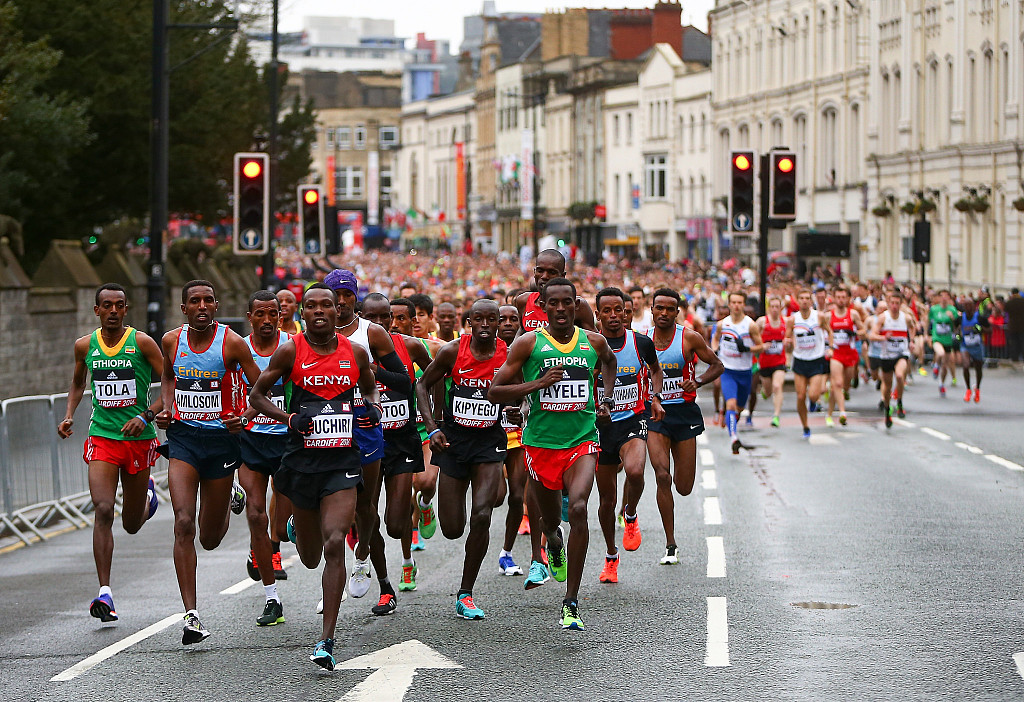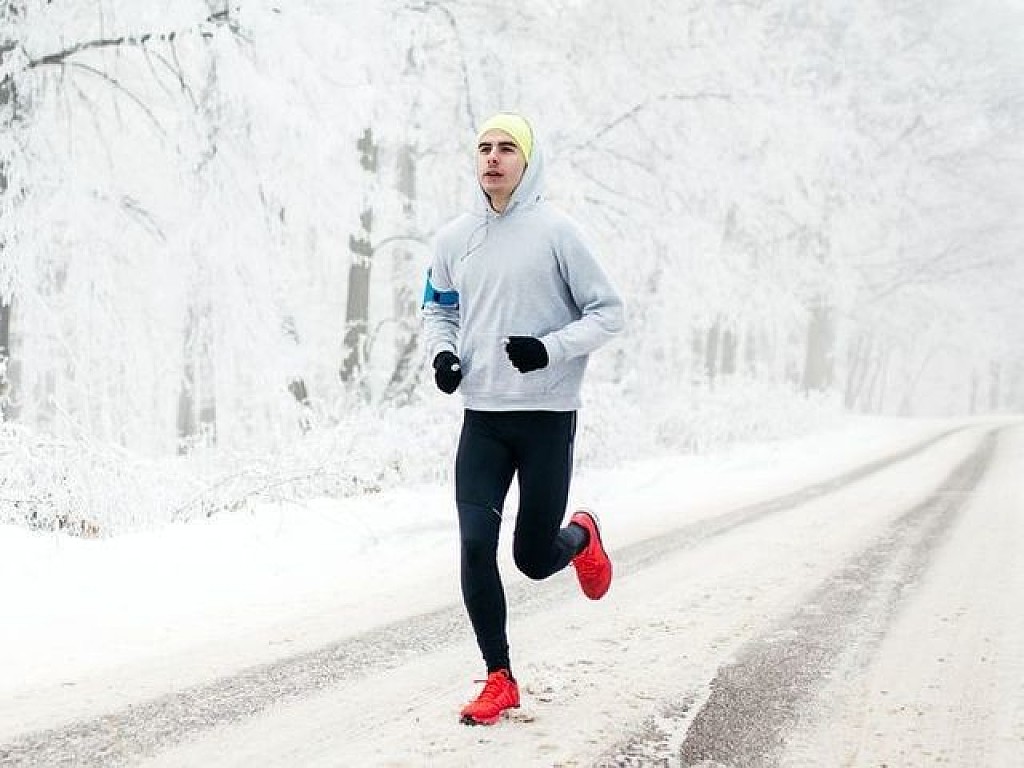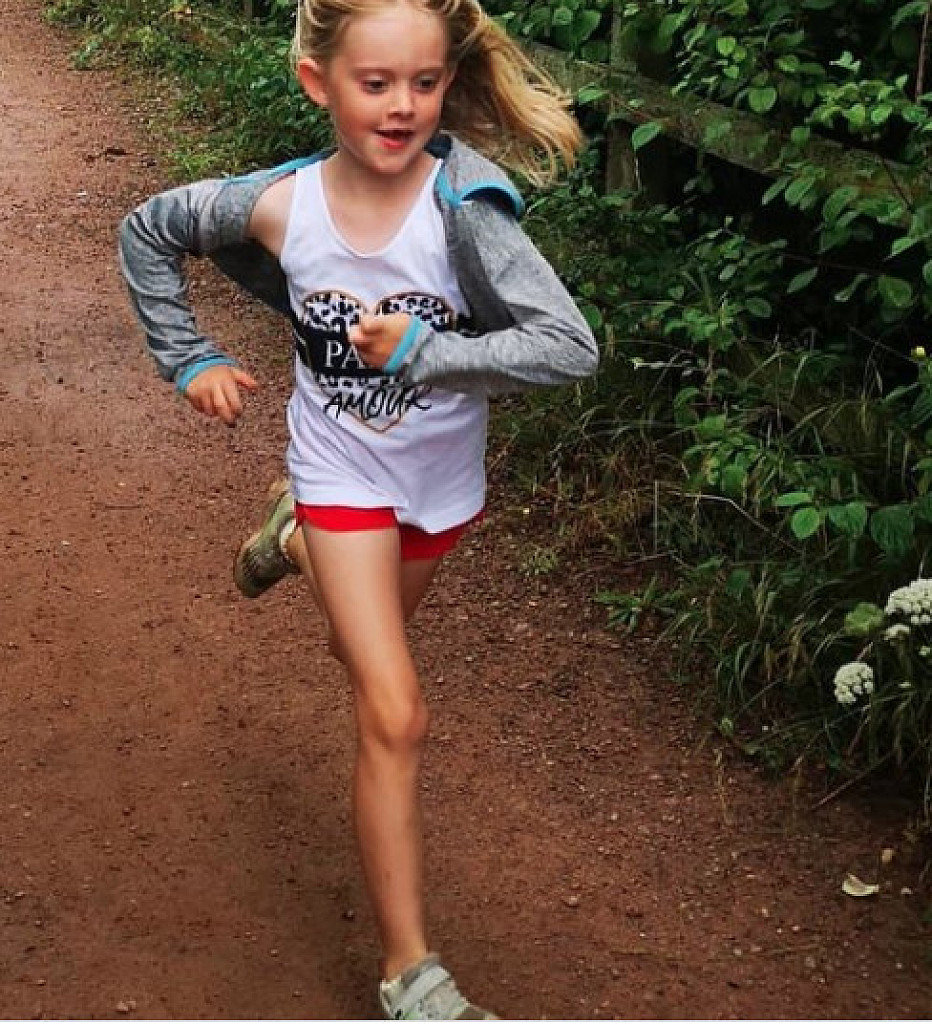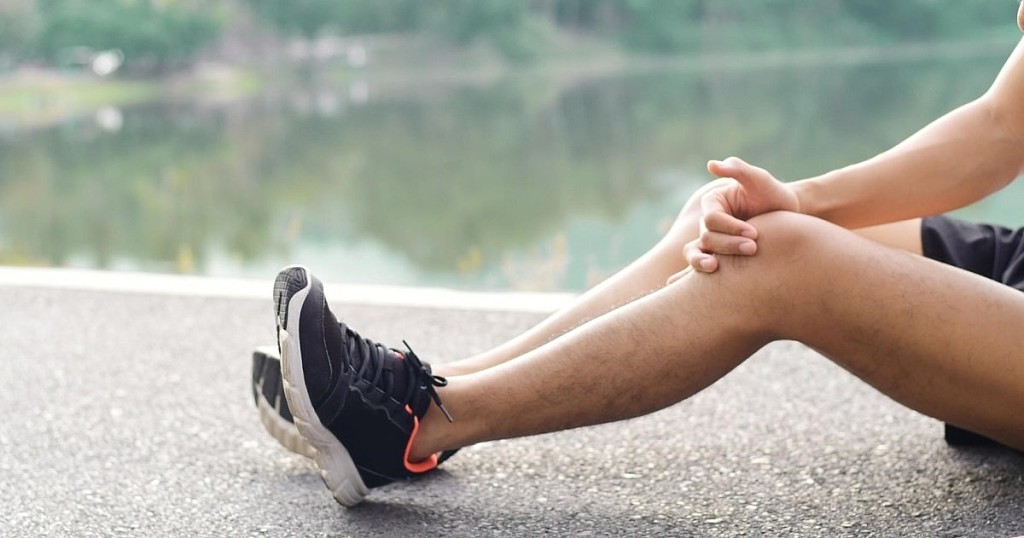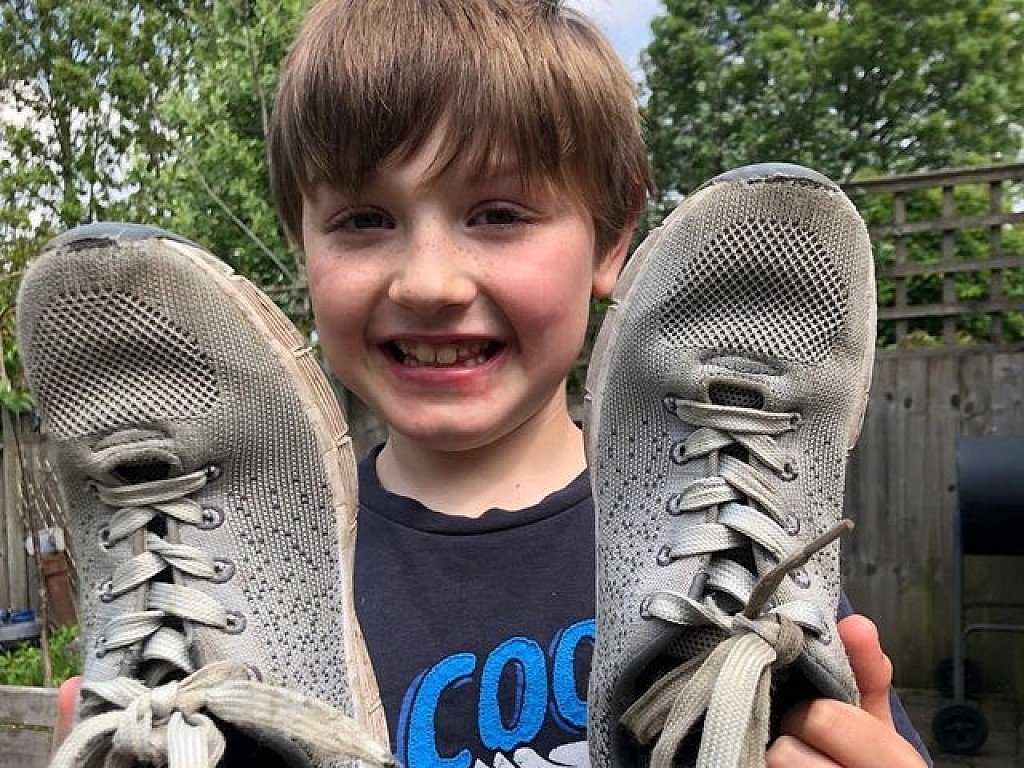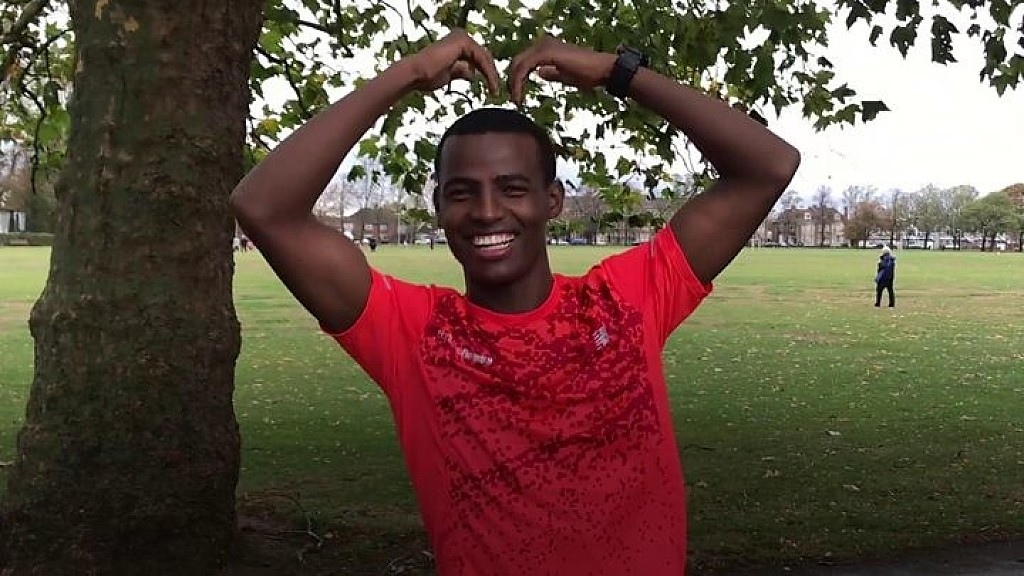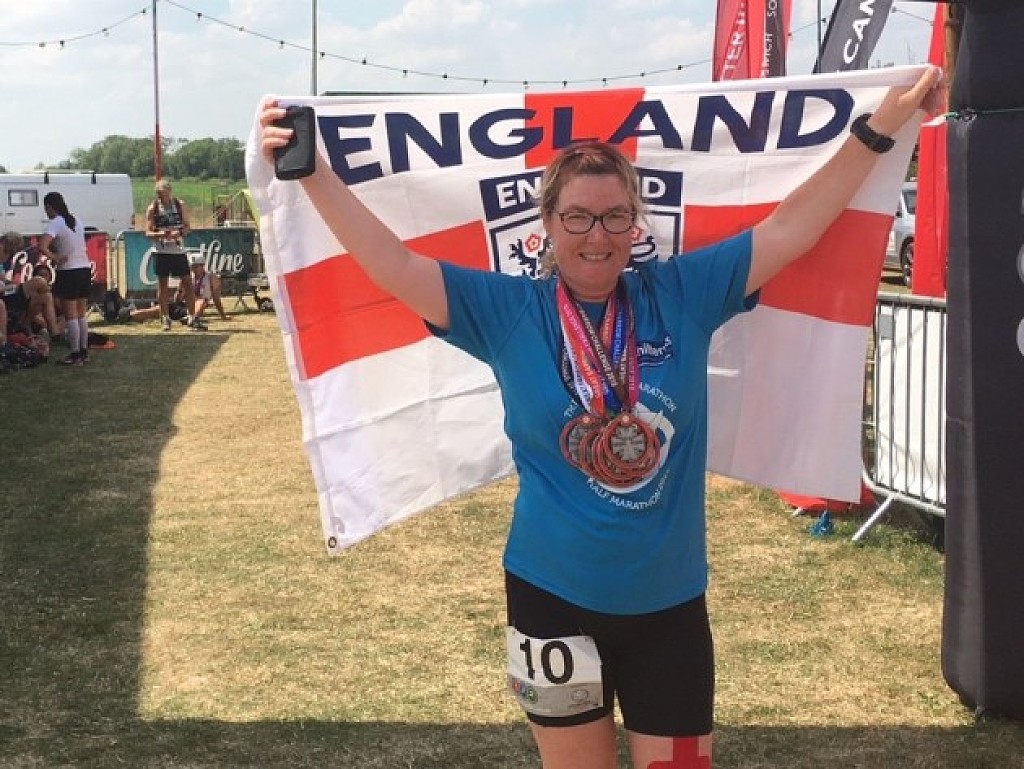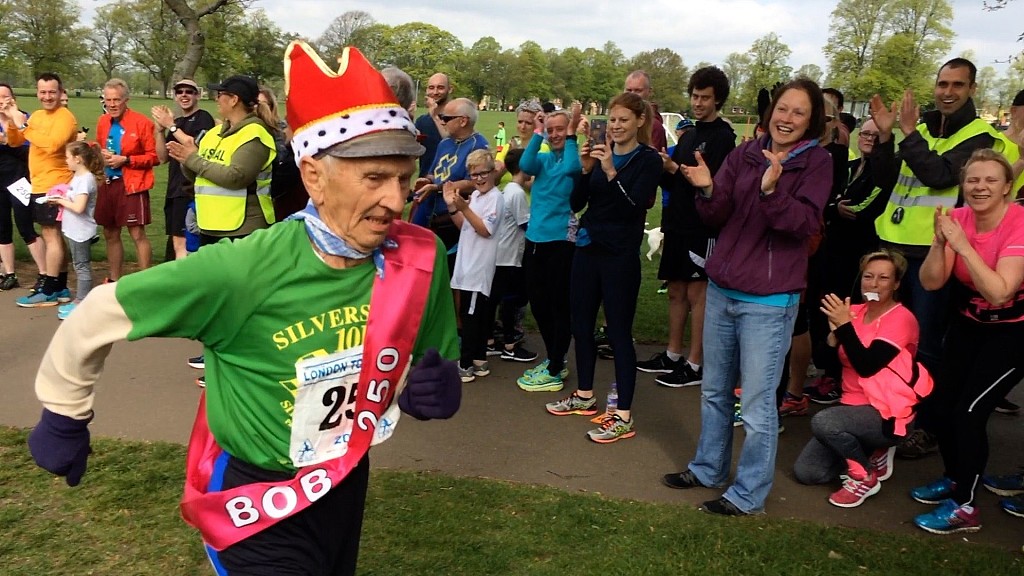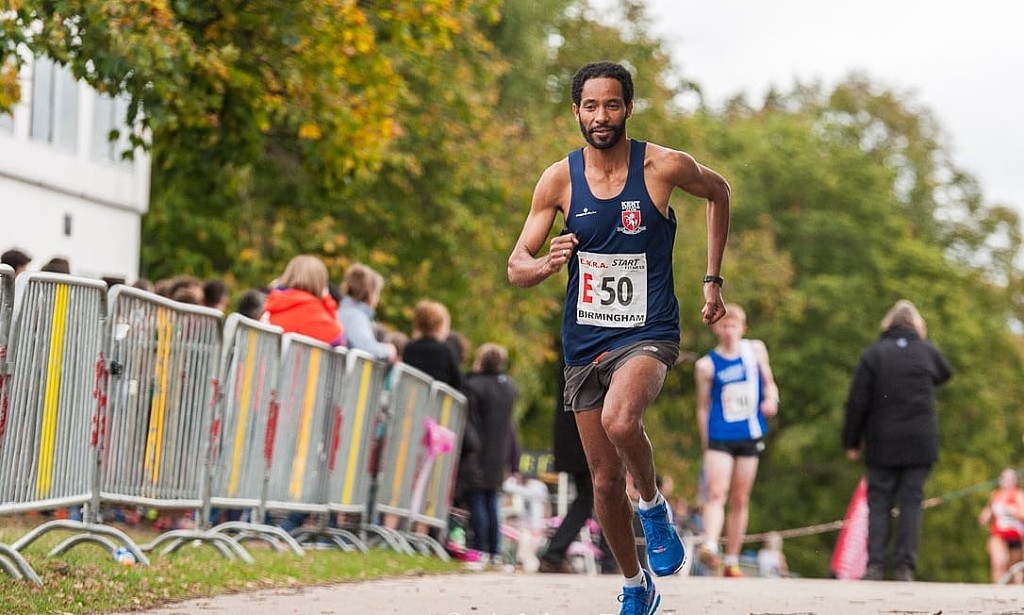Running News Daily
Running News Daily is edited by Bob Anderson. Send your news items to bob@mybestruns.com Advertising opportunities available. Train the Kenyan Way at KATA Kenya and Portugal owned and operated by Bob Anderson. Be sure to catch our movie A Long Run the movie KATA Running Camps and KATA Potato Farms - 31 now open in Kenya! https://kata.ke/
Index to Daily Posts · Sign Up For Updates · Run The World Feed
Articles tagged #Parkrun
Today's Running News
Tommy Hughes Matches Legendary Ed Whitlock’s 65+ 5K Mark in Belfast
On August 2, 2025, at the Victoria Belfast Parkrun, 65-year-old running sensation Tommy Hughes clocked a blistering 17:24 for 5K — tying the official world best for men aged 65–69.
The mark equals the time set by the late Canadian master runner Ed Whitlock, who ran 17:23 25 years ago at age 67. Whitlock’s record has long been one of the most revered in masters running, symbolizing an extraordinary blend of speed and longevity.
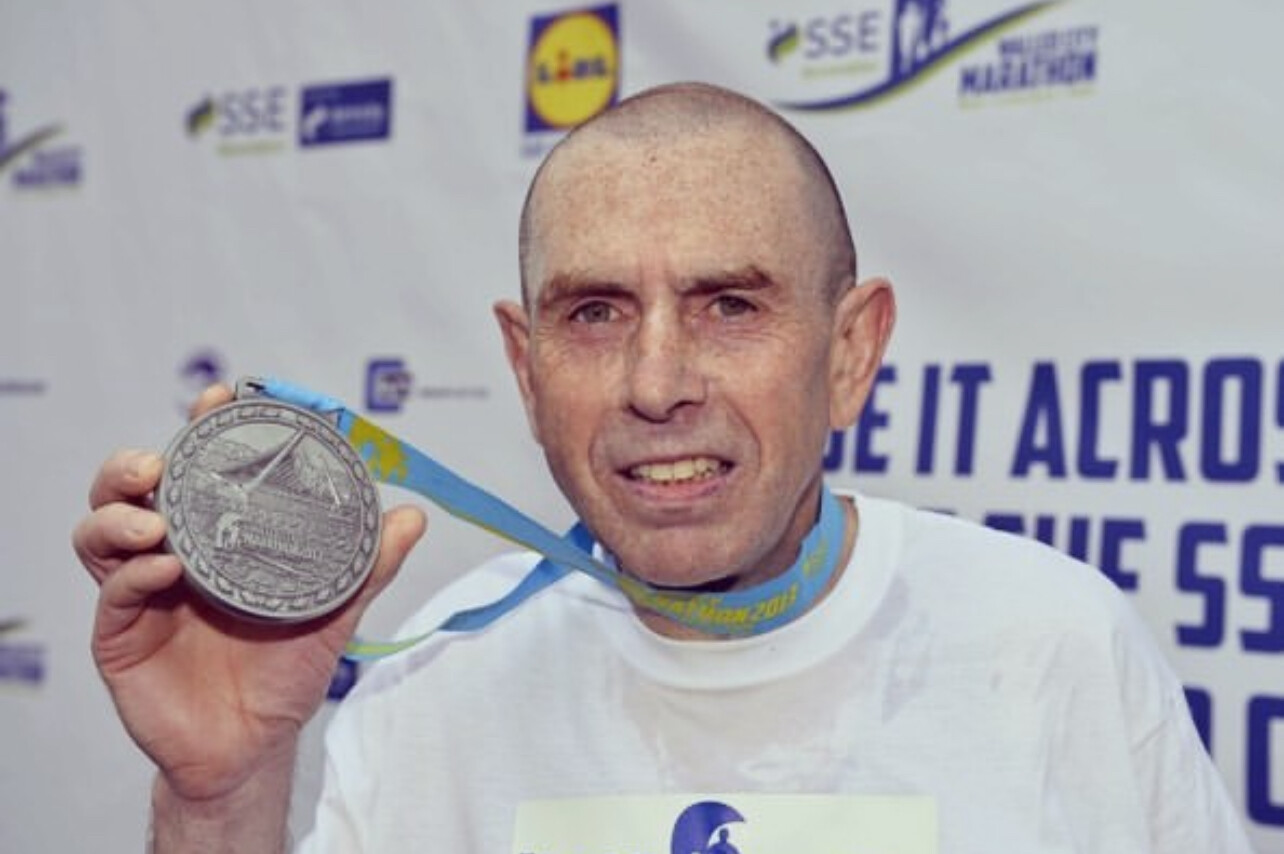
Hughes, known for his remarkable consistency and endurance across decades of racing, once again demonstrated that age is no barrier to elite-level performance. His run in Belfast was not only fast but also symbolic — a connection between two generations of masters running legends.
The Victoria Belfast Parkrun, part of the global Parkrun network, provided the perfect backdrop: a fast, flat course and a supportive running community. For Hughes, it was another milestone in a career that has spanned everything from marathons to track distances, and now includes a share of one of the most iconic age-group marks in distance running history.
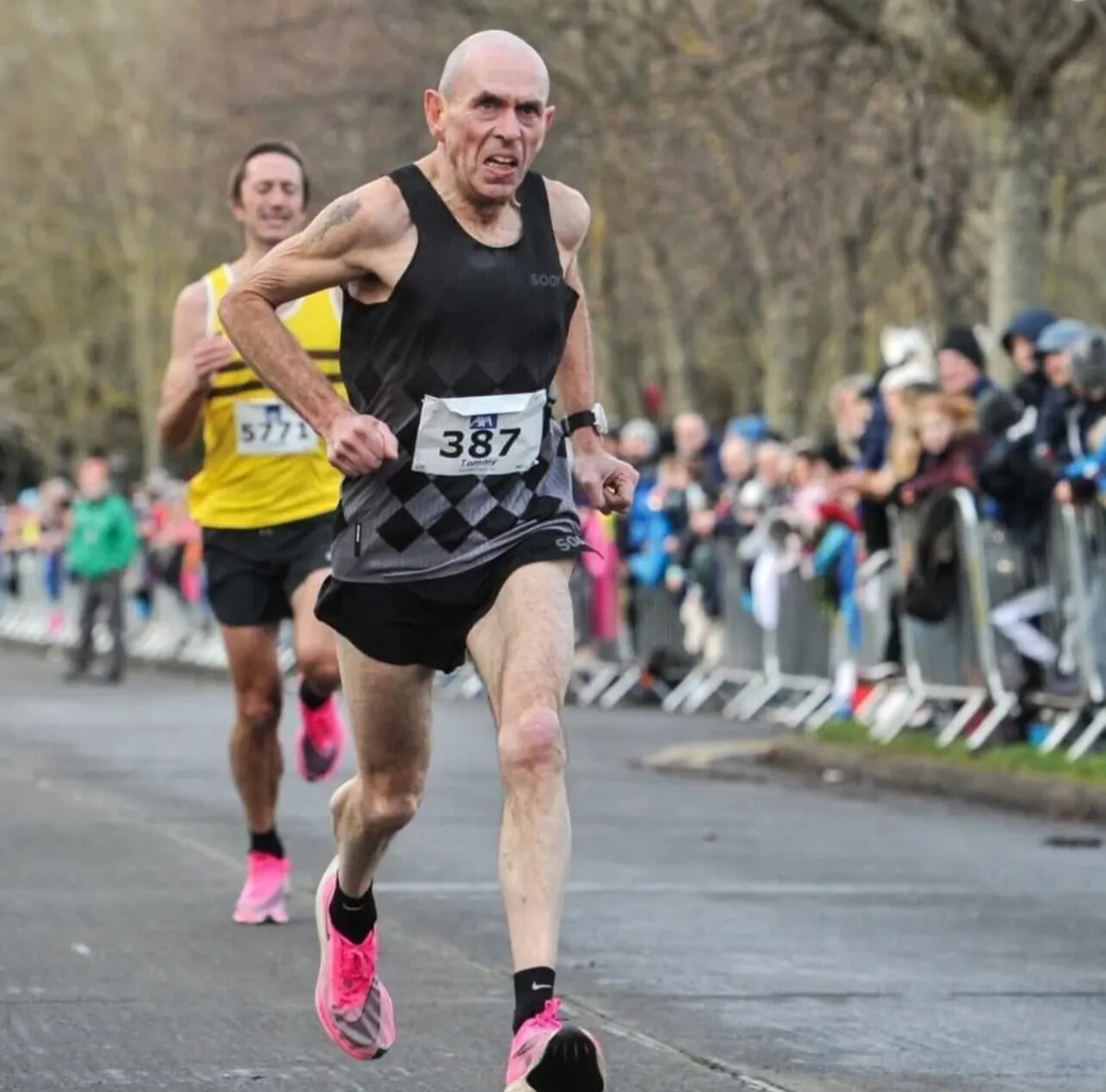
With Hughes still in top form, the question now is whether he can find that extra second to eclipse Whitlock’s long-standing time — and make the record fully his own.
by Boris Baron
Login to leave a comment
Exploring a New City in an Hour: Parkrun’s Global Appeal
What defines the perfect trip to a new city? For some, it’s the thrill of discovering a charming café tucked away from the bustling streets, engaging with locals who share their culture and stories, or enjoying a leisurely activity that lets you experience the city beyond its typical tourist attractions. Imagine if you could achieve all of this—while staying active and seeing a slice of local life—in just about an hour. What’s more, it’s available in over 2,500 locations across more than 20 countries, and it’s completely free.
Enter Parkrun, the global mass-participation 5K running event that has become a staple for both seasoned runners and beginners alike. Founded in London, Parkrun celebrates its 21st anniversary this year, cementing its place as a unique initiative that combines fitness, community, and accessibility. For travelers who are short on time but keen on a meaningful experience, it’s an enticing proposition.
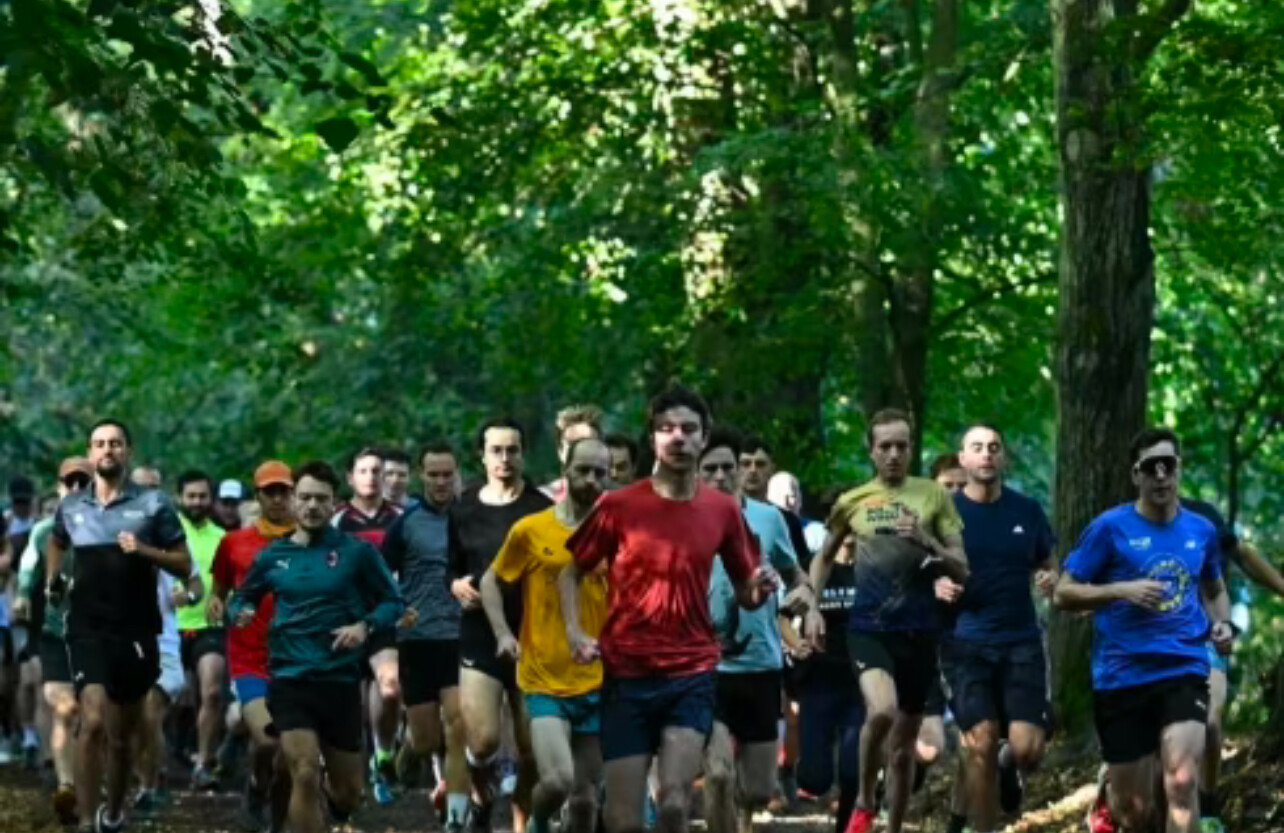
The Parkrun Experience
Participating in Parkrun couldn’t be easier. All it requires is a spare Saturday morning, a comfortable pair of running shoes, and your personalized barcode—a simple phone or watch-based system that tracks your performance across any Parkrun event worldwide. It’s a seamless way to stay active during your travels while engaging with locals and like-minded runners.
Each event follows a similar format: a 5-kilometer route through parks, forests, and scenic trails. Despite its name, Parkrun is inclusive of all abilities—whether you’re running at your fastest pace or enjoying a casual walk. The emphasis is on participation rather than competition. Many runners describe the experience as a celebration of movement and community rather than a typical race.
For travelers, Parkrun offers a chance to explore unique spaces that often lie beyond the standard guidebook recommendations. Whether it's a historic park in London, a scenic trail in Cape Town, or a beachfront route in Sydney, you’ll be immersing yourself in the local landscape.
Building Global Connections
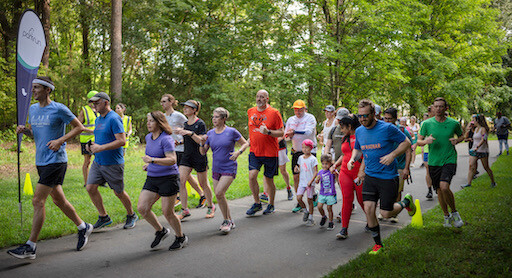
Beyond the physical activity, Parkrun fosters a sense of global connection. Every event is volunteer-led, with locals stepping up to organize, cheer, and support participants. This welcoming atmosphere gives travelers an authentic glimpse into a city’s culture and its people. You may even find yourself sharing post-run conversations over coffee at a nearby café, creating memories and connections that extend far beyond the run.
Regulars often say the most rewarding aspect of Parkrun is its community spirit. While some participants use it to track personal milestones, many simply relish the opportunity to be part of something bigger—a worldwide network of runners, walkers, and volunteers united by a shared goal of inclusivity and health.
Why Parkrun Matters
In a world increasingly focused on well-being, Parkrun has emerged as a pioneering model for combining fitness, mental health, and social inclusion. Studies have shown that running, even at a relaxed pace, can reduce stress, improve mood, and boost overall physical health. The no-cost and no-pressure environment of Parkrun makes it especially appealing to those who might shy away from more competitive or structured events.
For cities, hosting Parkrun events creates an opportunity to bring communities together, revitalize local parks, and promote active lifestyles. It’s no surprise that governments and health organizations often champion Parkrun as a key initiative for public well-being.
A Must-Do for Travel Enthusiasts
For the traveler looking to experience a destination in a unique way, Parkrun is a hidden gem. It’s a blend of fitness, community, and exploration that allows you to see a city from a different perspective. Whether you’re sprinting along a river in Tokyo or jogging through the vibrant greenery of a Dublin park, the experience is both grounding and exhilarating.
So next time you’re planning a trip, consider penciling in a Parkrun on your Saturday morning itinerary. Pack your running shoes, download your barcode, and get ready to explore the world one 5K at a time. Who knows—you might leave with not just a sense of accomplishment but also a story to tell and a friend or two from across the globe.
by Boris Baron
Login to leave a comment
The Distance Running Scene in 2024: A Year of Remarkable Achievements
The global distance running scene in 2024 was marked by incredible performances, new records, and innovative approaches to training and competition. From marathons in bustling city streets to ultramarathons through rugged terrains, the year showcased the resilience, determination, and evolution of athletes from all corners of the globe.
The World Marathon Majors—Tokyo, Boston, London, Berlin, Chicago, and New York—continued to be the centerpiece of elite distance running, each event contributing to a year of unprecedented performances and milestones.
Tokyo Marathon witnessed a remarkable performance by Kenya's Ruth Chepngetich, who set a new women's marathon world record with a time of 2:11:24. This achievement sparked discussions about the rapid advancements in women's long-distance running and the influence of technology in the sport.
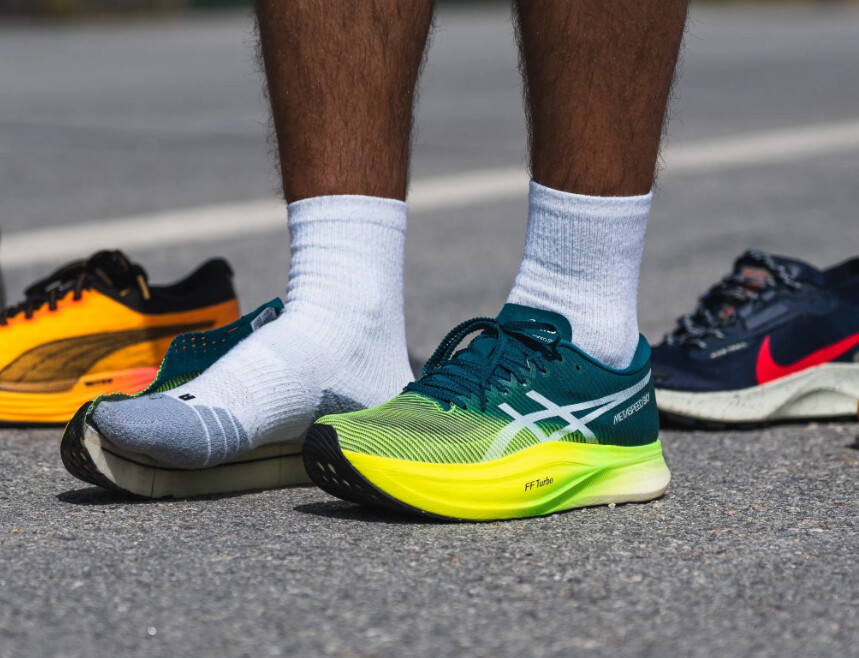
In the Boston Marathon, Ethiopia's Amane Beriso delivered a dominant performance, winning in 2:18:01. On the men's side, Kenya's Evans Chebet defended his title, highlighting Boston's reputation for tactical racing over sheer speed.
London Marathon saw Ethiopia's Tamirat Tola take the men's crown, besting the field with a strong tactical race. Eliud Kipchoge, despite high expectations, did not claim victory, signaling the growing competitiveness at the top of men’s marathoning. On the women's side, Kenya's Peres Jepchirchir triumphed, adding another major victory to her impressive resume.

The Berlin Marathon in 2024 showcased yet another extraordinary performance on its fast course, though it was Kelvin Kiptum’s world record from the 2023 Chicago Marathon (2:00:35) that remained untouched. In 2024, Berlin hosted strong fields but no records, leaving Kiptum’s achievement as the defining benchmark for men’s marathoning.
The Chicago Marathon was the highlight of the year, where Kenya's Ruth Chepngetich made history by becoming the first woman to run a marathon in under 2:10. She shattered the previous world record by nearly two minutes, finishing in 2:09:56. This groundbreaking achievement redefined the possibilities in women's distance running and underscored the remarkable progress in 2024.
The New York City Marathon showcased the depth of talent in American distance running, with emerging athletes achieving podium finishes and signaling a resurgence on the global stage.
Each marathon in 2024 was marked by extraordinary performances, with athletes pushing the boundaries of human endurance and setting new benchmarks in the sport.
Olympic Preparations: Paris 2024 Looms Large
With the 2024 Summer Olympics in Paris just around the corner, many athletes used the year to fine-tune their preparations. Qualifying events across the globe witnessed fierce competition as runners vied for spots on their national teams.
Countries like Kenya, Ethiopia, Japan, and the United States showcased their depth, with surprising performances by athletes who emerged as dark horses. Japan’s marathon team, bolstered by its rigorous national selection process, entered the Olympic year as a force to be reckoned with, particularly in the men's race.
Ultramarathons: The Rise of the 100-Mile Phenomenon
The ultramarathon scene continued to grow in popularity, with races like the Western States 100, UTMB (Ultra-Trail du Mont-Blanc), and Leadville 100 drawing record participation and attention.
Courtney Dauwalter, already a legend in the sport, extended her dominance with wins at both UTMB and the Western States 100, solidifying her reputation as the GOAT (Greatest of All Time) in ultrarunning.
On the men’s side, Spain’s Kilian Jornet returned to form after an injury-plagued 2023, capturing his fifth UTMB title. His performance was a masterclass in pacing and strategy, showcasing why he remains a fan favorite.
Notably, ultramarathons saw increased participation from younger runners and athletes transitioning from shorter distances. This shift signaled a growing interest in endurance challenges beyond the marathon.
Track and Road Records: Pushing the Limits
The year 2024 witnessed groundbreaking performances on both track and road, with athletes shattering previous records and setting new benchmarks in distance running.
Beatrice Chebet's Dominance: Kenya's Beatrice Chebet had an exceptional year, marked by multiple world records and championship titles.
10,000m World Record: In May, at the Prefontaine Classic, Chebet broke the women's 10,000m world record, becoming the first woman to run the distance in under 29 minutes, finishing in 28:54.14.
Olympic Triumphs: At the Paris Olympics, Chebet secured gold in both the 5,000m and 10,000m events, showcasing her versatility and dominance across distances.
5km World Record: Capping off her stellar year, on December 31, 2024, Chebet set a new women's 5km world record at the Cursa dels Nassos race in Barcelona, finishing in 13:54. This achievement made her the first woman to complete the 5km distance in under 14 minutes, breaking her previous record by 19 seconds.
Faith Kipyegon's Excellence: Kenya's Faith Kipyegon continued her dominance in middle-distance running by breaking the world records in the 1500m and mile events, further cementing her legacy as one of the greatest athletes in history.
Joshua Cheptegei's 10,000m World Record: Uganda's Joshua Cheptegei reclaimed the men's 10,000m world record with a blistering time of 26:09.32, a testament to his relentless pursuit of excellence.
Half Marathon Records: The half marathon saw an explosion of fast times, with Ethiopia’s Yomif Kejelchabreaking the men's world record, running 57:29 in Valencia. The women's record also fell, with Kenya’s Letesenbet Gidey clocking 1:02:35 in Copenhagen.
These achievements highlight the relentless pursuit of excellence by distance runners worldwide, continually pushing the boundaries of human performance.
The Role of Technology and Science
The impact of technology and sports science on distance running cannot be overstated in 2024. Advances in carbon-plated shoes, fueling strategies, and recovery protocols have continued to push the boundaries of human performance.
The debate over the fairness of super shoes reached new heights, with critics arguing that they provide an unfair advantage. However, proponents emphasized that such innovations are part of the natural evolution of sports equipment.
Data analytics and personalized training plans became the norm for elite runners. Wearable technology, including advanced GPS watches and heart rate monitors, allowed athletes and coaches to fine-tune training like never before.
Grassroots Running and Mass Participation
While elite performances stole the headlines, 2024 was also a banner year for grassroots running and mass participation events. After years of pandemic disruptions, global races saw record numbers of recreational runners.
Events like the Great North Run in the UK and the Marine Corps Marathon in the U.S. celebrated inclusivity, with participants from diverse backgrounds and abilities.
The popularity of running as a mental health outlet and community-building activity grew. Initiatives like parkrunand local running clubs played a pivotal role in introducing more people to the sport.
Diversity and Representation
Diversity and representation became central themes in distance running in 2024. Efforts to make the sport more inclusive saw tangible results:
More women and runners from underrepresented communities participated in major events. Notably, the Abbott World Marathon Majors launched a program to support female marathoners from emerging nations.
Trail and ultrarunning communities embraced initiatives to make races more accessible to runners from diverse cultural and economic backgrounds.
Challenges and Controversies
Despite the many successes, 2024 was not without its challenges:
Doping Scandals: A few high-profile doping cases marred the sport, reigniting calls for stricter testing protocols and greater transparency.
Climate Change: Extreme weather conditions impacted several races, including the Boston Marathon, which experienced unusually warm temperatures. Organizers are increasingly focusing on sustainability and adapting to climate-related challenges.
Looking Ahead to 2025
As the year closes, the focus shifts to 2025, which promises to build on the momentum of 2024. Key storylines include:
The quest for a sub-2-hour marathon in a record-eligible race, with Kelvin Kiptum and Eliud Kipchoge at the forefront.
The continued growth of ultrarunning, with new records likely to fall as more athletes take up the challenge.
The evolution of distance running as a global sport, with greater inclusivity and innovation shaping its future.
Conclusion
The distance running scene in 2024 was a celebration of human potential, resilience, and the unyielding pursuit of greatness. From record-breaking marathons to grueling ultramarathons, the year reminded us of the universal appeal of running. As the sport evolves, it continues to inspire millions worldwide, proving that the spirit of running transcends borders, ages, and abilities.
by Boris
Login to leave a comment
How to review your running year so you can improve in the months to come
THE END OF THE YEAR IS A GREAT TIME TO reflect on your running over the past 12 months – whether your aim has been fun, achieving parkrun PBs or preparing for a marathon.
A year-end review can help you spot trends, address setbacks and enhance your training for the upcoming year – whether that’s to boost performance or increase enjoyment. To do this, I encourage you to conduct a light performance analysis. It doesn’t require extensive data; instead, ask yourself key questions to start the new year with focus.

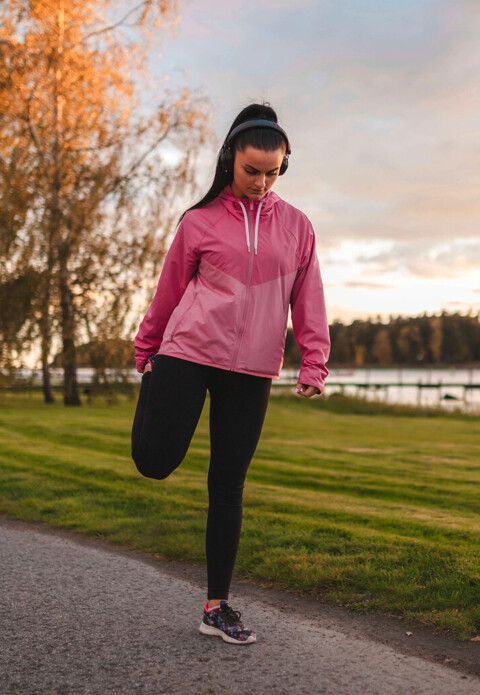
Audit yourself
Begin by reflecting on your goal-setting from a year ago. What were those goals? Are they still relevant? Perhaps you achieved several PBs or completed a couch to 5K programme and need a new challenge. Alternatively, you might need to scale back this year if your previous goals were unattainable. Remember, running should be enjoyable, and it’s normal to experience ups and downs.
Then take a closer look at your training, racing and lifestyle over the past year. Use data, along with the self-reflection questions to follow, to score yourself from one to five in the areas identified. This will guide your goal-setting and action plan for the year ahead.
1. Physical
This covers your overall fitness, strength, endurance and injury prevention. If you’re more experienced, you might use data from apps such as Strava or Garmin Connect, or a detailed training log. This can include metrics such as mileage, heart rate or HRV measurements. For the performance-minded, consider lab testing such as lactate and VO2-max testing. If you’re less experienced, focus on how your rate of perceived exertion (RPE) might have changed in different training sessions and races as the year went on.
● Endurance Review your total volume over the year in distance or time. Were there gaps in consistency owing to injury, motivation or life events? Have you included longer runs regularly? Do you feel your heart rate or effort has reduced for similar paces, or are you able to sustain your pace for longer periods?
● Speed and power Analyse improvements in shorter races compared with longer ones. Use the RW race-time predictor to see if you align more closely on longer or shorter races, or if you are well balanced. Reflect on your training: did you include a mix of long runs, intervals, fartlek sessions, hill workouts, tempo runs and recovery runs? A well-rounded training plan leads to balanced improvement.
● Injury and strength Track how many injuries you’ve had, and their severity and causes. Has strength training supported your running? Use strength and flexibility tests such as knee-to-wall tests and sit-and-reach tests to benchmark yourself against norms for your age.
2. Planning and performance
This section looks at your approach to training plans and race performance.
● Race pace vs training pace Are you performing consistently in races compared with training? Do you feel you underperform or overperform in competitive situations?
● Variety Did you include races of different distances and on various surfaces throughout the year? Or did you stay in a comfort zone with your favourite or strongest type of race?
● Splits Evaluate how you pace yourself during races. Do you start too fast and fade, or do you
3. Mindset and wellbeing
Your mindset and emotional wellbeing play a significant role in your running performance, as well as in maintaining your motivation and consistency.
● Motivation and enjoyment Did you maintain enthusiasm for running or were there periods of low motivation? Identify factors that contributed to any highs and lows.
● Anxiety and pressure Did you regularly feel stressed or anxious about your running or performance? Consider your goal-setting and whether you have the right balance between process and outcome focus.
● Race nerves and focus Evaluate how you handled race-day pressure. Did you feel confident and focused or did nerves affect your performance? Assess your mental approach to tough runs and races – did you stay positive and push through challenging moments? Did you explore any mental techniques such as positive self-talk or mantras for key moments in races?
● Consistency and commitment Look at how disciplined you were with your training. Did you skip runs or stay consistent? What external factors affected your behaviour and how well did you handle those disruptions?
4. Recovery
You can follow the perfect plan with a good mix of training, but if you don’t recover, your fitness gains will be limited and you’re more likely to pick up injuries. Various pieces of data can help you monitor recovery, such as sleep tracking, heart-rate variability and the ‘recovery’ metrics from most GPS watches. Often, however, you’ll know if improvements are needed by answering some key questions:
● Sleep and rest Assess how well you prioritised rest, including sleep quality and duration. Poor recovery can lead to fatigue, injury and decreased performance, so reflect on how (or if) you balanced your hard training with adequate rest.
● Nutrition and hydration Did you fuel properly before during and after runs? Did you hydrate adequately, especially during long runs and races? Have you noticed patterns between nutrition and performance? Did you effectively plan and practise your race-day nutrition?
● Health and vitality Did you frequently catch colds or infections? In the run-up to key races, did you keep doing the simple things, such as using hand gel and taking any supplements you might need?
● Injury recovery Did you give yourself enough time to heal, follow rehab exercises and ease back
Write these down as a simple action plan with up to five priorities. Create objectives that are realistic and motivating, balancing short-term achievements – such as improving your pace or increasing weekly volume – with long-term ambitions, such as completing a marathon or getting a personal best.
Lastly, remember that running isn’t just about performance. Think about how to add enjoyment to your running, such as participating in races of different distances or on various surfaces. Consider joining a club or training group to maximise the social and mental health benefits of running.
Combining all of these lessons will help you get more from your running in 2025, whatever your goal may be. Good luck!
Login to leave a comment
Clara Evans, Jake Smith and Innes FitzGerald are among the entries for Sunday’s big race at Cardiff 5K
Jake Smith, Dewi Griffiths and Kadar Omar will head the men’s fields at the Cardiff 5km Race For Victory on Sunday May 5, whereas Clara Evans, Jenny Nesbitt and Innes FitzGerald top the women’s start lists, writes Alex Donald.
The ever popular community event held in the leafy Whitchurch suburb of the Welsh capital incorporates the 2024 Welsh 5km Championships and will host teams from the Midlands, North, South and South West of England, along with a team from North Wales and one representing the UK Armed Forces.
Smith (13:59) dipped under 14 minutes with victory here in 2022 and has competed three times so far in 2024 with his best performance a 29:25 clocking at the 10km Valencia Ibercaja in January.
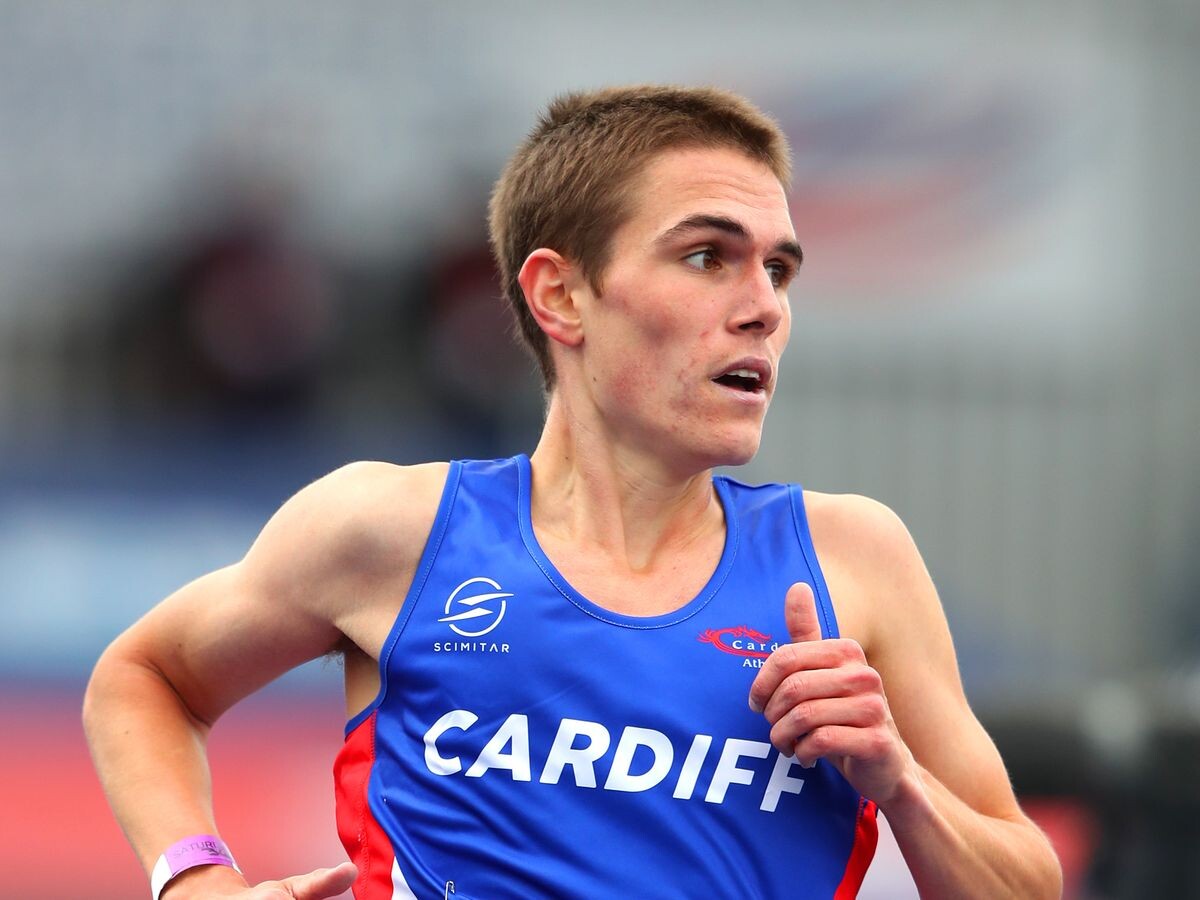
Griffiths (13:43) and Omar (14:02) faced off a week ago with Omar finishing 14 seconds ahead over 10km in Newport. The former also completed a 2:12 marathon at Seville in February.
Richard Allen (13:51) is a former world duathlon champion and a former record-holder at the popular Podium 5km in Barrowford. More recently the Leeds man won the 2023 Trafford 10km.
Jonathan Hopkins (13:54) returns as a previous winner here, claiming the Welsh title on that occasion in 2018. The Swansea man has dipped under 14 minutes on several occasions in the past and most recently in 2021 at Barrowford.

A further challenge is expected from track man James Heneghan (14:35) and the 2023 Nos Galan 5km winner Ben Reynolds (14:05).
Welsh marathon record-holder Clara Evans (15:49) is the defending champion here and is in great shape, recently proven by a 70:11 clocking on a windy day at the Berlin Half Marathon and with a 31:53 PB in third place at the Trafford 10km.
Evans is joined by training partner and clubmate 2019 UK Inter-Counties cross-country champion Jenny Nesbitt (15:41) who set her PB at the recent Podium 5km Festival in Leicester.
Further Welsh interest sits with Emily Kearney-Haggard, who finished second at the Mid-Cheshire 5km last weekend in a new best of 15:44 and 2023 Cardiff 10km champion Alaw Evans (16:33).
European under-20 cross-country champion Innes FitzGerald overcame Nesbitt at the Cardiff Met Open Meeting over 3000m in January. The Exeter Harrier will make a 5km road race debut in Cardiff but has a parkrun best of 16:02 from January.
Molli Lyons (16:47) is another promising young athlete in action, finishing 15th here last year but since making her Great Britain & Northern Ireland team debut at the European Cross Country Championships in Brussels.
by Athletics Weekly
Login to leave a comment
Cardiff 5K
We are delighted to again bring this unique event to Whitchurch Village, a leafy suburb of Cardiff. Widely regarded as one of the best 5K Races in the United Kingdom it has an atmosphere second to none, so get ready for the race of your life !...
more...Can caffeinated gum help run faster
Hoping to smash your 5K PB at your local parkrun event? A recent study published in the European Journal of Nutrition delves into the impact of caffeine gum on the performance of runners participating in parkrun. The results may help you speed to your goals.Parkrun is the world’s largest free weekly 5K event, originating in the U.K., and attracts participants of all abilities to parks, trails and open spaces every Saturday morning.Caffeine as a performance enhancer
Caffeine, known for its stimulating effects on the central nervous system, has long been recognized for its potential to enhance athletic performance. World Athletics even recommends it as a performance enhancer. In the past, most research on caffeine and performance was done on cyclists, with studies on sprinters and endurance runners only recently (with positive results).
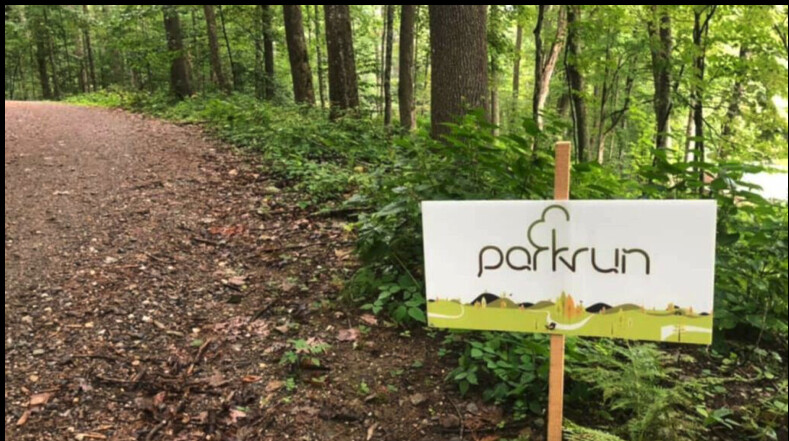
In this context, the study focused on 36 recreational runners capable of completing a 5K run in under 25 minutes. The runners were part of a double-blind, placebo-controlled intervention, exploring whether chewing caffeine-infused gum could contribute to improved parkrun performance.Chewing toward a PB
The runners, randomly assigned to either caffeine or placebo gum groups, engaged in a five-minute gum-chewing session 30 minutes before each parkrun, to allow the caffeine to take effect. The results revealed a noteworthy improvement in 5K performance, with an average time reduction of 17.28 seconds among those chewing the caffeine gum.
This enhancement in performance was further reflected in a decrease in the runners’ RPE (rate of perceived exertion) by 1.21 units compared to the placebo group. This aligns with research on caffeine and endurance athletes, where scientists observed that caffeine may “inhibit perceptual response during exercise,” meaning participants had an increased ability to tolerate discomfort associated with fatigue while running.
While more research needs to be done to determine the maximum best effective doses for runners, it’s clear that adding a caffeinated boost to your parkrun race prep may help you as you chase that PB.
by Running Magazine
Login to leave a comment
Parkrun under fire for removing course records for inclusivity
Parkrun, the world’s largest weekly timed 5K event, has come under fire over a decision to remove men’s and women’s course records from its database. The move, aimed at fostering inclusivity and fairness, has sparked controversy within the running community.
Originating in the U.K., parkrun attracts hundreds of participants of all abilities to take part in timed 5K runs held in parks, trails and open spaces every Saturday morning, at locations across the globe. Each parkrun course featured men’s and women’s records and showed the fastest 500 finishers (of all time) on that course, plus age-graded results. However, in response to accusations of unfairness, particularly regarding its entry rules related to self-identification of gender, parkrun has chosen to eliminate the records altogether.
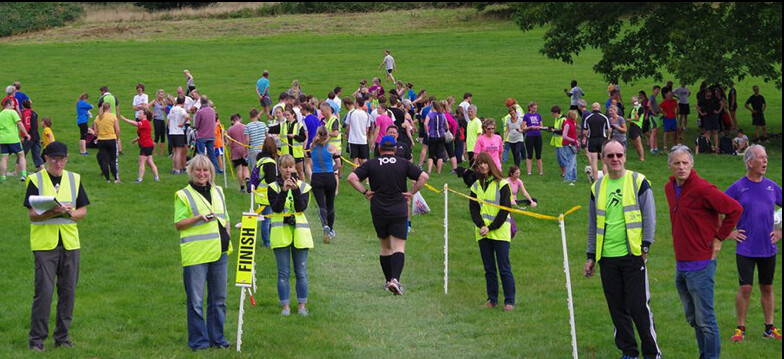
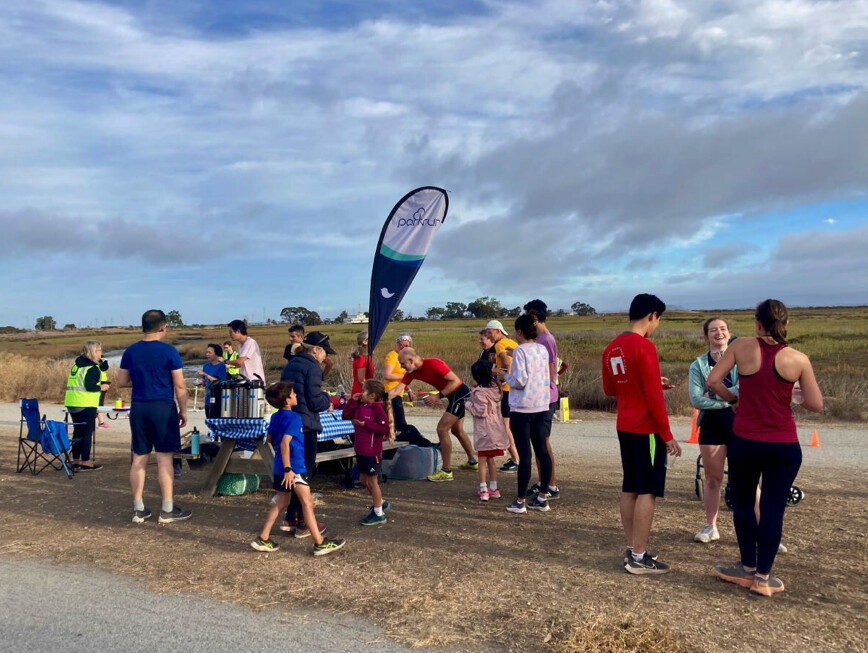
A spokesperson for parkrun explained that this decision was made to increase registration and participation while removing potential barriers. “There was a disconnect between the performance data displayed so prominently on the site, and our mission to create opportunities for as many people as possible to take part in parkrun events,” a spokesperson told The Telegraph.
The decision has stirred controversy, leaving several runners frustrated and arguing that rather than addressing concerns about fairness, parkrun’s move made the issue worse. “Rather than give females their fair sports results from parkrun–where it would be very easy to add course records for non-binary categories, they have removed all records,” a woman tweeted. “I hope parkrun will listen to the fact that the vast majority want a fair sport for all based on the biological reality of the bodies we run/race/compete with.”
Last year, World Athletics banned transgender athletes from competing in the female category, citing concerns of fairness and competitive advantage. However, parkrun differs from elite competitions, being a community-driven, volunteer-led event focused on fun and participation rather than prizes or accolades.
When registering for parkrun, participants are asked to specify their gender, with options including ‘prefer not to say’ and ‘another gender identity’ in addition to male and female. Parkrun has clarified that the intention behind the decision is to reduce the competitive nature of its events and eliminate the perception that the weekly runs are races. This approach aims to create a more welcoming environment for participants of all abilities.
by Running Magazine
Login to leave a comment
The Pill That Over Half the Distance Medallists Used at the 2023 Worlds
What's the deal with sodium bicarbonate?What if there was a pill, new to the market this year, that was used by more than half of the distance medalists at the 2023 World Athletics Championships? A supplement so in-demand that there was a reported black market for it in Budapest, runners buying from other runners who did not advance past the preliminary round — even though the main ingredient can be found in any kitchen?
How did this pill become so popular? Well, there are rumors that Jakob Ingebrigtsen has been taking it for years — rumors that Ingebrigtsen’s camp and the manufacturers of the pill will neither confirm nor deny.
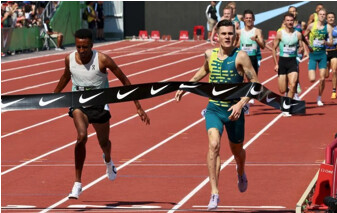

So about this pill…does it work? Does it actually boost athletic performance? Ask a sports scientist, someone who’s studied it for more than a decade, and they’ll tell you yes.
“There’s probably four or five legal, natural supplements, if you will, that seem to have withstood the test of time in terms of the research literature and [this pill] is one of those,” says Jason Siegler, Director of Human Performance in the College of Health Solutions at Arizona State University.
But there’s a drawback to this pill. It could…well, let’s allow Luis Grijalva, who used it before finishing 4th in the World Championship 5,000m final in Budapest, to explain.
“I heard stories if you do it wrong, you chew it, you kind of shit your brains out,” Grijalva says. “And I was a little bit scared.”
The research supports that, too.
“[Gastrointestinal distress] has by far and away been the biggest hurdle for this supplement,” Siegler says.Okay, enough with the faux intrigue. If you’ve read the subtitle of this article, you know the pill we are talking about is sodium bicarbonate. Specifically, the Maurten Bicarb System, which has been available to the public since February and which has been used by some of the top teams in endurance sports: cycling juggernaut Team Jumbo-Visma and, in running, the On Athletics Club and NN Running Team. (Maurten has sponsorship or partnership agreements with all three).Some of the planet’s fastest runners have used the Maurten Bicarb System in 2023, including 10,000m world champion Joshua Cheptegei, 800m silver medalist Keely Hodgkinson, and 800m silver medalist Emmanuel Wanyonyi. Faith Kipyegon used it before winning the gold medal in the 1500m final in Budapest — but did not use it before her win in the 5,000m final or before any of her world records in the 1500m, mile, and 5,000m.
Herman Reuterswärd, Maurten’s head of communications, declined to share a full client list with LetsRun but claims two-thirds of all medalists from the 800 through 10,000 meters (excluding the steeplechase) used the product at the 2023 Worlds.
After years of trial and error, Maurten believes it has solved the GI issue, but those who have used their product have reported other side effects. Neil Gourley used sodium bicarbonate before almost every race in 2023, and while he had a great season — British champion, personal bests in the 1500 and mile — his head ached after races in a way it never had before. When Joe Klecker tried it at The TEN in March, he felt nauseous and light-headed — but still ran a personal best of 27:07.57. In an episode of the Coffee Club podcast, Klecker’s OAC teammate George Beamish, who finished 5th at Worlds in the steeplechase and used the product in a few races this year, said he felt delusional, dehydrated, and spent after using it before a workout this summer.
“It was the worst I’d felt in a workout [all] year, easily,” Beamish said.
Not every athlete who has used the Maurten Bicarb System has felt side effects. But the sport as a whole is still figuring out what to do about sodium bicarbonate.
Many athletes — even those who don’t have sponsorship arrangements with Maurten — have added it to their routines. But Jumbo-Visma’s top cyclist, Jonas Vingegaard — winner of the last two Tours de France — does not use it. Neither does OAC’s top runner, Yared Nuguse, who tried it a few times in practice but did not use it before any of his four American record races in 2023.“I’m very low-maintenance and I think my body’s the same,” Nuguse says. “So when I tried to do that, it was kind of like, Whoa, what is this? My whole body felt weird and I was just like, I either did this wrong or this is not for me.”
How sodium bicarbonate works
The idea that sodium bicarbonate — aka baking soda, the same stuff that goes in muffins and keeps your refrigerator fresh — can boost athletic performance has been around for decades.
“When you’re exercising, when you’re contracting muscle at a really high intensity or a high rate, you end up using your anaerobic energy sources and those non-oxygen pathways,” says Siegler, who has been part of more than 15 studies on sodium bicarbonate use in sport. “And those pathways, some of the byproducts that they produce, one of them is a proton – a little hydrogen ion. And that proton can cause all sorts of problems in the muscle. You can equate that to that sort of burn that you feel going at high rates. That burn, most of that — not directly, but indirectly — is coming from the accumulation of these little hydrogen ions.”
As this is happening, the kidneys produce bicarbonate as a defense mechanism. For a while, bicarbonate acts as a buffer, countering the negative effects of the hydrogen ions. But eventually, the hydrogen ions win.The typical concentration of bicarbonate in most people hovers around 25 millimoles per liter. By taking sodium bicarbonate in the proper dosage before exercise, Siegler says, you can raise that level to around 30-32 millimoles per liter.
“You basically have a more solid first line of defense,” Siegler says. “The theory is you can go a little bit longer and tolerate the hydrogen ions coming out of the cell a little bit longer before they cause any sort of disruption.”
Like creatine and caffeine, Siegler says the scientific literature is clear when it comes to sodium bicarbonate: it boosts performance, specifically during events that involve short bursts of anaerobic activity. But there’s a catch.
***
Bicarb without the cramping
Sodium bicarbonate has never been hard to find. Anyone can swallow a spoonful or two of baking soda with some water, though it’s not the most appetizing pre-workout snack. The problem comes when the stomach tries to absorb a large amount of sodium bicarbonate at once.
“You have a huge charged load in your stomach that the acidity in your stomach has to deal with and you have a big shift in the partial pressure of carbon dioxide across the gut,” Siegler says. “And that’s what gives you the cramping.”
A few years ago, Maurten was trying to solve a similar problem for marathoners trying to ingest large amounts of carbohydrates during races. The result was their carbohydrate drink, which relies on something called a hydrogel to form in the stomach. The hydrogel resists the acidity of the stomach and allows the carbohydrates to be absorbed in the intestine instead, where there is less cramping.
“We thought, okay, we are able to solve that one,” Reuterswärd says. “Could we apply the hydrogel technology to something else that is really risky to consume that could be beneficial?”
For almost four years, Maurten researched the effects of encapsulating sodium bicarbonate in hydrogels in its Swedish lab, conducting tests on middle-distance runners in Gothenburg. Hydrogels seemed to minimize the risk, but the best results came when hydrogels were paired with microtablets of sodium bicarbonate.
The result was the Maurten Bicarb System — “system,” because the process for ingesting it involves a few steps. Each box contains three components: a packet of hydrogel powder, a packet of tiny sodium bicarbonate tablets, and a mixing bowl. Mix the powder with water, let it stand for a few minutes, and sprinkle in the bicarb.The resulting mixture is a bit odd. It’s gooey. It’s gray. It doesn’t really taste like anything. It’s not quite liquid, not quite solid — a yogurt-like substance flooded with tiny tablets that you eat with a spoon but swallow like a drink.
The “swallow” part is important. Chew the tablets and the sodium bicarbonate will be absorbed before the hydrogels can do their job. Which means a trip to the toilet may not be far behind.
When Maurten launched its Bicarb System to the public in February 2023, it did not have high expectations for sales in year one.
“It’s a niche product,” Reuterswärd says. “From what we know right now, it maybe doesn’t make too much sense if you’re an amateur, if you’re just doing 5k parkruns.”
But in March, Maurten’s product began making headlines in cycling when it emerged that it was being used by Team Jumbo-Visma, including by stars Wout van Aert and Primož Roglič. Sales exploded. Because bicarb dosage varies with bodyweight, Maurten’s system come in four “sizes.” And one size was selling particularly well.
“If you’re an endurance athlete, you’re around 60-70 kg (132-154 lbs),” Reuterswärd says. “We had a shortage with the size that corresponded with that weight…The first couple weeks, it was basically only professional cyclists buying all the time, massive amounts. And now we’re seeing a similar development in track & field.”
If there was a “Jumbo-Visma” effect in cycling, then this summer there was a “Jakob Ingebrigtsen” effect in running.To be clear: there is no official confirmation that Ingebrigtsen uses sodium bicarbonate. His agent, Daniel Wessfeldt, did not respond to multiple emails for this story. When I ask Reuterswärd if Ingebrigtsen has used Maurten’s product, he grows uncomfortable.
“I would love to be very clear here but I will have to get back to you,” Reuterswärd says (ultimately, he was not able to provide further clarification).
But when Maurten pitches coaches and athletes on its product, they have used data from the past two years on a “really good” 1500 guy to tout its effectiveness, displaying the lactate levels the athlete was able to achieve in practice with and without the use of the Maurten Bicarb System. That athlete is widely believed to be Ingebrigtsen. Just as Ingebrigtsen’s success with double threshold has spawned imitators across the globe, so too has his rumored use of sodium bicarbonate.
Grijalva says he started experimenting with sodium bicarbonate “because everybody’s doing it.” And everybody’s doing it because of Ingebrigtsen.
“[Ingebrigtsen] was probably ahead of everybody at the time,” Grijalva said. “Same with his training and same with the bicarb.”
OAC coach Dathan Ritzenhein took sodium bicarbonate once before a workout early in his own professional career, and still has bad memories of swallowing enormous capsules that made him feel sick. Still, he was willing to give it a try with his athletes this year after Maurten explained the steps they had taken to reduce GI distress.
“Certainly listening to the potential for less side effects was the reason we considered trying it,” says Ritzenhein. “I don’t know who is a diehard user and thinks that it’s really helpful, but around the circuit I know a lot of people that have said they’ve [tried] it.”
Coach/agent Stephen Haas says a number of his athletes, including Gourley, 3:56 1500 woman Katie Snowden, and Worlds steeple qualifier Isaac Updike, tried bicarb this year. In the men’s 1500, Haas adds, “most of the top guys are already using it.”
Yet 1500-meter world champion Josh Kerr was not among them. Kerr’s nutritionist mentioned the idea of sodium bicarbonate to him this summer but Kerr chose to table any discussions until after the season. He says he did not like the idea of trying it as a “quick fix” in the middle of the year.
“I review everything at the end of the season and see where I could get better,” Kerr writes in a text to LetsRun. “As long as the supplement is above board, got all the stamps of approvals needed from WADA and the research is there, I have nothing against it but I don’t like changing things midseason.”
***
So does it actually work?
Siegler is convinced sodium bicarbonate can benefit athletic performance if the GI issues can be solved. Originally, those benefits seemed confined to shorter events in the 2-to 5-minute range where an athlete is pushing anaerobic capacity. Buffering protons does no good to short sprinters, who use a different energy system during races.
“A 100-meter runner is going to use a system that’s referred to the phosphagen or creatine phosphate system, this immediate energy source,” Siegler says. “…It’s not the same sort of biochemical reaction that eventuates into this big proton or big acidic load. It’s too quick.”
But, Siegler says, sodium bicarbonate could potentially help athletes in longer events — perhaps a hilly marathon.
“When there’s short bursts of high-intensity activity, like a breakaway or a hill climb, what we do know now is when you take sodium bicarbonate…it will sit in your system for a number of hours,” Siegler says. “So it’s there [if] you need it, that’s kind of the premise behind it basically. If you don’t use it, it’s fine, it’s not detrimental. Eventually your kidneys clear it out.”Even Reuterswärd admits that it’s still unclear how much sodium bicarbonate helps in a marathon — “honestly, no one knows” — but it is starting to be used there as well. Kenya’s Kelvin Kiptum used it when he set the world record of 2:00:35at last month’s Chicago Marathon; American Molly Seidel also used it in Chicago, where she ran a personal best of 2:23:07.
Siegler says it is encouraging that Maurten has tried to solve the GI problem and that any success they experience could spur other companies to research an even more effective delivery system (currently the main alternative is Amp Human’s PR Lotion, a sodium bicarbonate cream that is rubbed into the skin). But he is waiting for more data before rendering a final verdict on the Maurten Bicarb System.
“I haven’t seen any peer-reviewed papers yet come out so a bit I’m hesitant to be definitive about it,” Siegler said.
Trent Stellingwerff, an exercise physiologist and running coach at the Canadian Sport Institute – Pacific, worked with Siegler on a 2020 paper studying the effect of sodium bicarbonate on elite rowers. A number of athletes have asked him about the the Maurten Bicarb System, and some of his marathoners have used the product. Like Siegler, he wants to see more data before reaching a conclusion.
“I always follow the evidence and science, and to my knowledge, as of yet, I’m unaware of any publications using the Maurten bicarb in a double-blind, placebo-controlled clinical trial,” Stellingwerff writes in a text to LetsRun. “So without any published data on the bicarb version, I can’t really say it does much.”
The closest thing out there right now is a British study conducted by Lewis Goughof Birmingham City University and Andy Sparks of Edge Hill University. In a test of 10 well-trained cyclists, Gough and Sparks found the Maurten Bicarb System limited GI distress and had the potential to improve exercise performance. Reuterswärd says the study, which was funded by Maurten, is currently in the review process while Gough and Sparks suggested further research to investigate their findings.
What about the runners who used sodium bicarbonate in 2023?
Klecker decided to give bicarb a shot after Maurten made a presentation to the OAC team in Boulder earlier this year. He has run well using bicarb (his 10,000 pb at The TEN) and without it (his 5,000 pb in January) and as Klecker heads into an Olympic year, he is still deciding whether the supposed benefits are worth the drawbacks, which for him include nausea and thirst. He also says that when he has taken the bicarb, his muscles feel a bit more numb than usual, which has made it more challenging for him to gauge his effort in races.
“There’s been no, Oh man I felt just so amazing today because of this bicarb,” Klecker says. “If anything, it’s been like, Oh I didn’t take it and I felt a bit more like myself.”
Klecker also notes that his wife and OAC teammate, Sage Hurta-Klecker, ran her 800m season’s best of 1:58.09 at the Silesia Diamond League on July 16 — the first race of the season in which she did not use bicarb beforehand.
A number of athletes in Mike Smith‘s Flagstaff-based training group also used bicarb this year, including Grijalva and US 5,000 champion Abdihamid Nur. Grijalva did not use bicarb in his outdoor season opener in Florence on June 2, when he ran his personal best of 12:52.97 to finish 3rd. He did use it before the Zurich Diamond League on August 31, when he ran 12:55.88 to finish 4th.“I want to say it helps, but at the same time, I don’t want to rely on it,” Grijalva says.
Almost every OAC athlete tried sodium bicarbonate at some point in 2023. Ritzenhein says the results were mixed. Some of his runners have run well while using it, but the team’s top performer, Nuguse, never used it in a race. Ritzenhein wants to continue testing sodium bicarbonate with his athletes to determine how each of them responds individually and whether it’s worth using moving forward.
That group includes Alicia Monson, who experimented with bicarb in 2023 but did not use it before her American records at 5,000 and 10,000 meters or her 5th-place finish in the 10,000 at Worlds.
“It’s not the thing that’s going to make or break an athlete,” Ritzenhein says. “…It’s a legal supplement that has the potential, at least, to help but it doesn’t seem to be universal. So I think there’s a lot more research that needs to be done into it and who benefits from it.”
The kind of research scientists like Stellingwerff want to see — double-blind, controlled clinical trials — could take a while to trickle in. But now that anyone can order Maurten’s product (it’s not cheap — $65 for four servings), athletes will get to decide for themselves whether sodium bicarbonate is worth pursuing.
“The athlete community, obviously if they feel there’s any sort of risk, they’re weighing up the risk-to-benefit ratio,” Siegler said. “The return has got to be good.”
Grijalva expects sodium bicarbonate will become part of his pre-race routine next year, along with a shower and a cup of coffee. Coffee, and the caffeine contained wherein, may offer a glimpse at the future of bicarb. Caffeine has been widely used by athletes for longer than sodium bicarbonate, and the verdict is in on that one: it works. Yet plenty of the greats choose not to use it.
Nuguse is among them. He does not drink coffee — a fact he is constantly reminded of by Ritzenhein.
“I make jokes almost every day about it,” Ritzenhein says. “His family is Ethiopian – coffee tradition and ceremony is really important to them.”
Ritzenhein says he would love it if Nuguse drank a cup of coffee sometime, but he’s not going to force it on him. Some athletes, Ritzenhein says, have a tendency to become neurotic about these sorts of things. That’s how Ritzenhein was as an athlete. It’s certainly how Ritzenhein’s former coach at the Nike Oregon Project, Alberto Salazar, was — an approach that ultimately earned Salazar a four-year ban from USADA.
Ritzenhein says he has no worries when it comes to any of his athletes using sodium bicarbonate — Maurten’s product is batch-tested and unlike L-carnitine, there is no specific protocol that must be adhered to in order for athletes to use it legally under the WADA Code. Still, there is something to be said for keeping things simple.
“Yared knows how his body feels,” Ritzenhein says. “…He literally rolls out of practice and comes to practice like a high schooler with a Eggo waffle in hand. Probably more athletes could use that kind of [approach].”
Talk about this article on our world-famous fan forum / messageboard.
by Let’s Run
Login to leave a comment
British trail runner found dead after going missing on run
A 40-year-old British ultrarunner was found dead on Tuesday morning following a two-day search. Edward Catmur of London went missing on a run in Cumbria, U.K., on New Year’s Eve.
According to the BBC and Cumbria police, Catmur travelled to Cumbria intending to run through the North Pennines from Dufton, near Appleby, to Cross Fell and Hartside Cross. He was reported missing on New Year’s Day after not being heard from after 10 a.m. on Dec. 31.
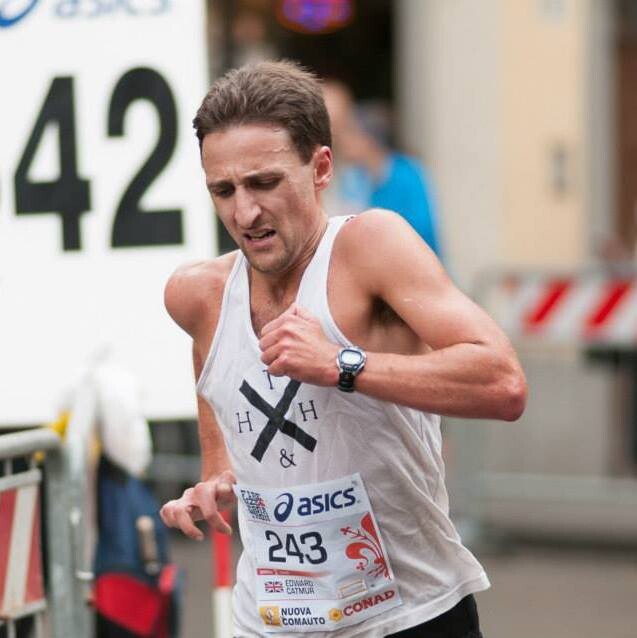
The local police sent out a rescue team on Jan. 1, following Catmur’s planned route on Monday. A police helicopter found his body on a snow-covered trail on Monday night in the Cross Fell area, just north of Penrith. There was a large snowfall in the area, according to the police.
This was not Catmur’s first time visiting or running in the Lake District National Park area; he previously ran the Bob Graham Round with a few friends in 2021, completing the 110 km loop in just under 24 hours.
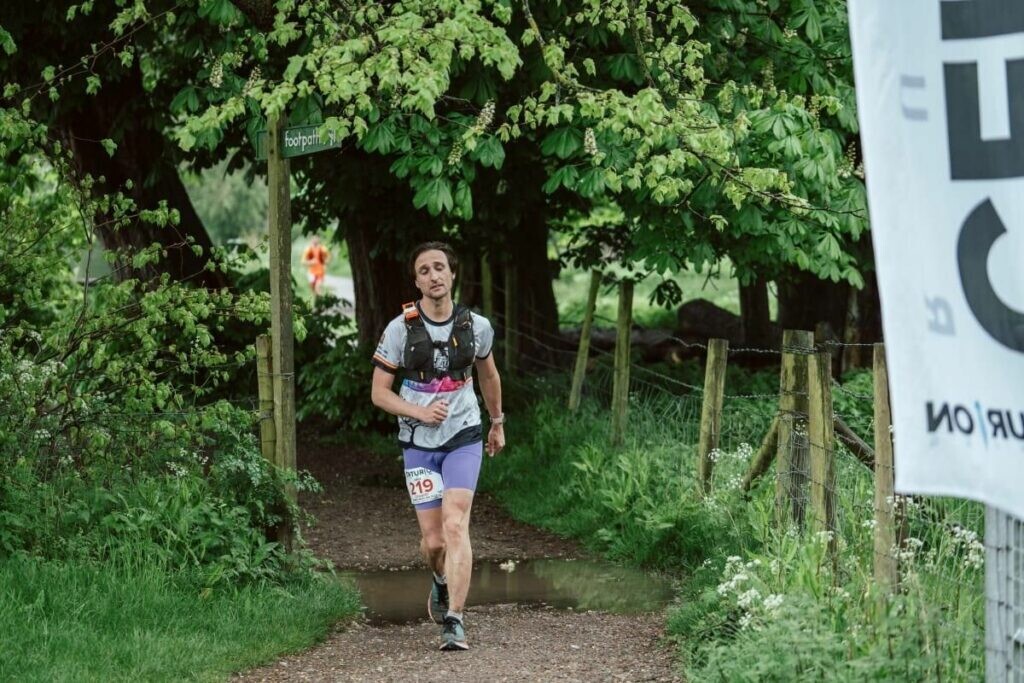
Catmur was a software engineer living in Chicago but was back in the U.K. for the holidays. He was an avid runner. On the day before he went missing (Dec. 30), he participated in Penrith parkrun, where he ran an 18-minute 5K. He also competed at the 2023 Comrades Marathon, where he finished 254th. He also won the challenger race at the Montane Spine Race in 2015.
Fell running is the sport of running and racing off-road, over upland country where the gradient climbed is a significant component of the difficulty. The name arises from the origins of the English sport on the fells of northern Britain, especially those in the Lake District.
by Marley Dickinson
Login to leave a comment
Four ways runners can take care of their mental health this season
For some runners, the holiday season is a challenging time of year. Societal expectations can make those who don’t want to be particularly festive feel like they must either put on a good front or stay home. Whether you celebrate or not, this time of year can be hard to navigate and can leave runners (and everyone) dealing with complicated feelings.
The Canadian Mental Health Association (CMHA) website shares that more than half of Canadians report feelings of anxiety, depression and isolation at this time of year. Here are a few ways runners can protect their mental health during the holiday season.
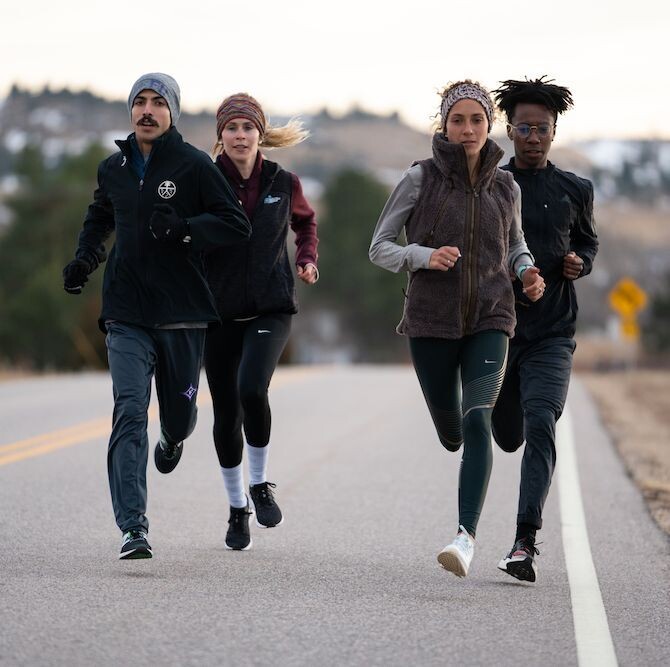
1.- Festive flexibility
Give yourself the gift of flexibility in your running routine. Acknowledge that the holiday season can be hectic, and recognize that it’s OK to adjust your training plan temporarily. Be adaptable, allowing room for extra rest days and shorter runs, when needed. You’ll maintain a positive relationship with running and reduce unnecessary pressure on yourself. Missing a few runs over the holidays is not going to have an impact on your long-term running goals (but beating yourself up for doing so might).

2.- Connect with your community (if you want to)
The holiday season can be especially tough if you are feeling lonely. Your local running community can be a positive place to connect with other runners, and chances are, others are experiencing similar feelings. Signing up to volunteer at your local parkrun, or heading out for a run with your local running community may give you a much-needed boost. If you’re not feeling up to running and don’t feel like socializing, that’s also OK. CMHA suggests doing something special for yourself: cooking your favourite foods, going to a movie or starting a holiday project.
3.- Go for a run (if that helps)
For many of us, running is a daily pick-me-up. If running is supporting your mental health and is something that helps you tackle everyday life challenges, don’t be afraid to make it a priority. Need to press pause on making holiday treats with the fam to fit in a few stress-relieving miles? Consider this your reminder that you never need to apologize to others for taking care of your physical and mental health needs. Your family and friends will benefit from the healthier, happier post-run you, and you’ll be able to savour the family antics while feeling relaxed.
4.- Don’t be afraid to seek help
While seeking therapy and talking about mental health is becoming less stigmatized, it can still be really hard to tell others that you are feeling low. Canadian Olympian middle distance champ Gabriela DeBues-Stafford recently shared about her own struggles on Instagram and encouraged others to seek help. “If you’re struggling, please reach out, and don’t lose hope,” DeBues-Stafford wrote. “I know it’s hard now, but the world is a better place with you in it.”
For a variety of reasons, many of us may not be comfortable sharing what we are going through with those closest to us. There are resources available if you need help navigating the challenges you are facing, or simply need to talk. Bigger Than The Trail is a non-profit that uses trail running as a platform to advocate for mental health, and will provide three months of online counselling through Betterhelp to anyone seeking help.
by Keeley Milne
Login to leave a comment
Try this 1:1:1 fartlek session to ignite your 5K pace
These rapid-fire intervals will help you hit that elusive 5K goal.
Whether you’re hoping to capture a parkrun course record or simply want to inject a little more speed into your stride, this snappy fartlek workout will give you the boost you need. Slide it into your training schedule when you want to challenge your legs without logging a ton of mileage.
Fartlek is Swedish for “speed play,” and involves injecting your workout with varied paces that can range from a sprint to a very easy jog. Some fartleks sessions are unstructured (the intervals are random); this one is structured. Fartlek workouts can give you practice pushing through fatigue to change gears and pick up the pace–perfect for simulating race day.

1:1:1 fartlek workout
Warm up with 10 to 20 minutes of easy running, gradually increasing the pace during the last kilometre.

Run three to six rounds of these three one-minute intervals, with one minute of easy running for recovery after each three-minute cycle: one minute at 10K pace, one minute at 5K pace, one minute at mile pace (if you’re not familiar with your one-mile pace, try running slightly faster than your 5K pace, but with an effort you can maintain for the entire distance).
Cool down with 10 minutes of easy running.
Modifications for distance or ability
Tweak this one to suit any race goals or level of experience. For beginners, cycle through only one or two rounds, add an extra minute (or three!) in between, or slow down the pace of all three intervals.
To adjust for a longer goal race, shift paces or effort to reflect the longer distance. For example, to gear your workout toward a half-marathon goal, try running the first minute at marathon pace, the second at half-marathon pace and the third at 10K pace.
Remember to follow a speedwork session like this one with a rest day or a day of very easy recovery running.
by Keeley Milne
Login to leave a comment
Three ways to build a strong running base this winter
While it’s exciting to be training toward a very distinct goal race or distance, it’s important to have a strong running base before you begin to direct your effort toward something more intense. Having a strong aerobic and structural foundation to build on helps prevent injuries, and your body will adapt more easily when you introduce race-specific training. Even experienced runners should consider inserting a base-building block (or several) into their training.
The colder months are a great time to focus on your base before ramping up your training for the spring race season–a running base is usually built over a minimum of four weeks. Here’s how, and why, you can build a strong base this winter.

What exactly is base-building?
On his website, McMillan Running, renowned endurance coach Greg McMillan explains there are five goals of base-building. Runners work toward building aerobic efficiency, improving musculoskeletal durability, improving their ability to burn fat rather than carbohydrate as fuel, improving the endurance of fast twitch muscle fibres and creating a tireless mental state. While that list might seem daunting, the key components are actually as simple as going back to basics, which essentially means lots of easy running.
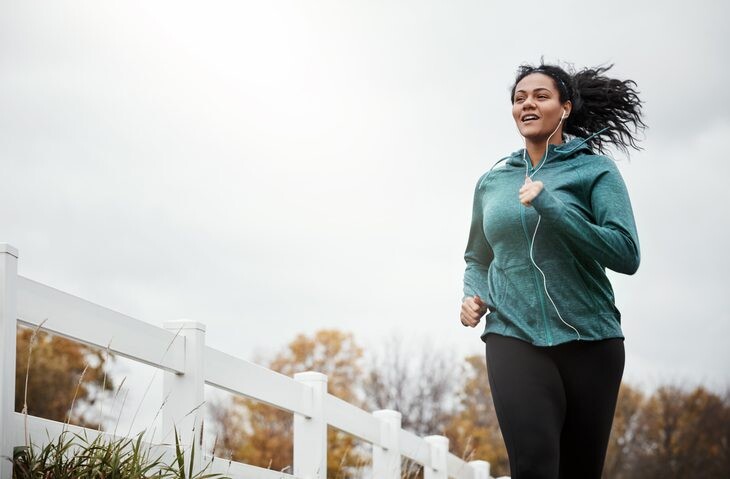
1.- Keep your runs at a conversational pace
While speedwork is essential when prepping for a race, base-building is a time to keep your runs easy and comfortable. You should be able to talk easily throughout your run, and your effort should consistently feel very manageable. Slow running builds muscular strength and teaches your cardio, respiratory and muscular systems to work more efficiently. It also increases the quantity and size of mitochondria, improving oxygen use and glycogen stores.
If you struggle with keeping to an easy pace, adding strides—short accelerations of 80-100 metres, or 20 to 30 seconds—a couple of times a week after a routine easy run can ease restless legs. A speedy parkrun or faster-paced session tossed into your training is OK, just keep the focus on finessing that easy pace.
2.- Add mileage slowly
After a race, reduce mileage to a range that is comfortable for you–your peak mileage, or the amount of running you do right before your pre-race taper, is not what you should return to post-race, as tempting as it may be.
Once you’ve established a starting point, adding between five and 10 per cent every other week is a rough guideline for building gradually while decreasing your risk for injuries. Everyone has an individual range, so if you’re an experienced athlete, you may be comfortable adding more, and newer runners may want to increase mileage at an even more conservative rate.
3.- Master the art of recovery
Most runners are reluctant to focus on their recovery days. After all, rest days are as simple as not running, right? Recovery days should actually be considered as essential as any peak training workout, and runners should take time to focus on prioritizing good sleep hygiene and top-notch fuelling. Don’t skimp on meals just because you aren’t running–rest days are the perfect time to prepare and enjoy nutritious, energy-packed meals (meal-prepping for the week is a great idea, if you have extra time). Make sure to head to bed early, and focus on de-stressing and self-care.
by Keeley Milne
Login to leave a comment
Naked trail race in England brings out running buffs
Scores of runners in England joined in a bold display of raw talent this month, baring all for a 5K trail run in which participants stripped down to their socks.
The Naked 5K took place Sept. 10 near Orpington, a community just southeast of London. The town is home to the Naturist Foundation, an organization dedicated to the “pursuit of personal well-being and wellness through naturist recreational activities,” according to its mission statement. The group’s 53-acre Brocken Hurst property is host to a range of Naturist Foundation events, from concerts and holiday celebrations to this month’s 5K trail run, which was the 20th such race the group has organized.
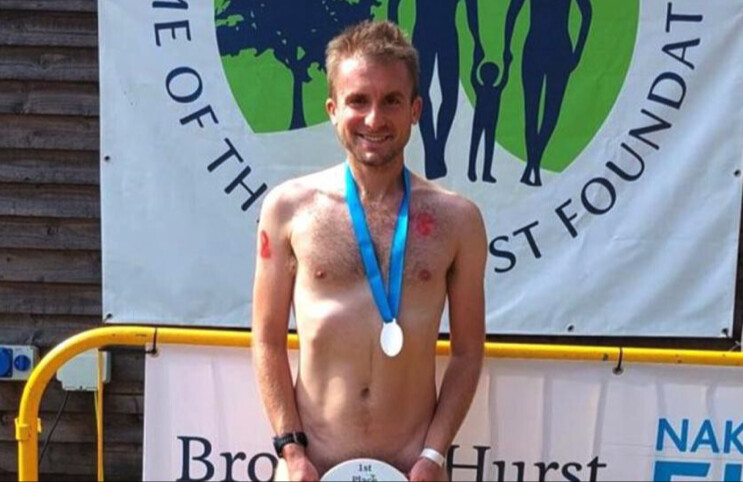
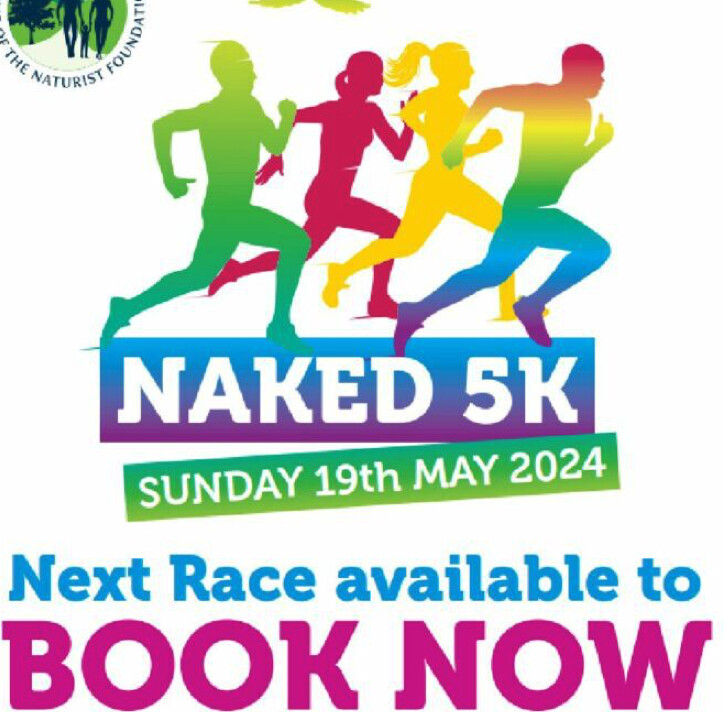
The organization’s milestone event appears to have attracted not just a large crowd, but a fairly speedy one. Leading the pack of 130 runners was Mark Jessett of Llandudno Junction, Wales, who won the race in 18:50. (As the race format would leave runners few options for pinning on a race bib, runners are given lightweight anklets to make chip timing possible.)
In a post on X, formerly known as Twitter, the Nature Foundation featured a shot of Jessett wearing nothing but his winner’s medal. “Congratulations to the winner of yesterday’s #BH5K trail run, with a time of 18m50s,” reads the post. “An impressive feat given the heat, with a high of 30ºC! We had extra water stations and misting sprays, but not surprisingly some DNFs too.”
No matter how liberally Jessett might have applied sunscreen for the race, the blistering rays clearly left an impression on the Welshman. “Scorching conditions!” he wrote in his Strava recap of the Naked 5K, in which he described the race as “basically a trail course through trees with a short section of road.”
In a reply to the Naturist Foundation’s post on X, he wrote: “Thanks everyone and well done to everyone else also! Fantastic day out in lovely (but scorching) conditions surrounded by so many friendly people!”
Others who responded to the post offered Jessett kudos for a strong run given the heat and, at times, challenging terrain, while some were curious about what motivates runners to sign up for the Naked 5K, and what kind of crowds the races attract.
One commenter replied that “some are running club members a bit bored of the regular parkrun and fancy a change. Many are regulars that we only see twice a year. Some are doing it for bucket list or charity reasons. Some do get the naturist bug as a result.”
The Naturist Foundation hosts its next Naked 5K in May.
by Running Magazine
Login to leave a comment
90-year-old Bob Emmerson finishes his 500th parkrun
A 90-year-old British runner celebrated a milestone 11 years in the making when he crossed the finish line of his 500th parkrun last Saturday.
Bob Emmerson of Northampton in central England was cheered on by hundreds of supporters—including his wife of nearly 70 years—in the final stretch of his run at the Northampton Racecourse, where the nonagenerian has notched most of his 500 runs since taking part in his first parkrun in 2012.
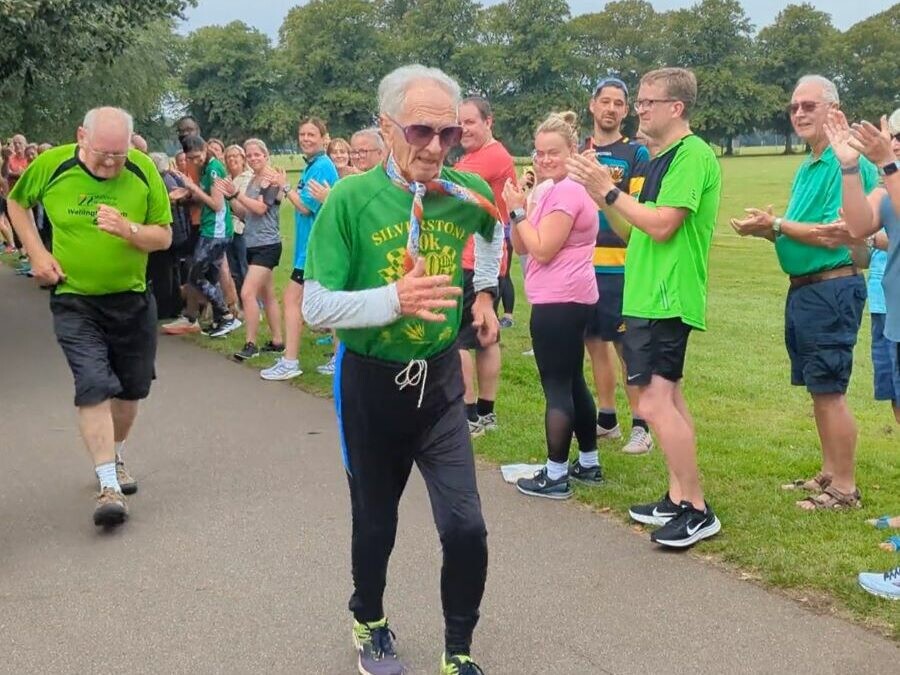
Launched in the U.K. in 2004, parkruns are free, weekly community events, now with more than 2,000 hosted in more than 20 countries including Canada. All parkruns are 5K events held Saturday mornings in parks and open spaces.
Emmerson credits the weekly events with helping him stay fit and active as he strides strongly into his 90s. In a congratulatory post on X, formerly known as Twitter, parkrun organizers quoted Emmerson as saying “my enthusiasm for life is down to parkrun and it has kept me mentally and physically stronger than living a life in (my) armchair.”
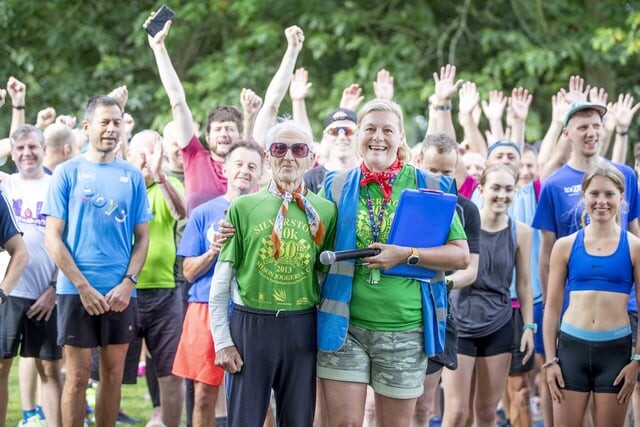
Although Emmerson first heard of parkrun a little more than a decade ago, he has been running since age 15. He told the BBC News he was a “proper, serious ultra-runner” when he was younger. He has completed ultramarathons and 24-hour races, and boasts a marathon personal best of 2:40:25.
Due to restrictions that forced parkruns to be put on hold during the COVID-19 pandemic, Emmerson’s 500-event milestone ended up taking a little longer than he had originally hoped. “I would have liked to have reached 500 by 90 years old,” he told the Northampton Chronicle and Echo. “I said that when I got to 500 I’d stop, but I changed my mind. I’ve made too many friends and couldn’t bear to lie in bed on a Saturday morning and think of everyone running.”
Emmerson, who these days finishes the Northampton parkrun course in around 50 minutes, added any future parkrun milestones are too far down the road to think about. “I’m not going to do 600, but who can tell?” he said. “You never know. Never say never. As long as I live, I shall be doing a bit of exercise.”
by Paul Baswick
Login to leave a comment
Five ways to improve your 5k time
The 5k is an often underestimated challenge and with the rise of parkrun it has become one of the most popular distances for runners with thousands lacing up each week.
While some will say time isn’t important, deep down 99% of runners, regardless of ability, all want to get faster – whether that is breaking 15 minutes or 25 minutes for the Olympic distance.
When coaching I get asked quite a lot about improving 5K times, what are the secrets? what training sessions should I do? Truth be told there are numerous things you can do to take a slice of your previous best and equally it depends on the individual too.

However, there are five key pieces of advice that I pass on to everyone; get race experience, practice at race pace, don’t be afraid to run less, train with a group and lastly, find a fast race.
1) Get race experience
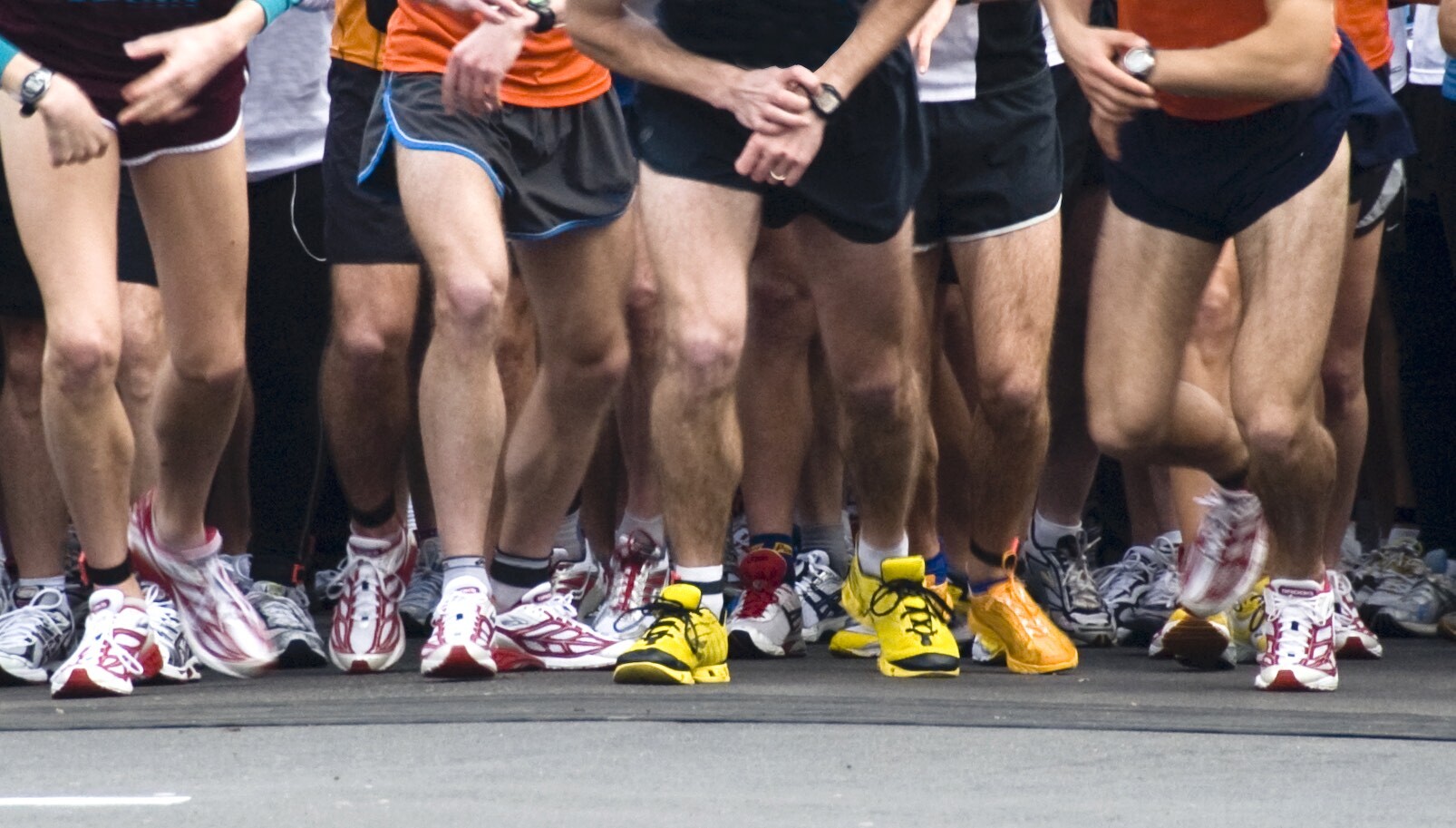
The beauty of the 5k distance, compared to something like a marathon, is you can race again a lot sooner between your last and next event.
This will allow you to experiment and learn what gives you the best push, maybe a certain season suits you better or racing at a different time of the day. Also, everyone races differently and motivates themselves in alternative ways, so you could be a natural front-runner like Steve Prefontaine or love chasing other runners down in the final sprint like Mo Farah. It can be a bit of trial and error, but finding what works can make a big difference in your results.
2) Practice at race pace
Speed Intervals can be a key part of your 5k training, but don’t just go out as hard as you can and hang on until you can’t go any longer. Target the pace you want to run your 5k at and break it down into sections.
A good rule of thumb is to have 5k worth of intervals at 5k pace or 10k worth of intervals at 10k pace, so 5 x 1km at your goal 5k pace, reducing the rest as your training progresses, would be a great session.
Matt Clowes, a runner who has a 13:58 5K personal best also advises about training beyond the 5k distance.
“Training to run a fast 5k requires a good mix of speed and endurance,” says the Cardiff AAC runner. “Going over and under the distance gives a wider scope to crack the distance.
“A typical track session I do when training specifically for a 5k is 6x1k @5k race pace with 90 seconds recovery between each interval.”
3) Don’t be afraid to run less
While it’s important to develop your endurance base, like Matt advises, do not simply on miles to the detriment of your quality sessions, and always pay attention to how you feel and your level of fitness.
With 5k running coming under the VO2 Max bracket of training it’s not all about endless miles, but about the quality as well. If you need to reduce the mileage a little bit to really hit your key sessions then don’t be afraid to.
4) Train with a group
If you are not currently a member of a club, have a look online for a running club in your area or group from your local parkrun.
Find a group that has a similar goal. This can help keep the motivation high, whether it’s getting out on a recovery run and keeping the pace sensible or just pushing the pace to where you want to be on your speed intervals. If you have to suffer, might as well have company.
5) Find a fast race
Not all races are created equal and if you’re running a parkrun with two muddy hills and a hairpin bend on every lap or a road race with more hills than you can count on one hand, then it might not be a PB course.
Investigate where fast times are run or go to a certified 5k road race.
by Ben Riddell
Login to leave a comment
Six ips for running your best 5k
5k (or 3.11 miles) races are some of the most popular running events in the country. Every weekend parkruns are available in over 1,600 locations globally, and there are plenty of great 5k events up and down the country, which make an ideal starting point in your running journey. If you’re nervous about training for a 5k or you’re looking to run one in 20 minutes or less, then these tips and best-practices will give you the perfect platform for success.
1. WARM-UP & WARM-DOWN
Whether you’re a running beginner, or you’re pushing for a new PB, 5k runs pose a high injury risk due to people not respecting the distance or by pushing too hard. Before every run, you should do a gentle warm-up jog and then do some dynamic stretches, including lunges, heel-kicks, high knees, jumping jacks, and sideways skips. This will make sure that all the little muscles are ready for the challenge ahead.
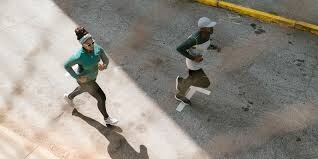
Warming down is just as important, and easy to skip when you’re tired after a run. But stretching out your calves, hamstrings, and glutes properly after a 5k run will make a massive difference in preventing injuries, and will help in recovery so you can head out for another training run sooner. Alternatively, you could try out a quick and easy pre-run yoga or post-run yoga routine.
2. BUILD UP THE DISTANCE

Although you’re not training towards a marathon, it’s not necessary to run the full 5k on your first training run. The reason ‘Couch to 5k’ has been so successful recently is because it doesn’t demand too much too soon. If you are building fitness, a couple of shorter 1-2k runs will get your heart pumping and wake up your leg muscles. You can even alternate between running for 5 minutes and walking for 2 minutes, and then work towards a continuous 5k run. If you need a helping hand here, than you can download our free 6-week 5k training plan here, which will take you through your 5k training, step-by-step. There are a number of options within the plan from how to run 5k in 20 minutes or less to circuit pattern ideas and motivational quotes for race day.
3. TECHNIQUE
5k races tend to be high intensity runs, as opposed to long-distance events which require steady jogging. Rather than just pushing yourself flat out, though, there are some technique tweaks that can be made, which will help keep you springing forwards, improve posture, and prevent against injury:
make sure to engage your core and keep your upper body straight
pump your arms
push your hips forward, and try to land your feet beneath your hips rather than too far ahead
visualize the road coming up to meet and support your feet rather than your feet hitting down into the road
4. INTERVAL TRAINING
Once you’ve built up the distance to the full 5k, and you’re confident with your technique, you can start improving your speed. Interval training is really useful for this, and it can often be a good idea to head to your local running track. Sessions might look like one of the following:
500m warm up; 3x400m sprints with 2 min rest in between; 1x800m push; 500m warm down. Total distance: 3,000m
400m warm up; 5x200m push alternating with 5x200m gentle jog; 400m warm down. Total distance: 2,800m
300m warm up; 1km race pace, 2km gentle pace, 1km race pace; 300m warm down. Total distance: 4,600m
These distances can change as you get fitter, and you might also choose to work according to time instead of distance.
5. SUSTAINABLE PACE
It’s important that you know what your standard pace is. Settle into a good rhythm, where your heart-rate and breath are sustainable. It is unlikely that you’ll be able to push for the entire 5k, so you’ll need to pace your race. Don’t come speeding out of the blocks and waste all of your energy early on. Use your training to discover what a manageable pace is, and stay there for the first 3km or so of the race, and then push for the final 2km. Like all professional runners, you should aim to be running negative splits i.e. your final kilometers should be faster than your first couple.
6. NUTRITION
An energy bar or banana 40 minutes or so before a race will give you time to digest and for the energy still to be there. You want to avoid anything too high in fibre close to the race, because this might give you stomach cramps. Work out what works for you well ahead of race day. It’s also important to stay hydrated with water or energy drinks before, during and after a race. You also want to focus on recovery: have something high in protein within 20 minutes of exercise to repair your muscles, and replenish your blood sugar with a treat. You’ve earned it.
by Aidan Thomson
Login to leave a comment
Here’s why racing a team event will make you a better runner, racing with a friend or several will revitalize the way you approach competition
Either you love running in groups or you prefer to do most of your runs solo–most runners seem to have a preference. Even if you’re a die-hard solo runner, entering a race as a duo or team of several will be a game-changer.
I enjoy my alone time, and with the exception of heading out to our local parkrun or community events, I lace up and train by myself. Many of the races I enter have team options, but I generally run solo. To wrap up the summer trail racing season this year, my partner and I decided to race The Lone Wolf, a last-man-standing looped-course race on the beautiful trails of Fernie, B.C.
I learned more from running with my partner than from any other race this year. Here’s why you should try a team event, even (or especially) if it means stepping outside your comfort zone.

You’ll be inspired by your teammate(s) and connect to the larger community
I know toeing the line as a solo racer is motivating in itself, and you might be wondering why a team effort would be different. Many people at the event were part of the ultratrail community I run in regularly, so it wasn’t a whole new crowd. It was, however, a new perspective; I had no idea how my husband and I would run as a team.
Running as a team changed my approach to the race and the people within it. I had a whole new set of competitors to get to know, and it was fun to watch them interact and try to guess how many loops both team members could manage. I wasn’t obsessing over pace and timing, so I was able to take the time to connect with different, fascinating people at the race. As always when connecting with new runners, I learned from them–and am already looking forward to crossing paths with them again.

As part of a team, you need to focus on the process rather than the results
Stepping into a team event means giving up a substantial amount of control over the outcome. If you’ve experienced a few races, you’ve probably had one that didn’t go as planned, and after a race like that, many of us go over what went wrong and how we could develop skills to avoid those problems in the future.
On a team, you truly have no idea how the race will pan out for your teammate or group members, so you’re forced to give up that PB mentality and focus on how you can make the race flow more smoothly for all involved.
Instead of worrying about whether my team was going to blow everyone away, I had to stay on top of the few things I could control. The race we entered required one team member to be on the starting line every hour on the hour (backyard ultra style), so I needed to be ready to switch out my partner, along with providing encouragement and trying to imagine what they might need when they finished a loop. My role as a runner shifted to also being that of a fan and crew member, and as a result, I had more fun than I expected.
You’re guaranteed to learn things you can incorporate into your solo racing
The skills you learn through teamwork will be useful when you head back into a race on your own. Remembering the importance of being dialled into the process rather than the result is something most runners should work on. Entering each race you run with a mindset intent on encouraging others can actually help you become a faster, more efficient athlete (and science backs this up).
After a few tough races, trying something different at the end of the season was revitalizing. A team event lessened the pressure I usually place on myself, so I wasn’t as nervous throughout the race, and I was perfectly content with whatever outcome our team had–the goal was to have fun.
Many regular runners have personal goals to beat every time they race, and it can be a relief to jump into something where the only true goals are connecting with others, having a blast, and moving your body. I can’t wait to do it again.
by Keeley Milne
Login to leave a comment
Five reasons why you should run on vacation
When you hear the word ‘vacation,’ running usually isn’t the first thing that comes to mind. But running is the perfect form of exercise when you are travelling because it allows you to sightsee, stay in shape and get a little you-time.
Here are five reasons why you should pack a pair of trainers on your next trip.
1.- The perfect way to explore a new place
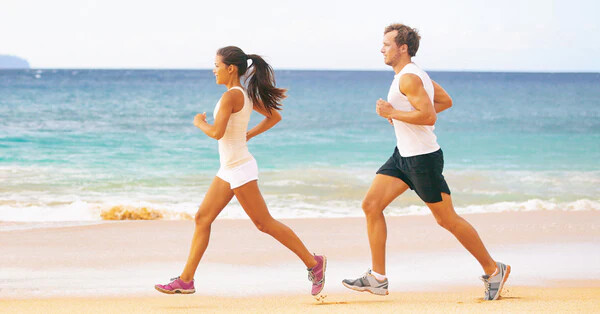
Running in a place you’ve never been lets you see a lot more than what you’d see from a bus or sauntering around (though of course, you’ll do that, too). It’s a great way of learning where to go in a new city.
You can explore a city’s history, beaches, trails and everything in between. If you are visiting a hilly city like San Francisco, Vancouver or Paris, you can get in a hill workout and see the sights at the same time. You may even catch the sunrise if you get up early enough.
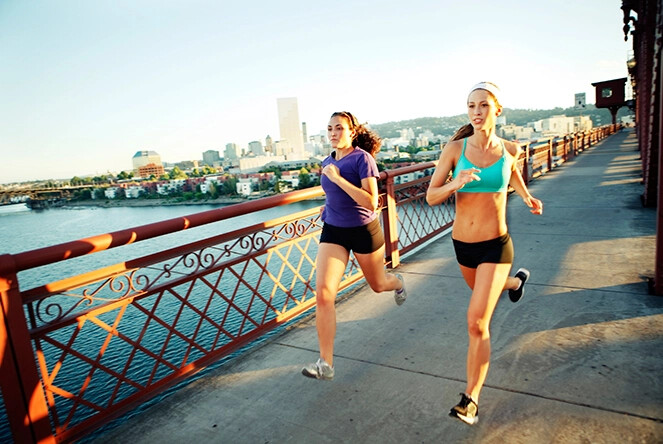
2.- It is an efficient way to get around
The more you use your legs, the less you need alternative means of transportation. One of my favourite things to do is to run to the beach, swim and run back, which is also a great way of staying cool.
3.- Great way to stay in shape
We are not asking you to do interval training, but why not stay in shape while on vacation? Your run does not have to be as intense, but at least you will not go home feeling bad that you completely neglected your training.
4.- Immerse yourself in the local running community
Run the local parkrun, or check out if there are any run clubs on Strava or at the local running store. This is a great way to meet like-minded people and immerse yourself in the culture. You may discover new places to eat or visit from the recommendations of local runners, not to mention making new friends.
A local run group will also help you find the best trails, routes, and runs in the area–allowing you to gain the full vacation experience.
5.- It looks cool on Strava
Whenever someone is in a unique place on my Strava feed, I develop a severe case of FOMO (fear of missing out) and instantly smash the kudos button.
Imagine being a local legend in Greece… or achieving a CR in Australia. Also, do not be afraid to share landscape pictures of beaches, local eats and sunsets for some extra jealousy and kudos on your post.
by Marley Dickinson
Login to leave a comment
Sir Mo Farah will be targeting his eight victory at the Vitality London 10,000 as his first race back since picking up an injury last year
More than 16,500 people will take part in the Vitality London 10,000 on Bank Holiday Monday May 2, headed by elite races that will see Sir Mo Farah returning to racing for the first time since June 2021 and the event debut of in-form Eilish McColgan, who could threaten Paula Radcliffe’s 19-year-old British and European 10K record.
Sir Mo is the most successful athlete in the history of the Vitality London 10,000, with seven victories to his name, and the multiple world and Olympic champion will use this year’s event as his first race back since picking up an injury last year while trying to qualify for the Tokyo Olympic Games.
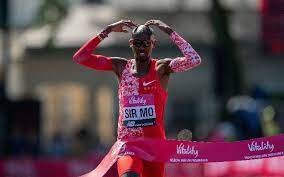
The 39-year-old will face his long-time friend and adversary Chris Thompson, as well as Phil Sesemann, the first British finisher at last year’s London Marathon. Andy Butchart, however, has had to withdraw from the race.
McColgan comes into the elite women’s race in red-hot form having smashed the British 5K record in Malaga, Spain, last Sunday (April 24). The Scottish star is already the owner of the women’s only British 10K record (30:52), which she set at the Great Manchester Run last year.
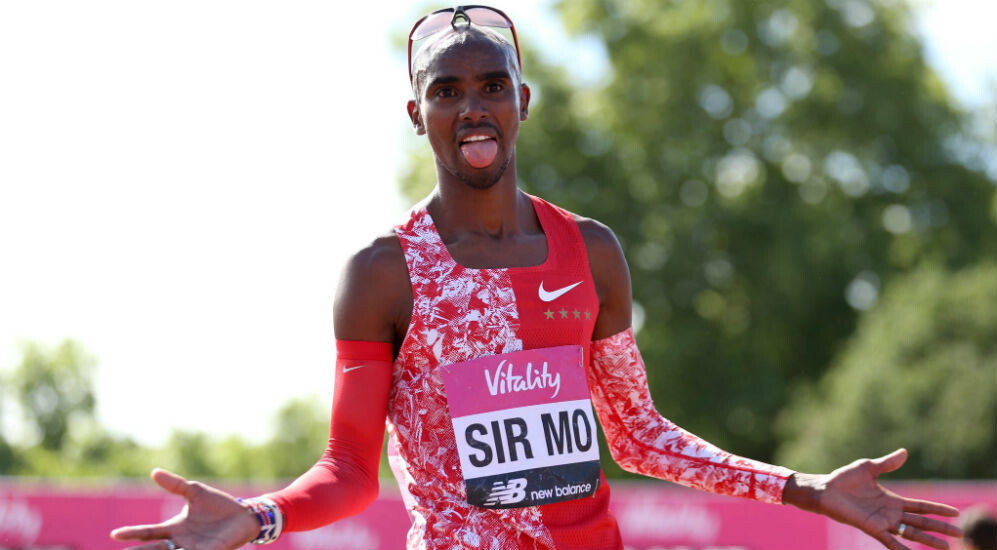
Only two British women have ever run faster over 10K than McColgan: Radcliffe, whose European and British record stands at 30:21, and McColgan’s mum, Liz Nuttall (formerly McColgan) who is the Scottish record holder with her personal best of 30:39 set in Orlando in 1989.
McColgan said: “I couldn’t have asked for a better start to my 2022 season than to set a new British 5K record in my first race. Now I’m really looking forward to coming back to the UK and running the Vitality London 10,000 and seeing what shape I am in over 10K.”
Joining McColgan in the elite women’s field is two-time Vitality London 10,000 champion Steph Twell and Jess Piasecki, the sixth fastest British woman of all time over 10K. Charlotte Purdue, who was ninth at The Boston Marathon earlier this month and was due to race, has had to withdraw due to illness.
A record 18 wheelchair athletes will take part this year, with the field led by Paralympic stars David Weir and Shelly Woods.
There will be 10 start waves at the Vitality London 10,000, including a Run for Ukraine wave, where the 2,000 entrants are encouraged to wearing blue and yellow and fundraise for the Ukraine relief effort. One hundred per cent of the discounted £15 entry fees for this wave will be donated by organisers London Marathon Events to the Disasters Emergency Committee (DEC) Ukraine Humanitarian Appeal.
Anthony Seddon, 40, from Brighton, is one of those who will be joining the Run for Ukraine wave, as part of a 1,569-mile fundraising challenge to raise money for a cause that means so much to him.
Anthony’s wife Anna is Ukrainian and he is running 10 kilometres for as long as it takes to complete 1,569 miles – the distance between the football grounds of Brighton and Hove Albion, the club he supports, and Anna’s favourite football team in her home town of Dnipro.
Anna’s mother has fled Ukraine to live with the couple in Brighton, but the remainder of her family remain in the war-torn country.
Anthony said: “Anna has many friends and family still in Dnipro, some unable to leave but most wanting to stay in their homes.
I met Anna while watching England play football at the Euro 2012 tournament. As it was football that brought us together, I have committed to run those 1,569 miles, the distance from Brighton’s Amex Stadium to the Dnipro Arena by way of running events like the Vitality London 10,000 and other half and full marathons until I complete the distance.
“Between our fundraising page and money donated by friends and family beforehand we have managed to send more than £16,000 of aid so far and we hope we can send so much more. Every penny we raise is spent solely on medical aid.”
After a successful first edition in 2019, the Celebrate You wave returns to this year’s Vitality London 10,000 to promote the mental health benefits that regular exercise delivers.
The wave of 1,000 participants will be led by Celebrate You co-founder, journalist and author Bryony Gordon who will be running her 10th consecutive 10K as part of her ‘10 days of 10Ks’ challenge to promote the importance of activity for mental health and the peer support group Mental Health Mates that she founded in 2016.
Also running in the Celebrate You wave are theatre star Carrie Hope Fletcher, body positivity influencers and models Shareefa J and Jade Seabrook and Helen Thorn, one half of the comedy duo Scummy Mummies.
The Vitality Westminster Mile, staged in partnership with Westminster City Council, takes place on Sunday 1 May, with thousands of participants taking on a series of mile events throughout the day from 10:00 to 14:30.
Among the 15 waves on the day are the #RunforRuth wave for the Ruth Strauss Foundation, led by Sir Andrew Strauss, and a Special Olympics GB Unified Mile. There are also nine family waves, a parkrun wave and a junior wheelchair athletes wave. Parents or guardians have been able to register children under-12 for free.
The free Vitality Wellness Festival takes place in Green Park on both days, featuring exciting free activities for children on the Sunday and the chance to run on the Vitality Tumbleator, a giant treadmill, on both days.
The events share one of the most stunning Start and Finish Lines in sport, with The Mall providing the setting for an iconic start and Buckingham Palace as the backdrop for a stunning finish.
The Vitality London 10,000 will be broadcast live on BBC Sport Online, iPlayer and Red Button, as well as the Vitality London 10,000 Facebook page, from 09:45 to 11:45.
Login to leave a comment
Vitality London 10,000
The Vitality London 10,000 takes you past many landmark sites, including the London Eye, Buckingham Palace and the Bank of England – so you even get to do a bit of sightseeing along the way! You will run alongside elite runners and have coverage from the BBC, making this 10km one of the highest in profile of its kind....
more...Want to be healthier? Volunteer at a race, New research says even just volunteering at a local 5K can provide a lot of health benefits
From registration to course marshals to the post-race snack table, volunteers are the backbone of any road or trail race. Here at Canadian Running, we tend to focus on running in races, but a recent study from the U.K. found that the simple act of volunteering at a local 5K can benefit your health. Here’s how.
The health benefits of volunteering
The study, published by Sheffield Hallam University in the UK, asked more than 60,000 parkrun participants who were either volunteers, run/walkers who also volunteered or run/walkers who did not volunteer, to answer questions about their motivations to participate, and the perceived impacts on their mental and physical health.
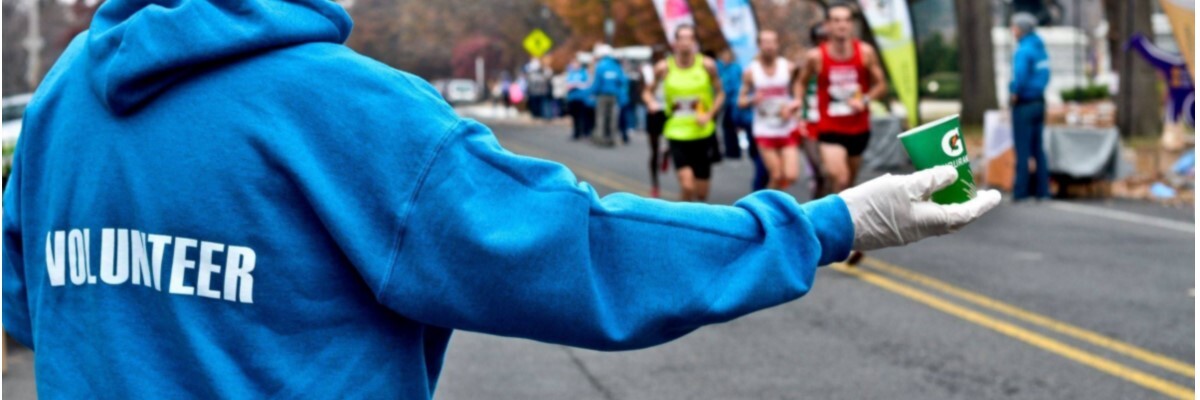
The participants who volunteered exclusively said their main motivations were to give back to the community, to feel part of the community, to help people or because they couldn’t run. Very few volunteers said they were motivated by potential benefits to their mental or physical health.
The researchers found, however, that people who volunteered but did not run still experienced health benefits. According to the results of the study, the exclusive volunteers reported the following:
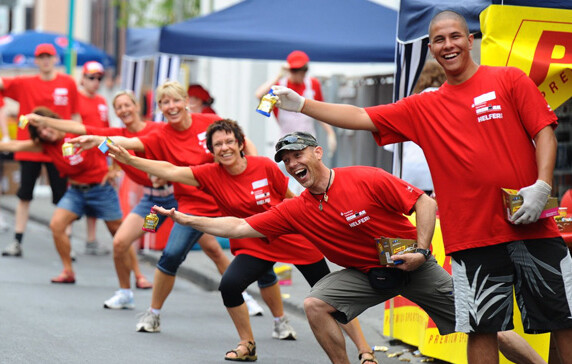
Improved connections to others/feeling like they were a part of a community (83 per cent)
Meeting new people (85 per cent)
Time spent with friends (45 per cent)
Improvements in mental health (54 per cent)
Improvements in physical health (29 per cent)
The improvements highlighted in the study were all subjective (they were reported by the participants), and the researchers don’t go into detail about exactly how their physical and mental health was improved, but this data shows that even the simple act of volunteering can make you a healthier, happier person.
Other reasons runners should volunteer
Aside from the health benefits, there are many more reasons runners should consider volunteering at a local race. For example, volunteering is a great way for injured runners to still be a part of their local running community and support their friends, even when they can’t be on the startline themselves.
Runners who volunteer will also get a behind-the-scenes look at what it takes to organize their favorite races, which will give them a greater appreciation for everyone and everything involved the next time they’re on the start line. It’ll also give them more tolerance when things don’t go as smoothly on race day.
Finally, volunteering can be a tonne of fun. While volunteers do have a job to do, they also get the opportunity to cheer on runners, and often get some great race swag, too. So if you’re injured, returning from a running layoff or simply want to give back to the running community, consider volunteering at your next local road race. It’ll be a fun way to improve your health.
by Running Magazine
Login to leave a comment
The road to racing's return
Athletes have hit the ground running when it comes to the return of mass road race action, but what has it taken to stage some of the world’s most prestigious events in the current climate?
A total of 10 top-tier World Athletics Elite Platinum Label road races – including marathons in Berlin, London, Chicago, Boston, Amsterdam, New York and Valencia – have taken place in 2021, with many of the world’s leading athletes joined on the city streets by significant mass fields.
In addition, around 30 World Athletics Elite Label and 50 World Athletics Label races will have been held around the world, with many protocols and procedures in place to ensure the health and safety of participants.

While some measures, such as Covid testing and reduced or more spread-out fields, were obvious, huge work was also done behind the scenes by organizers to allow these races to return.
“We were asking a lot from our participants this year, in order for us to be sure we could get the event on, come what may,” said London Marathon communications director Penny Dain. “We put protocols in place that we had never done before, to make the event Covid safe. We went out to our participants outlining these in our Six Steps to the Start Line campaign, and asking for their help, support and understanding that yes, it is different, but by helping us do this, it means we can be sure the event goes ahead.
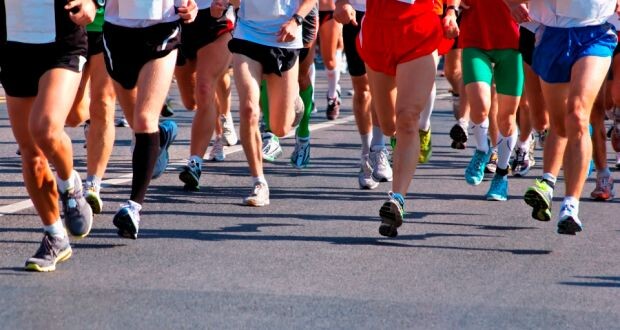
“It was genuinely a truly special day,” added Dain, with the traditional April event having taken place as an elite-only race in 2020 before a second consecutive October running this year, featuring 35,000 mass race finishers. “It had been 889 days since we had last delivered the London Marathon and to have that back – to see the joy, the emotion, the crowds – it was special.
“We are working together to encourage people back. It’s all about the importance of mass participation events and parkrun in terms of what regular exercise does for physical and, almost more importantly, mental health.”
Six Steps to the Start Line
Among the earlier steps taken by London Marathon organizers was to ask participants to update their predicted finishing times to enable the effective organization of the many waves. On race day, organizers started people over 90 minutes in waves of 1000, meaning the density of the runners on the course was spaced out because of the seeding.
Official kit bags were sent to runners to drop off at the Running Show in advance, removing the need for baggage trucks at the start areas – reducing dwell time and crowding at the start – as well as a lot of the infrastructure at the finish.
A negative lateral flow test was required in order to drop off kit bags and collect bib numbers in the days leading up to the race and random additional checks for further negative results were also done at the start on race day. Participants were asked to bring only one supporter to reduce crowds and the mass race did not feature any pacers.
The London Marathon is far from alone in having protocols such as these in place, and many more procedures were undertaken for both the elite and mass events.
“Generally, the optimism and determination was always there to make it happen, but always in combination with knowing that it had to happen safely,” added Dain. “We were always very attuned to what was going on in the world.
“It had to be the right thing for London, for the UK, for society. That decision to go for the October date is what made it possible. Clearly if we had stuck to our April date, it wouldn’t have happened.”
Ten-week thriller
As a result, seven major international races were held in a thrilling 10-week period between September and December – starting with the BMW Berlin Marathon on September 26, through to the Maraton Valencia Trinidad Alfonso EDP on December 5. Just before that, the Vienna City Marathon – a World Athletics Label road race – took place on September 12, as the first major city marathon in Europe since the beginning of the pandemic.
“A tailor-made prevention concept combined with the very high vaccination rate of 93% of participants made the event possible,” said organizers of the two-day event, which featured 18,118 runners from 125 nations overall. “More than a week after the event, the Health Service of the City of Vienna confirmed that no infections with Covid-19 were recorded in connection with the event.”
“Runners gave us overwhelmingly positive feedback. They were happy that the race took place and felt safe in terms of Covid prevention,” organizers added.
“Elite racing and mass racing belong together and are deeply connected with each other. It’s one of the unique features of road running, that fun runners and Olympic champions can take part together at the same time and the same place in the same event. If we lose this, the world of running will be a different one, certainly not a better one.”
Organizers had previously arranged nine small races in Vienna under strict Covid rules, with a maximum of 200 participants, in order to give the running community some motivation and to learn as an organizer how to handle the measures. The prevention concept for the Vienna City Marathon included the requirement of a current negative Covid test to collect start numbers, a reduced limit of 28,000 registered runners and enlarged start and finish areas.
“It (the return of the event) is a contribution to society in terms of public health, both mental and physical, a step on the return to normality, a welcome boost for the economy and tourism,” added organizers.
Around 10 Label road races are scheduled for the remainder of this year, with the 2022 calendar to be announced this week.
So runners can sign up, lace up and enjoy road racing’s return, with the knowledge that Label road race organizers are doing all they can for the safe hosting of events.
by World Athletics
Login to leave a comment
Thousands run through London in first mass 10k since lockdown was lifted
Thousands of runners have taken to the streets of London for their first mass 10k since lockdown restrictions were lifted.
Roads across central London were closed as the runners in the Asics London 10k swept past views of landmarks to the sound of cheering crowds and entertainers who lined the streets.
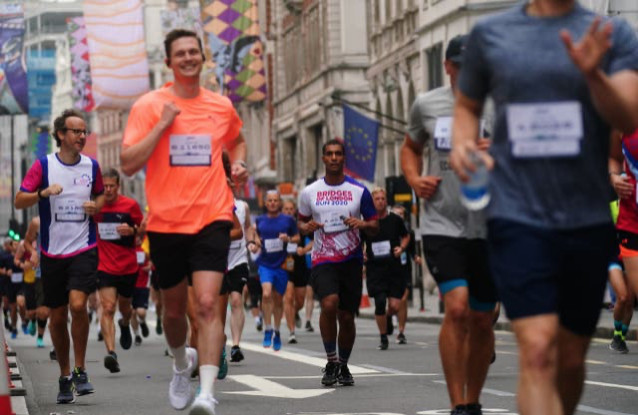
Race director Ian Allerton described it as “an important day for the mass participation industry” as many runners helped raise funds for more than 200 charities in what he hoped would be the start of “a new season of safe running events in 2021”.
TV presenter and activist Katie Piper who was the victim of an acid attack in 2008, officially started the race before stepping out to become one of up to 14,000 runners on the course.
Her run was to raise funds for a rehabilitation centre and she later said she had “such an amazing day”.
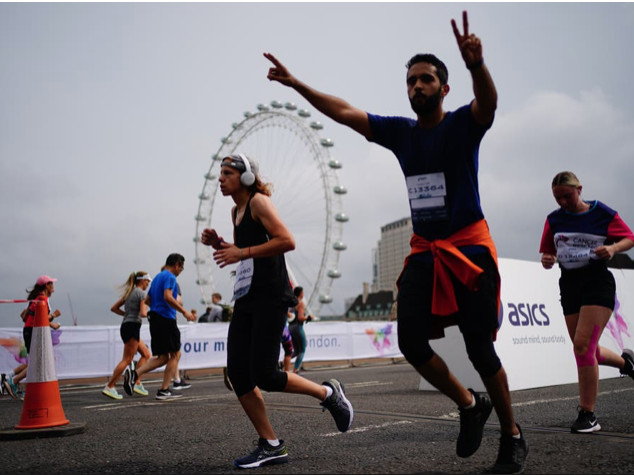
Ms Piper said it had been “really powerful” to see the benefit the race had on her mental wellbeing and on others who took part.
Organisers said they have been working closely with Westminster City Council and Public Health England over the past six months to ensure the event was Covid-secure.
The annual mass participation event, which was billed as “London’s best summer celebration of running,” was previously cancelled due to the pandemic.
The 2021 route was brought to life by the sounds of live bands and DJs at every 1km to help the runners keep moving as they raced past landmarks such as Westminster Abbey, Big Ben and the London Eye.
Andrew Heyes won the male race with a time of 29 minutes and 25 seconds, Natasha Cockram clocked 33 minutes and 37 seconds to cross the line first in the female run while Bethany Evans was victorious in the wheelchair event with a time of 40 minutes and 42 seconds.
Mr Heyes said: “I really enjoyed the sights and am so excited to be back after 18 months.”
Ms Cockram added: “It was brilliant being back out on the road. Since the pandemic I’ve only been able to train on the track.
“Being out on the big wide roads is so exciting, I want to do it again.”
The event came a day after thousands of adult joggers and walkers in England laced up their trainers to take part in 5km Parkruns in local parks for the first time since lockdown eased.
Login to leave a comment
Asics London 10K
When we run together, amazing things happen. We unite in a common aim, we spur each other on, the stuff that divides us falls away and we keep on going. So, this summer we invite runners of all abilities to unite in one of the world's most inclusive and diverse cities to celebrate the things that bringus together. When you...
more...Timetables confirmed for Bathurst and Yangzhou
World Athletics and World Masters Athletics have reached a historic agreement that will see masters championships held for the first time alongside the World Athletics Cross Country Championships in Bathurst, Australia, next year.
The World Athletics Council approved the proposal last week while confirming the competition timetables for both Bathurst and the World Athletics Half Marathon Championships Yangzhou 2022.
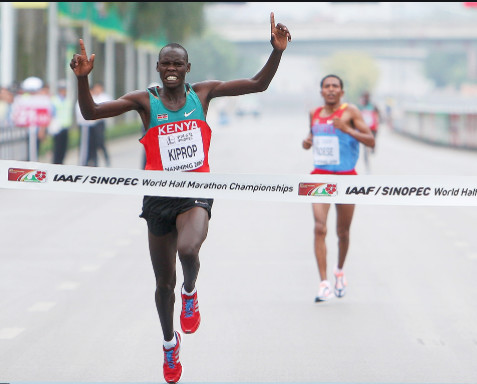
World Athletics, World Masters Athletics and the Bathurst Local Organising Committee will work together to organise the inaugural World Masters Cross Country Championships (short course) on the weekend of 19-20 February 2022.
"We have worked hard over the last few years to develop closer relationships with the various sectors of the global running community, including recreational running, mountain and trail running, and parkrun, because that makes our athletics community stronger, so I’m delighted to announce this new initiative in cooperation with World Masters Athletics," World Athletics president Sebastian Coe said. "We look forward to welcoming passionate runners of all ages and abilities to Bathurst next year for what promises to be a unique festival of cross country running."
World Masters Athletics president Margit Jungmann added: "We are excited to offer this new opportunity for masters athletes around the world to come together and celebrate their love of running and competition, and to join with the best cross country runners in the world to test themselves on the scenic Mt Panorama course at Bathurst in Australia. We are pleased to be working with World Athletics to make this a uniquely memorable event for all the masters athletes who attend."
Originally scheduled to take place in March 2021 before the Covid-19 pandemic led to its postponement, the World Cross Country Championships in Bathurst will now be held on 19 February 2022. The timetable is as follows:
14:35 U20 women’s 6km15:15 U20 men’s 8km16:25 mixed relay17:05 senior women’s 10km18:05 senior men’s 10km
The World Masters Cross Country Championships will include a mixed 4 x 2km relay, tentatively scheduled before the World Athletics events on Saturday, 19 February, and a series of age group races on Sunday, 20 February.
World Athletics Half Marathon Championships Yangzhou 2022
The timetable for the World Athletics Half Marathon Championships, scheduled to take place in Yangzhou, China, on 27 March 2022, is as follows:
9:30 women’s race10:00 men’s race, followed by mass race
As with previous editions, there are no entry standards for the competition. A maximum of seven athletes may be entered by a member federation, but only five can start the race. The top three finishers for each member federation will count towards the team competition.
For the fifth successive edition, the World Half Marathon Championships will feature a mass race, giving thousands of recreational runners the chance to run in the footsteps of the best athletes in the world.
by World Athletics
Login to leave a comment
Olympic hopes ready to bloom at Kew Gardens
Marathon runners and race walkers are poised for thrilling and richly symbolic races on March 26 in Kew Gardens
If athletes taking part in the Müller British Athletics Olympic Marathon and 20km Walks Trials in Kew Gardens this month need to focus their minds on what is at stake, they merely need to glance to the side of the course during their race.
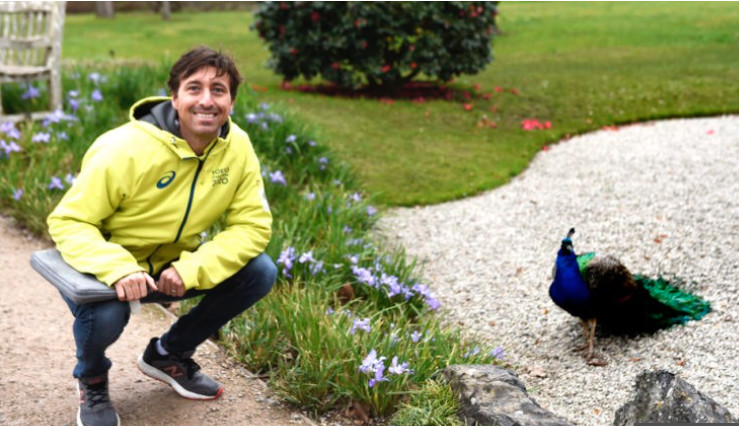
The event on March 26 coincides with ‘Sakura season’ – the time of year when cherry blossom trees come into bloom. Not only will it provide a picturesque back-drop but it is the national flower of Japan and a timely reminder to the runners that their efforts on the roads of south-west London could see them win a ticket to Tokyo.
Tom Bedford, the race director, describes it as an amusing twist of fate. It certainly was not in anyone’s mind when the Borough of Richmond venue was chosen ahead of Manchester, Dorney Lake and various horse and motor-racing courses to host the Olympic trials.
Instead, the main requirements were a fast, flat and sheltered course that can help athletes nail Olympic qualifying standards, plus the reliability factor of a venue during such an uncertain pandemic-hit period.
Marathon runners will tackle one small lap followed by 12 big laps, therefore passing the cherry blossom trees and Japanese gardens a dozen times. Organisers have worked in recent months with course measurer Hugh Jones to iron out some of the mild corners on the route, which means the course is not just aesthetically pleasing but fast too.
Bedford is certainly happy with the progress made and points to one particular straight that is almost an entire metric mile in distance.
Contenders like Steph Davis have already checked out the course and Bedford describes it as “more of a flat road relays kind of course” such as the well-known circuit used at Sutton Coldfield for road relays “as opposed to the kind of course you get in big city marathons”.
This is partly because the path is only about four metres wide in places. However, with small fields and multiple pacemakers to ensure the going is quick through the first 30km in order to achieve qualifying times of 2:11:30 and 2:29:30, this should not be an issue. Plus, the course includes none of the inclines that the well-known Sutton Coldfield course contains.
“Our intention has been to make it as fast as possible,” says Bedford. “My advice to athletes is that they just switch off and go to sleep for an hour and follow ‘the train’ and then get ready to go when the pacemakers drop out.”
Amusingly the event also has an unofficial mascot, which Bedford discovered at Kew Gardens recently with AW photographer Mark Shearman. ‘Eric the peacock’ (see below) is a Richmond resident although runners will be hoping he doesn’t stray on to the course on race day.
On a more serious note, Bedford has been helped by his father, Dave, the former London Marathon race director with organising the event. Among other things Bedford Jnr was based in Portugal during the winter and fell ill with coronavirus in January, so his dad stepped into help primarily with technical areas.
The duo have also worked closely with staff at UK Athletics such as competitions and events director Katie Brazier during what has inevitably been a tricky few months due to the pandemic. Was there a particularly bad moment when the race was in doubt?
Bedford says shortly after Christmas when the virus began to surge and hospitals were in danger of being over-run was a worrying time. The Richmond Runfest, which was due to be held at the same venue on the Saturday and Sunday following the trials events on Friday, was postponed until mid-May. Apart from this, the organisers have been keen to give the Olympic hopefuls a near-definite goal to work toward.
“It’s been tough for athletes and they have my utmost respect for how they’ve managed to get themselves through this with everything from problems seeing physios to not even having a national endurance coach in charge during the winter,” says Bedford.
Spectators will not be allowed on race day, but each runner will be permitted one Tour de France-style ‘soigneur’ to help with their drinks. After the mild controversy relating to the British trials for the European Indoor Championships not being streamed, British Athletics are this time showing the action from Kew Gardens while there is still the possibility BBC may show the races too.
This will be the first time for 40 years that a British Olympic marathon trial has been staged as a standalone race in a similar style to the US Olympic trials. In 1980 the AAA Championships and trial for the Moscow Olympics took place in Milton Keynes. It was won by Ian Thompson in 2:14:00 from Dave Black and Andy Holden as 195 men finished. Yet from 1983 onwards the national championships and trials have been part of the London Marathon and the battle for selection is often a ‘race within a race’ with television struggling to capture the action.
There are also obvious comparisons with the standalone US Olympic marathon trials that have taken place in recent years in Atlanta (2020), Los Angeles (2016), Houston (2012) and New York (2011) with the latter, in the city’s Central Park, on a similar multi-lap course to the one we will see in Kew Gardens.
“There is such an appetite for this event,” Bedford enthuses. “I’ve always been a fan of the American trials system. The men’s race will be great on March 26 but the women’s race is going to be an absolute cracker as there are so many top runners in it. And if the athletes can make it as competitive as I think it’s going to be then this kind of trials race could become the norm.”
The venue has great history, too, with the Borough of Richmond being something of a home to British distance running. Not only does the area feature popular training areas of Bushy Park, Richmond Park and Wimbledon Common but it was birthplace of the London Marathon and parkrun.
In the race for Olympic selection, runners and race walkers will finish in front of Kew Gardens’ iconic Palm House glass building. The most symbolic feature, though, will surely be the cherry blossom trees that they will pass on a long winding road that will end, for some, on the streets of Tokyo.
by Athletics Weekly
Login to leave a comment
Twelve cities from around the globe have expressed interest in hosting the inaugural World Athletics Road Running Championships in 2023
The strong international interest in hosting this new event, which will combine elite and mass races in a unique format, is a ringing endorsement of a festival concept designed to unite the international road running community.
The creation of the World Athletics Road Running Championships, incorporating the World Half Marathon Championships, was approved by the Council in December, and cities around the world were asked to indicate their interest in hosting the event.
The 2023 event will include elite races over both 5km and the half marathon, accompanying mass races, and a week-long festival of supporting events, including parkrun events across the host city, a global running conference, health and fitness expos and clinics.
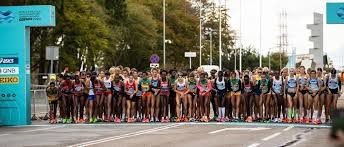
Potential hosts will have to submit formal bids by 1 June and the World Athletics Council will select the host city in July.
World Athletics Continental Tour
The World Athletics Council has approved a greatly expanded Continental Tour calendar for 2021, including 85 Gold, Silver and Bronze meetings, after the new international series was launched successfully last year.
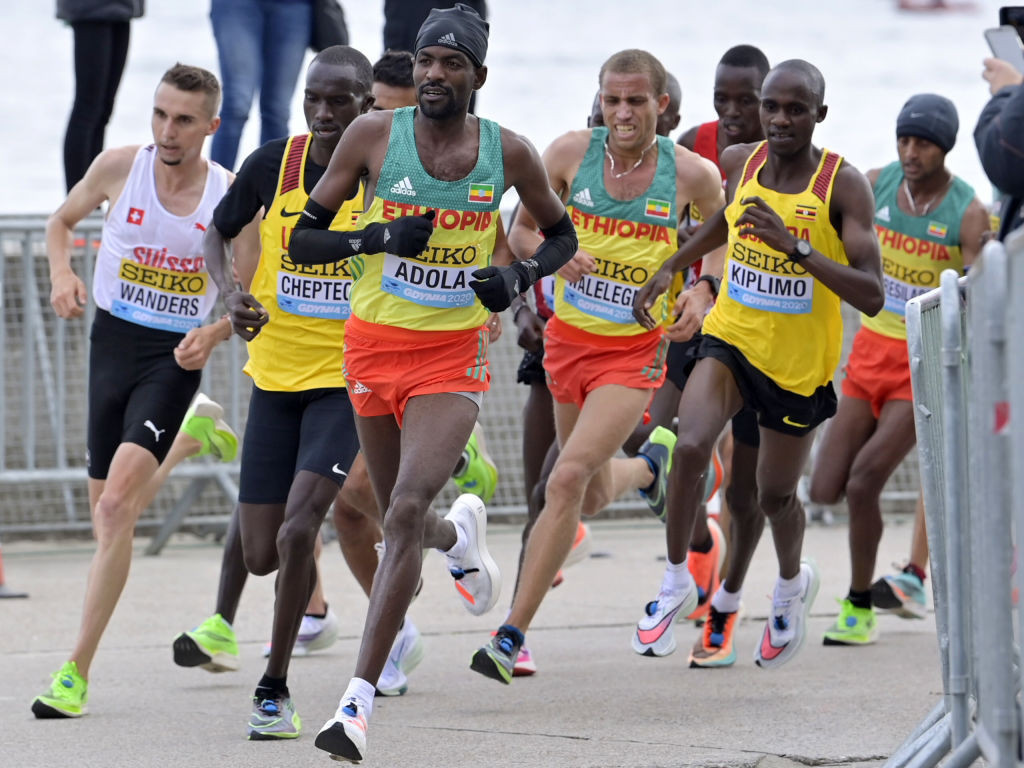
Despite the challenges created by the pandemic, 29 Continental Tour meetings were held last year, including seven Gold meetings (of the 10 that were originally scheduled).
This year’s calendar includes 15 Gold meetings, with two in Africa following the addition of a second meeting to join Nairobi, and three Gold meetings to be held in the United States. The venues for the new meetings will be confirmed shortly.
World Athletics president Sebastian Coe welcomed the commitment of meeting directors and Member Federations across the six continental Areas to create new competition opportunities for the athletes.
“We wouldn’t have chosen to launch a new global athletics tour on the eve of a pandemic, but the Continental Tour proved to be such a strong concept that it thrived even in these adverse circumstances,’’ he said.
“The tour has expanded substantially in 2021, and we’re delighted that it has been embraced so enthusiastically across the world. I’m particularly pleased to see that the US has stepped up to stage three Gold meetings as well as at least nine other Silver and Bronze meetings. These will provide new and vital competition opportunities and prize money for athletes and strengthen our sport both in the USA and internationally. We see the expanded US calendar as an early legacy of the decision to take our flagship event, the World Athletics Championships, to Oregon in 2022.
“We will continue to drive innovation and boost the competition opportunities available to our athletes around the world, with our immediate focus on the World Athletics Relays Silesia 2021, to be held in Poland in just six weeks’ time.”
Competition dates
The Council confirmed the dates for the 2022 World Athletics U20 Championships, which will be held in Cali, Colombia from 2-7 August, 2022, and the 2023 World Athletics Indoor Championships, which will be held in Nanjing, China from 17-19 March, 2023.
by World Athletics
Login to leave a comment
Five ways to use running to survive the festive season
Season’s Greetings! The holiday season is fast approaching… whether you will be celebrating Christmas, the arrival of a new year, or the end of 2020, the opportunity to rest and down tools will be welcome for all of us.
Throughout this pandemic, I have always tried to look for the positives. But let’s be honest – it has been a year like no other, and not in a good way! Thankfully, there is a lot to look forward to in the coming year – vaccines, seeing our friends and families more, travel… and the Olympics!
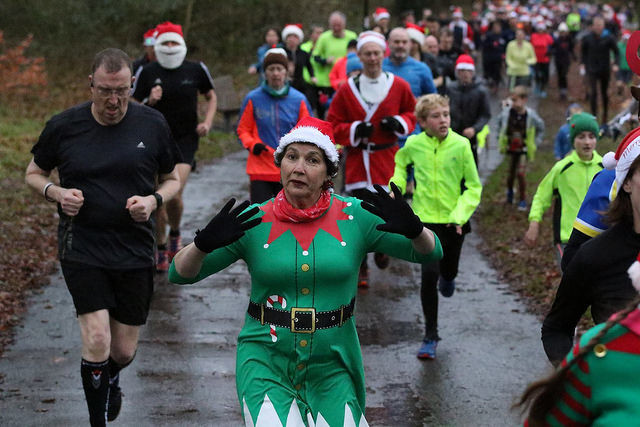
The festive season is truly special in many ways, but it can also be a little stressful. Christmas in the UK is famous for family arguments, excessive drinking, and cold, wintry weather. By the time early January arrives, the return to a normal routine often feels very welcome.
So how best to survive the festive season with a positive mindset? The answer, for me, is definitely… running!
Training out in the fresh air provides the perfect antidote to Christmas excesses of all kinds, and brings a welcome boost to your physical and mental health. But how do you fit it in, on top of all the holiday traditions and celebrations? Decathlon legend Daley Thompson famously trained even on Christmas day – what further inspiration do we need? If you’re not entirely convinced by running during the festive season, here are my five top tips on how to use running to keep your spirits up during the holidays.
Run early!
Even without work to do, somehow the days can fly by during the holiday season, with meals to prepare, gifts to wrap, and relatives to help. Therefore, I always try to run early in the morning, making it the first activity I do for the day. Enjoying some quiet time to yourself by running in early morning light, before the day gets going, sets you up nicely for the day ahead.
Consume in moderation.
Eating and drinking feature heavily in holiday season activities. Enjoying special festive foods at this time of year is great – unless you’re trying to keep your weight down for your next marathon! Being surrounded by delicious food can be, well, torment! I adopted the rule of moderation – to enjoy special treats but in modest amounts, so that I could enjoy seasonal delicacies but without any waistline damage!
Let’s race!
The end or start of a year is the perfect time to set down a milestone of your progress by doing a race. Because of the pandemic, races are hard to come by this year, so why not run a time trial instead? A distance like 5km is ideal since it does not take too much out of you, and you can repeat it reasonably often. If you haven’t yet tried parkrun, why not give it a try, even if it’s a (not) parkrun where suspensions are still in place. World Athletics and parkrun announced a new partnership this year.
Wrap up warm.
In the northern hemisphere, winter is well and truly here. But despite the cold, running in winter can be delightful – frosty crisp mornings, misty sunrises, and silhouetted leafless trees make a run in your local park feel like you’ve been transported to a magical, imaginary wonderland. There’s no escaping those first few minutes which are very chilly, but once you get going and warmed up, winter running feels invigorating!
Plan ahead.
At this time of year, it’s easy to focus entirely on the festivities… and forget that time keeps marching relentlessly on. January will arrive in no time, so why not use the holiday season to plan some running goals, for example a training plan for the next few weeks, a race to look forward to, or a revamp of your nutrition using some process goals. Then you can avoid any sadness when the festivities are over, and press on with your new goals.
by World Athletics
Login to leave a comment
How the latest lockdown affects UK athletics
Track and field training this month will be challenging during English lockdown, whereas restrictions on what is allowed are varied and ever-changing across the UK
Athletics club activity has gone into limbo in England as the month-long lockdown begins. Group sessions and all competitions have been suspended but athletes are still able to train with one other person or enjoy one-to-one coaching in an outdoor public space if they maintain social distancing.

Sports minister Oliver Dowden has urged people to try to stay as fit and healthy as possible during a lockdown that is set to last until at least December 2, but what exactly can athletes and coaches do?
England Athletics say the following is allowed:
» Training with your household or one other person in a public outdoor space.
» One-to-one coaching in a public outdoor space following social distancing, although the governing body is still looking for clarity regarding under-18s and para-athletes.
» Virtual training sessions delivered by qualified coaches and virtual competition.
What is not allowed:
» Indoor and outdoor club group coaching activity.
» Indoor or outdoor competitions.
» Face-to-face coach and officials’ education.
Attempts by England Athletics together with British Cycling and British Triathlon to lobby the Government for exceptions to the lockdown rules failed this week. Many have argued that sport and fitness is vital for physical and mental wellbeing but the Government has refused to buckle and Dowden says: “As soon as we’re in a position to start lifting restrictions, grassroots sport will be one of the first to return.”
In Scotland the situation is complicated by a five-tiered system of coronavirus restrictions. Outdoor competitions, for example, are still permitted in levels 0-3 but not in level 4. Indoor competition, meanwhile, is allowed in levels 0-2 for all age groups and in level 3 for under-17s, but not level 4.
Training group sizes in Scotland are also limited with under-11s allowed a maximum number of 30 athletes, for example, in areas that are levels 0-3 whereas athletes over 12 can train in groups of up to 15 with a varying coach-athlete ratio numbers depending on the age of the athletes. In level 4 areas, under-11s can only train in groups of eight and over 12s in a maximum group size of eight.
In Northern Ireland the maximum group size for both training and competition is 15 with that number including coaches and volunteers.
Wales has been in a 17-day ‘firebreak lockdown’ since October 23 with no athletics clubs or groups allowed to meet together to train and no face to face coaching permitted outside of your own household.
However Welsh Athletics encourages people to keep active. In Wales you can leave your house as often as you like to do exercise and an update is expected from Welsh Athletics after November 9.
Linked to the restrictions, many athletics tracks will now become inaccessible if they are part of leisure centre complexes or run by local councils. Plans by parkrun to return in the UK have also been put on hold, while the Great Run Local events have been suspended indefinitely due to the coronavirus.
Elite athletes will be frustrated by international travel problems, but their training should otherwise not be affected too much because they are exempt from restrictions. The British Indoor Championships is also set to go ahead in the new year, in addition to the British Olympic marathon trials in March.
Those two events at least appear relatively corona-proof although elsewhere the athletics calendar has been decimated with the small number of grassroots meetings that had hoped to happen in England this month being called off.
You can read more about athletics guidelines in England here, Scotland here, Wales here and Northern Ireland here.
by Athletics Weekly
Login to leave a comment
Six-year-old runs marathon to raise money for teacher's illness
Poppy Maxwell is running a full marathon to raise funds for Cancer Research UK. Poppy Maxwell, a Year 2 student from Yaxley, took on the challenge on July 18 after her favourite teacher was diagnosed with breast cancer. On route to finish the race by August 14th, she has already raised over £2,000 for the life-saving charity.
Poppy, whose mother, Amy, is also a runner, has been pounding the pavements regularly since last summer. The budding athlete had initially planned to run 10km in 10 days, but after much consideration, she settled on a longer project – 42km over the course of her summer holidays.
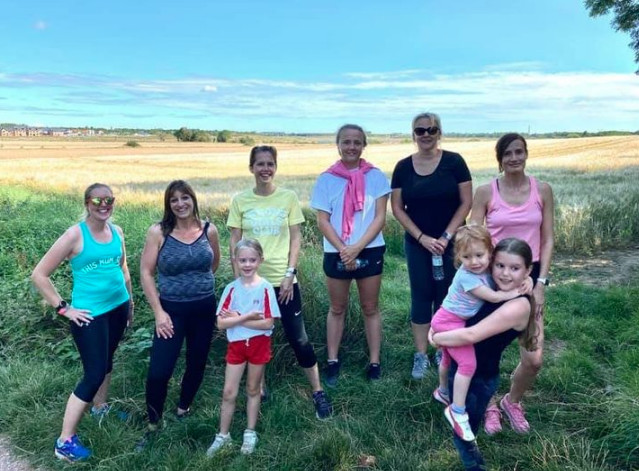
'I wanted to challenge myself and I knew a marathon would be hard, but I wanted to try and raise lots of money,' Poppy tells Runner’s World UK.
While the experience has been mostly enjoyable so far, it has not been without its obstacles.
'Running when it’s hot is really hard!' Poppy admits. The young runner also finds the long stretches tough, taking walking breaks when needed to cover the distance.
Despite these struggles, Poppy stays focused by varying up her routes and running with the support of her family. 'We run in different places including Holkham beach and on trails,' reveals Amy.
Initially ‘a bit apprehensive’ about Poppy’s marathon, Amy and dad Gary have since been blown away by their daughter’s perseverance. 'We've been impressed with her determination and she never complains (unless it's hot!)' Amy says.
Poppy also knows that to complete the marathon, she needs to follow every runner’s favourite training rule – carb up. 'I like to eat pasta, mashed potato and apple Soreen. I want to be a strong runner,' she says.
With just days to go until she finishes her marathon, Poppy is already thinking of her next running goal. 'I'd like to get a new Junior parkrun PB and when I'm older I'd like to start my own Junior parkrun.'
by Runner’s World
Login to leave a comment
Running: ibuprofen use is common – but many athletes are unaware of the risks
Whether you’re an ultra-marathoner or have just started, injuries and muscle soreness from running are inevitable. But instead of taking a break, many runners reach for ibuprofen or other non-steroidal anti-inflammatory drugs (NSAIDs) to get through injuries or pain. Not only can doing this make recovery more difficult, but frequent use of anti-inflammatories can be dangerous. Our recent research shows that NSAID use is widespread among amateur runners – but most are unaware of the potential risks.
While more casual programmes like Couch to 5K or Parkrun UK remain popular, endurance events like marathons and ultra-marathons have seen participation grow over the past 20 years. Amateur endurance athletes’ training routines can be rigorous, resulting in stresses and pains, so many use painkillers to keep training. Research shows significant use of NSAIDs among endurance runners, with one study finding that 46% of London Marathon runners planned to take an NSAID during the race.

Yet this is not without risk. Using NSAIDs is associated with known harms, including gastrointestinal ulcers, acute kidney injury and a risk of cardiovascular events, depending on how much of the drugs are taken and for how long. These negative consequences of NSAIDs are thought to be responsible for 30% of all adverse drug reaction admissions to hospital.
Under the extreme physiological strain of a long-distance endurance event, these risks may be increased and new ones may arise related to the physical stress. Reduced blood flow and motility in the gastrointestinal system make stomach problems common, even without NSAID use. Muscle damage from races can also increase protein in the blood, which can lead to acute kidney damage. This could be worsened by NSAID use.
Hyponatraemia, a potentially fatal reduction in sodium levels caused by water overload, is another problem in endurance athletes. Although fatalities are rare, asymptomatic hyponatraemia occurs in one in ten marathon runners and can also be heightened by NSAID use.
Running through pain
Though much is known about NSAID use by endurance runners, less is known about its use in recreational runners. We surveyed 806 participants in Parkrun UK – which represents a broad range of the running community – to find out about usage in a diverse group of runners. Nearly 90% of the runners surveyed used NSAIDs, usually in the form of over-the-counter ibuprofen. About one in eight runners had a pre-existing reason to avoid NSAIDs, such as asthma. A third of the runners ran at marathon length distances or higher.
Over half of runners took NSAIDs before a run or race. One in ten took them during a run, and two-thirds afterwards. The longer the run, the more likely they were to take NSAIDs before or during. Half-marathoners and marathoners used NSAIDs more commonly. But more concerning were the 33% of ultra-runners (compared to just 17.5% of marathon runners) who took NSAIDs during runs. This is because these races already put stress on the gastrointestinal and renal systems.
Low-mileage runners used ibuprofen to keep exercising with pre-existing pain, ongoing medical issues, or current injuries. However, longer distance runners were more interested in reducing inflammation, soreness, pain and for suspected performance improvements. All types of use should only be done when aware of the potential risk of frequent use.
A third of the runners in our study had experienced suspected side effects from NSAIDs, mainly heartburn and, in a few cases, gastrointestinal bleeding. Over 40% of runners were unaware of the cardiovascular, kidney or gastrointestinal side effects.
Nearly half of the runners used NSAIDs without advice from a healthcare professional. Almost all of those surveyed said they would read advice if provided to them. Even if this response was only the result of completing the survey, it’s clear there needs to be better information available about the risks of using NSAIDs, especially while running.
This lack of awareness combined with long-term use of NSAIDs (especially when taken every run) can potentially lead to health problems. For marathon and ultra-marathon runners, there are even greater specific risks. These long endurance events already put runners’ body under extreme stress, so long-term NSAID use increases risks of life-threatening hypononatraemia, gastrointestinal bleeding, and kidney failure.
Exercise caution
Like all drugs, NSAIDs have benefits and harms. However, given that studies show NSAIDs may be counterproductive to healing and training, their use should be carefully considered by amateur athletes. Someone who uses an occasional ibuprofen tablet before or after their weekly run is likely at lower risk. However, risk rises alongside longer and more frequent runs, especially if they’re only enabled by chronic NSAID use.
But using NSAIDs to run through injury and pain to achieve training targets is counterproductive to the long-term health benefits of running. High usage in a subset of endurance runners during demanding training, and while in sustained physiological stress during events, should definitely be avoided.
To change this culture, more messaging about NSAID safety and running are needed. However, the London Marathon now advises runners to avoid NSAIDs within 48 hours of the race because of the potential dangers. Their decision might also spur other organisations to follow suit.
Login to leave a comment
World Athletics and parkrun to announce a new partnership
World Athletics and parkrun Global Limited are delighted to announce a new partnership by which they will combine their resources to grow the sport of athletics and deliver good health and fitness outcomes for communities around the world.
Parkrun’s simple concept of offering an opportunity for anyone to participate in a free, weekly, organised 5km or 2km run at a local park has captured the imagination of communities around the world over the past 16 years.
From its roots at Bushy Park, Teddington in the United Kingdom in 2004, parkrun has expanded to 20 countries in the past 10 years, and now has more than three million participants globally.

World Athletics, which has 214 Member Federations, and parkrun will work together to encourage people around the world to get moving and keep moving by joining a local parkrun.
Parkrun will assist World Athletics to leave community health legacies in the host countries of World Athletics Series events by creating a series of permanent parkruns in the host cities and countries of world championship events, including the World Championships Oregon 2022 and Budapest 2023. To that end, World Athletics will facilitate government/city support for these events.

World Athletics CEO Jon Ridgeon said parkrun’s purpose aligned perfectly with the sport’s global ambitions for the next four years.
“We have just approved a strategic plan that has the main objective of using the power and accessibility of athletics and our athletes to create a healthier and fitter world,” Ridgeon said.
“One of the ways we are doing this is by developing strong new partnerships where our common cause is to get the world moving. We know that many more people have taken up running during the lockdowns around the world, which makes sense because our sport is the most universal and accessible of all sports, and we want to encourage those people to keep up their new fitness routines as life returns to a more normal footing after the pandemic. Doing a weekly parkrun is an excellent way to stay motivated and find a local running community once mass events are possible again.
“We’re also determined to leave tangible community legacies in all of our future host cities and countries, and there is no better way to do that than by helping to improve the health of their citizens.”
Parkrun CEO Nick Pearson said both organisations were determined to get more people running for their health, fitness and enjoyment.
“This partnership offers parkrun a fantastic platform to demonstrate the role, relevance and value of community health and wellbeing initiatives and to highlight that sport and physical activity is accessible to all,” Pearson said. “It is exciting to see this approach embraced by World Athletics, and we look forward to working with stakeholders in the host countries of World Athletics Series events to support and develop a network of parkrun events.
“We believe that finding positive ways to connect grass roots and community activity with elite sport has multiple benefits and builds stronger sporting foundations and broader engagement. Exercise and physical activity is more accessible and sustainable where sports organisations collaborate and work towards mutual goals. Encouraging the social and community participants to engage with and experience a more competitive sporting environment will help to build a stronger sport and expose pathways to more sporting opportunities.”
Parkrun New Zealand has announced last week that it will be able to resume on July 4, with measures in place to allow contact tracing of participants.
by World Athletics
Login to leave a comment
George Gibbs has pledged to run 3km every day for two weeks, the equivalent of a marathon, to raise money for ChildLine Foundation
He is eight-year-old George Gibbs who started fundraising when he was just four, taking part in Cancer Research UK’s Race for Life.
The Linslade Lower pupil who lives in Rosebery Avenue with his motoring journalist dad Nick, PR planning executive mum Frances and little sister Addie, three, has already reached his £500 target and is now thinking of doubling it.

George and Frances set off every morning at 9am, running along the canal between the Globe bridge and Tesco bridge.
And the Year 3 schoolboy has only one complaint about his pace-setting partner: “Sometimes Mum can’t keep up with me. Otherwise she’s fine.”
Dad Nick said: “They run at roughly the same pace . . . I like to think I’m a little faster.”
He added: “George was keen to do something to help a charity during lockdown.
“We looked at various worthwhile causes and he decided on ChildLine.
“Calls have increased by 300 per cent and are from vulnerable youngsters who have no-one else to turn to.
“He wanted to help children who were not safe at home and suffering because of the current situation.”
George says he enjoys running because it makes him stronger, but this particular exercise is purely for fundraising purposes.
He normally does the 2km Junior Parkrun every Sunday held at Parson’s Close Recreation Ground.
His sporting hero isn’t the magnificent Sir Mo, but racing driver Lewis Hamilton.
And all his plans for the future involve the motoring world.
He confesses: “I want to be a car designer or a racing driver or own a car company.”
by Bev Creagh
Login to leave a comment
Eritrean and asylum seeker Abedom Beyene, wants to be the next Mo Farah
An unaccompanied asylum seeker, whose journey to England saw him walk across the Sahara desert and cross the Mediterranean, says he hopes to be the "next Mo Farah". Eritrean Abedom Beyene, 17, arrived in the UK last year and was placed in a supported living home in Northampton.
He has become a regular at the town’s parkrun, running it in a personal best time of 15 minutes 37 seconds. His coach Peter Currington said Mr Beyene is "probably the most talented youngster I have ever come across". Mr Beyene told the BBC he wants to be "the next Mo Farah", adding "I'm hoping to be a champion".
Login to leave a comment
Mel Sturman set a British record by finishing 10 marathons in 10 days, five times
Login to leave a comment
There’s a reason why runners seem so happy
Login to leave a comment
Regular running makes people happier and more confident but we know this
Login to leave a comment
85-year-old Bob Emmerson has run 96 marathons and have logged in more than 110,000 miles
Login to leave a comment
Tony Completes his 100th parkrun at Basingstoke
Login to leave a comment
The refugee who found a second home
Login to leave a comment


